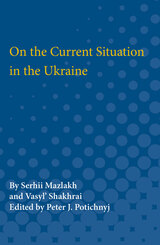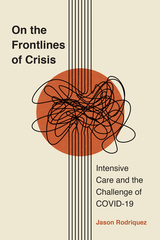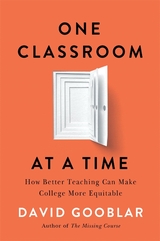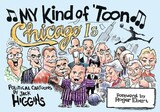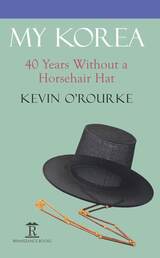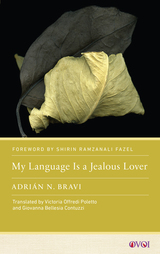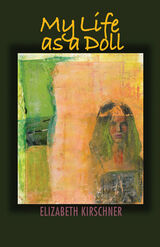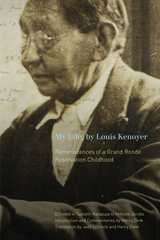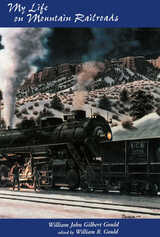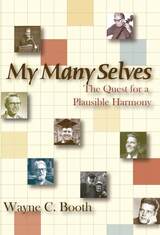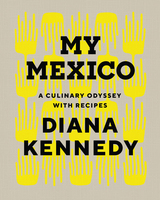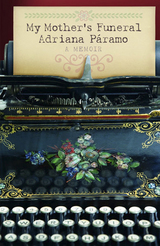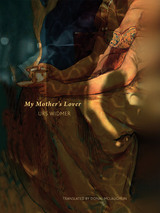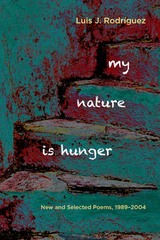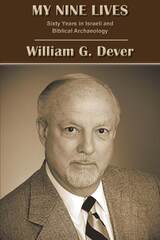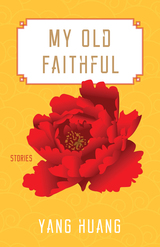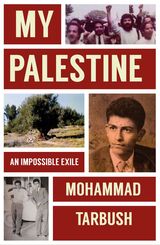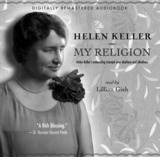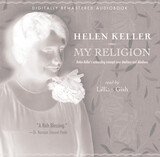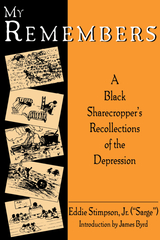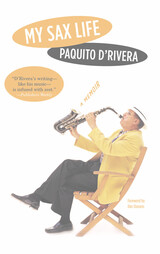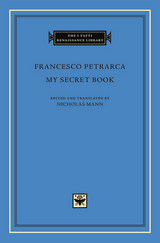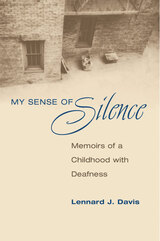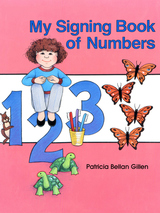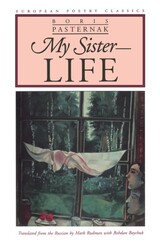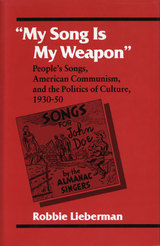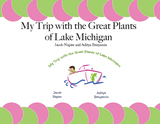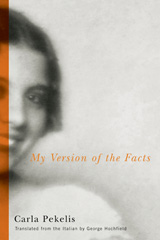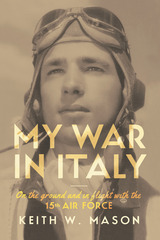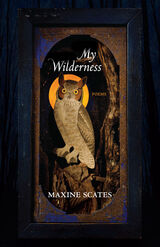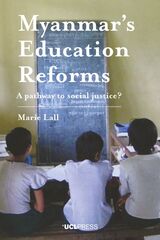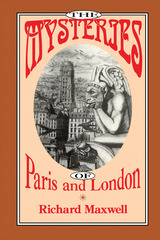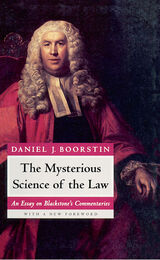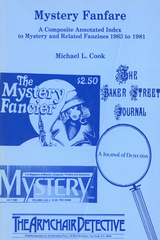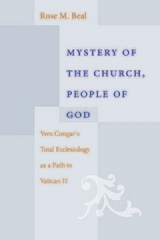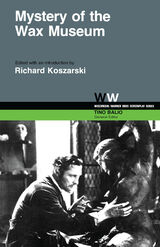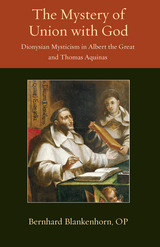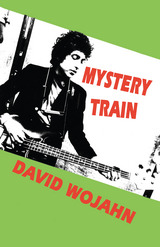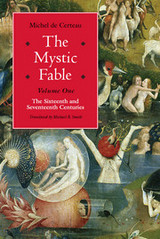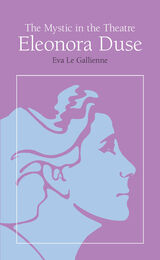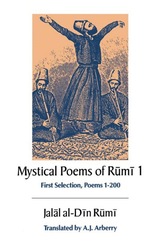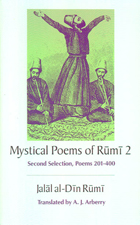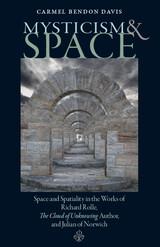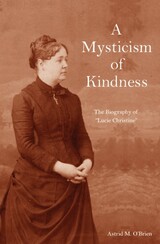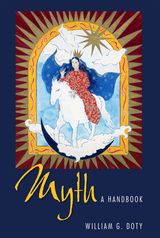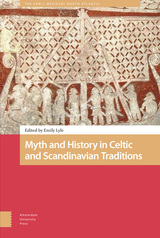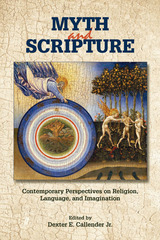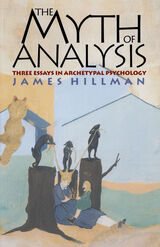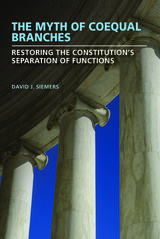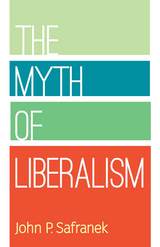My Kind of 'Toon, Chicago Is: Political Cartoons
Jack Higgins
Northwestern University Press, 2009 An institution at the Chicago Sun-Times, his home paper for more than twenty–five years, Pulitzer Prize-winning editorial cartoonist Jack Higgins gathers for the first time in My Kind of ’Toon (Chicago Is) approximately 250 editorial and political cartoons. Over the years, he has filed syndicated cartoons from the Soviet Union, Hungary, Ireland, and Cuba. From his front-row seat he has lately focused on the highs and lows of the Chicago and Illinois politics that produced both the first African American president and a string of corrupt gubernatorial administrations.
 My Kind of Transit: Rethinking Public Transportation
Darrin Nordahl
Island Press, 2009 In My Kind of Transit, Darrin Nordahl argues that like life itself, transportation isn't only about the destination, but the journey. Public transit reduces traffic and pollution, yet few of us are willing to get out of our cars and onto subways and buses. But Nordahl demonstrates that when using public transit is an enjoyable experience, tourists and commuters alike willingly hand in their keys. The trick is creating a system that isn't simply a poor imitation of the automobile, but offers its own pleasures and comforts. While a railway or bus will never achieve the quiet solitude of a personal car, it can provide, much like a well-designed public park, an inviting, communal space. My Kind of Transit is an animated tour of successful transportation systems, offering smart, commonsense analysis of what makes transit fun. Nordahl draws on examples like the iconic street cars of New Orleans and the picturesque cable cars in San Francisco, illustrating that the best transit systems are uniquely tailored to their individual cities. He also describes universal principles of good transit design.
Nordahl's humanistic treatment will help planners, designers, transportation professionals, and policymakers create transit systems the public actually wants to ride. And it will introduce all readers to delightful ways of getting from point A to point B.
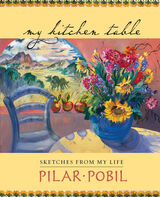 My Kitchen Table: Sketches from My Life
Pilar Pobil
University of Utah Press, 2007 Pilar Pobil was born on the island of Mallorca, off the Mediterranean coast of Spain, and it was there that she first learned to love the colors that suffuse her art. The tales contained here are those she later related to her own children around the kitchen table; many of them describe her childhood and young adulthood in Mallorca, filled with mystery and excitement, privilege and deprivation, and always a fierce will to face life on her own terms.
Other stories describe her meeting in Mallorca with the Utah man who would become her husband, her journey to a faraway country, the birth of her children, and her discovery of her artistic impulses and abilities. All are woven with the threads of color and culture of her two homes. Filled with wit and insight, My Kitchen Table reveals foremost the voice of a woman determined to be true to herself and to her art.
Accompanying the narrative are some fifty color reproductions of the paintings and sculptures for which Pilar Pobil has become known. This is a volume that art lovers everywhere will treasure.
"Like her paintings, Pilar’s stories overflow their pages. They fold us into their embrace, so we feel and see her dancing in and out of our minds, a curious and mischievous child, a young woman in love coming to a foreign land with a foreign culture and tongue, the heartbreak of her losses, and the continual renewals that have ripened her art. Pilar’s book, like her house, is a magic kingdom and she is the fairy princess who presides. She paints her shoes for social engagements. The seats of her chairs beam faces. Her electrical wiring metamorphoses into fantastic snakes. The garden that leads to her studio is Salt Lake City’s Giverny. Paintings are everywhere and talk to each other with glittering non sequiturs. At the center of it all is her kitchen table, the place from which she serves the voices and visions of her life. The subtleties of her telling, like the bold clarity of her judgments, are those of an artist whose inspirations are a feast she graciously invites us to share."
— from the Foreword by Robert D. Newman, Dean of the College of Humanities, University of Utah
A finalist for the Utah Book Award in Nonfiction.
My Korea: 40 Years Without a Horsehair Hat
Kevin O'Rourke
Amsterdam University Press, 2013 My Korea: Forty Years Without a Horsehair Hat is a cultural introduction to Korea, part memoir and part miscellany, which introduces traditional and contemporary culture through a series of essays, stories, anecdotes and poems. The book seeks to tell the reader all that he or she needs to know for a full and rewarding life in Korea or as a visitor passing through. Confucianism, Buddhism, relationships, everyday living, language and literature are comprehensively covered. Newcomers to Korea are provided with insights into daily life. They are told how to deal with people and the intricacies of honorific language, how to handle business dealings, how to be comfortable with social ranking, and how to react when they bump into the cultural wall.
My Language Is a Jealous Lover
Adrián N. Bravi
Rutgers University Press, 2023 Many great writers have been fluent in multiple languages but have never been able to escape their mother tongue. Yet if a native language feels like home, an adopted language sometimes offers a hospitality one cannot find elsewhere.
My Language Is a Jealous Lover explores the plights and successes of authors who lived and wrote in languages other than their mother tongue, from Samuel Beckett and Vladimir Nabokov to Ágota Kristóf and Joseph Brodsky. Author Adrián N. Bravi weaves their stories in with his own experiences as an Argentinian-Italian, thinking and writing in the language of his new life while recalling that of his childhood. Bravi bears witness to the frustrations, the soul-searching, the pain, and the joys of embracing another language.
My Life as a Doll
Elizabeth Kirschner
Autumn House Press, 2008 Kirschner's fourth collection of poetry is a narrative of an abused childhood. It explores the inner landscapes of memory through stunning imagery and voice.
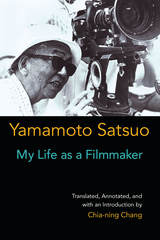 My Life as a Filmmaker
Yamamoto Satsuo; Translated, Annotated, and with an Introduction by Chia-ning Chang
University of Michigan Press, 2017 In his posthumous autobiography, Watakushi no eiga jinsei (1984), Yamamoto reflects on his career and legacy: beginning in the prewar days as an assistant director in a well-established film company under the master Naruse Mikio, to his wide-ranging experiences as a filmmaker, including his participation in the tumultuous Toho Labor Upheaval soon after Japan’s defeat in World War II and his struggles as an independent filmmaker in the 1950s and 1960s before returning to work within the mainstream industry. In the process, he established himself as one of the most prominent and socially engaged film artists in postwar Japan. Imbued with vibrant social realism and astute political commentary, his filmic genres ranged widely from melodramas, period films from the Tokugawa era, samurai action jidaigeki, social satires, and antiwar films. Providing serious insights into and trenchant critique of the moral corruption in Japanese politics, academe, industry, and society, Yamamoto at the same time produced highly successful films that offered drama and entertainment for Japanese and international moviegoers. His considerable artistic distinction, strong social and political consciousness, and filmic versatility have earned him a unique and distinguished position among Japan’s world-class film directors.
In addition to detailed annotations of the autobiography, translator Chia-ning Chang offers a comprehensive introduction to the career and the significance of Yamamoto and his works in the context of Japanese film history. It contextualizes Yamamoto’s life and works in the historical and cultural zeitgeist of prewar, wartime, and postwar Japan before scrutinizing the unique qualities of his narrative voice and social conscience as a film artist.
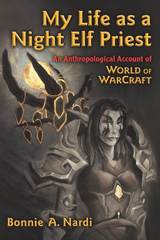 My Life as a Night Elf Priest: An Anthropological Account of World of Warcraft
Bonnie A. Nardi
University of Michigan Press, 2010 "Ever since the creators of the animated television show South Park turned their lovingly sardonic gaze on the massively multiplayer online game World of Warcraft for an entire episode, WoW's status as an icon of digital culture has been secure. My Life as a Night Elf Priest digs deep beneath the surface of that icon to explore the rich particulars of the World of Warcraft player's experience."
—Julian Dibbell, Wired "World of Warcraft is the best representative of a significant new technology, art form, and sector of society: the theme-oriented virtual world. Bonnie Nardi's pioneering transnational ethnography explores this game both sensitively and systematically using the methods of cultural anthropology and aesthetics with intensive personal experience as a guild member, media teacher, and magical quest Elf."
—William Sims Bainbridge, author of The Warcraft Civilization and editor of Online Worlds “Nardi skillfully covers all of the hot button issues that come to mind when people think of video games like World of Warcraft such as game addiction, sexism, and violence. What gives this book its value are its unexpected gems of rare and beautifully detailed research on less sensationalized topics of interest such as the World of Warcraft player community in China, game modding, the increasingly blurred line between play and work, and the rich and fascinating lives of players and player cultures. Nardi brings World of Warcraft down to earth for non-players and ties it to social and cultural theory for scholars. . . . the best ethnography of a single virtual world produced so far.”
—Lisa Nakamura, University of Illinois World of Warcraft rapidly became one of the most popular online world games on the planet, amassing 11.5 million subscribers—officially making it an online community of gamers that had more inhabitants than the state of Ohio and was almost twice as populous as Scotland. It's a massively multiplayer online game, or MMO in gamer jargon, where each person controls a single character inside a virtual world, interacting with other people's characters and computer-controlled monsters, quest-givers, and merchants. In My Life as a Night Elf Priest, Bonnie Nardi, a well-known ethnographer who has published extensively on how theories of what we do intersect with how we adopt and use technology, compiles more than three years of participatory research in Warcraft play and culture in the United States and China into this field study of player behavior and activity. She introduces us to her research strategy and the history, structure, and culture of Warcraft; argues for applying activity theory and theories of aesthetic experience to the study of gaming and play; and educates us on issues of gender, culture, and addiction as part of the play experience. Nardi paints a compelling portrait of what drives online gamers both in this country and in China, where she spent a month studying players in Internet cafes. Bonnie Nardi has given us a fresh look not only at World of Warcraft but at the field of game studies as a whole. One of the first in-depth studies of a game that has become an icon of digital culture, My Life as a Night Elf Priest will capture the interest of both the gamer and the ethnographer. Bonnie A. Nardi is an anthropologist by training and a professor in the Department of Informatics in the Donald Bren School of Information and Computer Sciences at the University of California, Irvine. Her research focus is the social implications of digital technologies. She is the author of A Small Matter of Programming: Perspectives on End User Computing and the coauthor of Information Ecologies: Using Technology with Heart and Acting with Technology: Activity Theory and Interaction Design. Cover art by Jessica Damsky
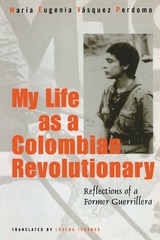 My Life As A Revolutionary: Reflections Of A Former Guerrillera
Maria Eugenia Vasquez Perdomo
Temple University Press, 2005 In My Life as a Colombian Revolutionary, María Eugenia Vásquez Perdomo presents a gripping account of her experiences as a member of M-19, one of the most successful guerrilla movements in Colombia's tumultuous modern history. Vásquez's remarkable story opens with her happy childhood in a middle-class provincial household in which she was encouraged to be adventurous and inquisitive. As an eighteen-year-old university student in Bogotá, María Eugenia embraced radical politics and committed herself to militant action to rid her country of an abusive government. Dedicated and daring, Vásquez took part in some of the M-19's boldest operations in the 1970s and 1980s and became one of its leaders. She was able to avoid detection for nearly twenty years in the movement because she was both clever and considered too attractive to be a guerrillera. Her vivid narrative brings to life the men and women who were her comrades and conveys their anxiety and exhilaration as they carried out their actions. When she tells of her love affairs with some of M-19's top leaders, she cannot separate romance from camaraderie or escape a sense of impending tragedy. If Vásquez gave us only a rare insider's account of youth culture and a guerrilla movement in a Latin American country, this would be a book well worth reading. But she also gives us an unsparing analysis of what it meant to be a woman in the movement and how much her commitment to radical politics cost her.
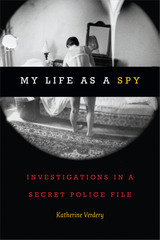 My Life as a Spy: Investigations in a Secret Police File
Katherine Verdery
Duke University Press, 2018 As Katherine Verdery observes, "There's nothing like reading your secret police file to make you wonder who you really are." In 1973 Verdery began her doctoral fieldwork in the Transylvanian region of Romania, ruled at the time by communist dictator Nicolae Ceausescu. She returned several times over the next twenty-five years, during which time the secret police—the Securitate—compiled a massive surveillance file on her. Reading through its 2,781 pages, she learned that she was "actually" a spy, a CIA agent, a Hungarian agitator, and a friend of dissidents: in short, an enemy of Romania. In My Life as a Spy she analyzes her file alongside her original field notes and conversations with Securitate officers. Verdery also talks with some of the informers who were close friends, learning the complex circumstances that led them to report on her, and considers how fieldwork and spying can be easily confused. Part memoir, part detective story, part anthropological analysis, My Life as a Spy offers a personal account of how government surveillance worked during the Cold War and how Verdery experienced living under it.
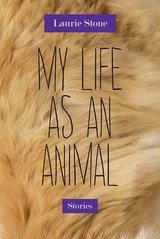 My Life as an Animal: Stories
Laurie Stone
Northwestern University Press, 2017 A woman meets a man and falls in love. She is sixty, a writer and lifelong New Yorker raised by garmentos. She thought this kind of thing wouldn’t happen again. He is English, so who knows what he thinks. He is fifty-six, a professor now living in Arizona, the son of a bespoke tailor. As the first of Laurie Stone’s linked stories begins, the writer contemplates what life would be like in the desert with the professor. As we learn how she became the person she is, we also come to know the artists and politics of the downtown scene of the ’70s, ’80s, and ’90s, a cultural milieu that remains alive in her. In sharply etched prose, Stone presents a woman constantly seduced by strangers, language, the streets— even a wildlife trail. Her characters realize that they feel at home in dislocation—in always living in two places at the same time: east and west, past and present, the bed and the grave (or copper urn). Love may not last, the writer knows. Then again, when has anything you thought about the future turned out right?
My Life, by Louis Kenoyer: Reminiscences of a Grand Ronde Reservation Childhood
Louis Kenoyer
Oregon State University Press, 2017 Louis Kenoyer, born in 1868 at Grand Ronde reservation, Oregon, was the last known native speaker of Tualatin Northern Kalapuya. His autobiographical narrative was recorded in 1928 and 1936 and is archived in the Special Collections of the University of Washington Library. Kenoyer's autobiography is a rare, first-person narrative by a Native American discussing life on an Oregon reservation. To bring his compelling story to contemporary readers, Henry Zenk and Jedd Schrock have completed a translation of the original Tualatin narrative and prepared extensive annotations and commentary to supplement the text. The original Tualatin is presented alongside the English translation.
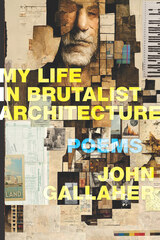 My Life in Brutalist Architecture
John Gallaher
Four Way Books, 2024 As John Gallaher prefaces this book, “It should have been an easy story to sort out, but it took fifty years.” My Life in Brutalist Architecture confronts the truth of the author’s adoption after a lifetime of concealment and deceptions with lucid candor, startling humor, and implacable grief. Approaching identity and family history as a deliberate architecture, Gallaher’s poems illuminate how a simple exterior can obscure the structural bricolage and emotional complexity of its inner rooms. This collection explores — and mourns — the kaleidoscopic iterations of potential selves as prismed through our understanding of the past, a shifting light parsed by facts, memories, and a family’s own mythology. The agonizing beauty of My Life in Brutalist Architecture is its full embrace of doubt, a jack that makes space for repair even as it wrenches one apart. After his daughter’s birth, the author considers the only picture of himself before the adoption, captioned “Marty, nine mos.” In legal documentation, in the photographic archive, this child no longer exists. “I appear next as John, three-and- a-half,” Gallaher writes, “and Marty disappears, a ghost name.” “And so, then, what does the self consist of?” he asks. The answer is, necessarily, no answer. “The theme is time. The theme is unspooling,” Gallaher summarizes, testifying to a story’s inability to recover the past or isolate its meaning. Equal parts reckoning and apologia, Gallaher’s latest work disrupts the notion that what you don’t know can’t hurt you, attesting to the irrevocable harm of silence, while offering mercy in its recognition of our guardians as deeply flawed conduits of care. Referencing Vitruvius’s foundational elements of architecture (firmitas, utilitas, and venustas, or solidity, usefulness, and beauty), Gallaher fuses an elegy and an ode to family when he writes “that in the third principle of architecture, / they bathe you and feed you. You won’t remember. // And they know this.” Gallaher’s lyricism encapsulates this, humanity’s consummate tragedy and profoundest grace — that love, even when forgotten, persists.
My Life in Medicine: A Hong Kong Journey
Kwok-Yung Yuen
Hong Kong University Press, 2024 A memoir from a medical hero and political advisor who faced immense public and personal challenges during SARS and the COVID-19 pandemic.
From humble beginnings in Hong Kong, Yuen Kwok-Yung rose to international prominence as a doctor, surgeon, academic, and microbiologist. As an advisor to governments, he and colleagues made discoveries that helped the world cope with unprecedented threats to public health, including the COVID-19 pandemic. In this compelling memoir, Dr. Yuen weaves personal stories with those from his extraordinary medical career to take readers on an inspiring journey about perseverance, courage, faith, and the ongoing peril of infectious diseases.
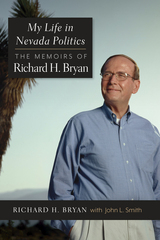 My Life in Nevada Politics: The Memoirs of Senator Richard H. Bryan
Richard H. Bryan
University of Nevada Press, 2024 My Life in Nevada Politics tells the entertaining, informative, and at times poignant story of the rise of Richard Bryan from humble beginnings in Las Vegas to the pinnacle of Nevada politics during a time of great change across the state and nation. Through his memoir, Bryan provides keen insight into the mechanics of politics, and the book serves as a must-read for anyone interested in the history of the Silver State.
Born in Washington, D.C. in 1937, Bryan grew up in Las Vegas. His interest in politics started early, winning school-class elections and expressing a personal goal of one day becoming Governor of Nevada. He was elected student body president at the University of Nevada.
His career in public service began as a deputy district attorney in Clark County. In 1966, he became the first county public defender in state history. Bryan served in the Nevada Legislature in both the Assembly and Senate before winning the statewide office of Attorney General in 1978. He was elected Nevada Governor in 1982, winning re-election in 1986. Bryan was elected to the U.S. Senate in 1988, reelected in 1994, and served on the committees on Commerce, Banking, Taxation, and Intelligence, and chaired the Ethics Committee. He retired from the Senate in 2001 and returned to Nevada.
Bryan’s list of accomplishments is extensive. He was largely responsible for the early call-to-arms in the fight against the Department of Energy’s attempt to create a nuclear waste repository at Yucca Mountain. As governor, he reorganized state economic development programs, improved environmental protections for Lake Tahoe and other threatened areas, and made unprecedented appointments of women. In the Senate, Bryan authored the Southern Nevada Public Lands Management Act and the National Conservation Area for the High Rock Desert country. He had a front-row seat to the historic buildup to the Iraq War and the impeachment of President Bill Clinton. In retirement, Bryan continues to serve the state through his participation on a wide range of committees.
Throughout his political career, Bryan, with wife Bonnie at his side, traversed Nevada from its tiniest hamlets to the metro areas of Reno and Las Vegas with unrivaled zeal in his efforts to represent the state’s citizens. He is famous for knowing thousands of his constituents not only by their first names, but also recalling details of their lives. The simple fact is, while in service to Nevada, Bryan was in his element in the place he loves best.
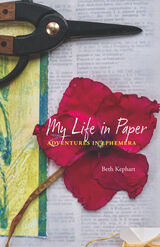 My Life in Paper: Adventures in Ephemera
Beth Kephart
Temple University Press, 2023 Paper both shapes and defines us. Baby books, diaries, sewing patterns, diplomas, resumes, letters, death certificates—we find our stories in them. My Life in Paper is Beth Kephart’s memoiristic exploration of the paper legacies we forge and leave.
Kephart’s obsession with paper began in the wake of her father’s death, when she began to handcraft books and make and marble paper in his memory. But it was when she read My Life with Paper, an autobiography by the late renowned paper hunter and historian Dard Hunter, that she felt she had found a kindred spirit, someone to whom she might address a series of one-sided letters about life and how we live it. Remembering and crafting, wanting and loving, doubting and forgetting—the spine and weave of My Life in Paper came into view.
Paper, for Kephart, provides proof of our yearning, proof of our failure, proof of the people who loved us and the people we have lost. It offers, too, a counterweight to the fickle state of memory.
My Life in Paper, illustrated by the author herself, is an intimate and poignant meditation on life’s most pressing questions.
 My Life in the PLO: The Inside Story of the Palestinian Struggle
Shafiq Al-Hout
Pluto Press, 2011 This is the inside story of the Palestine Liberation Organisation (PLO), from its beginnings in 1964 to the signing of the Oslo agreement in 1993.
For over three decades, the main goal of the PLO was to achieve a just peace in the Arab-Israeli conflict, and to build a democratic state in Palestine for all its citizens. Shafiq Al-Hout, a high ranking PLO official until his resignation in 1993, provides previously unavailable details on the key events in its history such as its recognition by the UN and the Oslo peace negotiations. Taking us right to the heart of the decision making processes, this book explains the personalities and internal politics that shaped the PLO's actions and the Palestinian experience of the twentieth century.
Although he was an insider, Al-Hout's book does not shy from analysing and criticising decisions and individuals, including Yasser Arafat. This book is an essential piece of history that sheds new light on the significance of the PLO in the Palestinian struggle for justice.
 My Life in Vaudeville: The Autobiography of Ed Lowry
Ed Lowry, Edited by Paul M. Levitt
Southern Illinois University Press, 2011 Normal0falsefalsefalseEN-USX-NONEX-NONE An entertaining record of a life and a time Ed Lowry joined the vaudeville circuit in 1910 at the age of fourteen. He never achieved stardom equal to the likes of Fred Allen, Jack Benny, George Burns, Buster Keaton, or Eddie Cantor, and he never considered himself an “artiste.” Instead, he saw himself as a hoofer and comic simply trying to make a living on the vaude scene. My Life in Vaudeville recounts Lowry’s long career in entertainment from the viewpoint of a foot soldier with a big dream. Lowry’s story begins in the heyday of vaudeville in the early twentieth century and follows its gradual decline. Unlike many of his associates, he recognized that movies and other forms of entertainment were the future, and thus branched out into other venues. He took gigs in radio in Philadelphia, Newark, New York, and Los Angeles; explored revues, cabarets, burlesque, and film; and organized USO road shows. With wit and perception, he reveals his stage roots as an entertainer playing to his audience, and editor Paul M. Levitt’s introduction beautifully sets the stage for Lowry’s gags-to-riches tale, providing much-needed historical perspective. My Life in Vaudeville is an unpretentious record of a time when thousands of young people went into show business to escape the boredom of daily life, and Lowry’s story is a view of vaudeville not often encountered. Lowry does much more than recall the daily life of a working actor, musician, and comedian. His story brings vaudeville to life and places it within the larger narratives of popular culture and popular entertainment of the twentieth century.
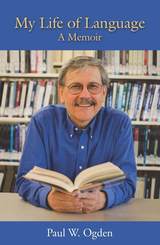 My Life of Language: A Memoir
ogden
Gallaudet University Press, 2017 Content Notice: ableism, mental illness, and suicide
Paul W. Ogden has dedicated his life to educating young deaf and hard of hearing people and raising awareness of what it means to be deaf in a hearing world. He has taught and mentored a generation of teachers, and his classic volume, The Silent Garden, has served as a guide for parents and educators for over thirty years. Now he tells his personal story of challenges faced and lessons learned, revealing that the critical, guiding factors for him have always been language and successful communication.
Born in a time when many deaf children had no access to language, Paul learned spoken and written language skills at a young age through the painstaking efforts of his mother. His tight-knit family, which included one deaf and two hearing older brothers, facilitated open and constant communication using a variety of methods. His father was a pastor who was involved in the civil rights movement. He struggled with depression, an illness that would take the life of one of Paul’s brothers. As a student at a residential deaf school where the use of American Sign Language (ASL) was suppressed, Paul continued to build on the speech and lipreading skills he had learned at home. He returned home for high school and graduated as co-valedictorian—unaware of the standing ovation he received as he walked to the podium.
Following a rewarding experience as an undergraduate at Antioch College, Paul went on to earn a PhD from the University of Illinois, a rare accomplishment for a deaf person at that time. During his graduate studies, he finally had the opportunity to learn ASL. As an award-winning professor of Deaf Studies at California State University, Fresno, he successfully petitioned for the university to recognize ASL as a language, and he established the Silent Garden program, which has grown into a flourishing provider of training and resources to support the Deaf community. In My Life of Language, Paul offers eloquent reflections on both the joyful and difficult periods of his life as he navigated relationships, faced discrimination, questioned his faith, and found great happiness in his marriage.
My Life On Mountain Railroads
William Gould
Utah State University Press, 1995 In 1917, Gilbert Gould achieved his dream to be an engineer, and began running engines for the Denver & Rio Grande and later for the Utah Railway. He was a natural storyteller, and his recollections are entertaining and historically rewarding.
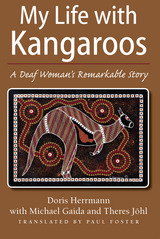 My Life with Kangaroos: A Deaf Woman’s Remarkable Story
Doris Herrmann
Gallaudet University Press, 2013 Doris Herrmann was born deaf in 1933 in Basel, Switzerland, and from the age of three, she possessed a mystical attraction to kangaroos. She recalls seeing them at that age for the first time at the Basel Zoo, and spending every spare moment visiting them from then on. Eventually, her fascination grew into passionate study of their behavior. Her dedication caught the attention of the zookeepers who provided her greater access to these extraordinary animals. Despite her challenges with communication, Herrmann wrote a scientific paper about the kangaroo’s pouch hygiene when raising a joey. Soon, experts from around the world came to visit this precocious deaf girl who knew about kangaroos.
Herrmann appreciated the opportunities opening up to her, but her real dream was to travel to Australia to study kangaroos in the wild. For years she worked and yearned, until Dr. Karl H. Winkelsträter a renowned authority on kangaroos, suggested an independent study in Australia at a place called Pebbly Beach. In 1969, at the age of 35, Herrmann finally traveled to the native land of kangaroos. During the next four decades, she would make many more trips to observe and write about kangaroos.
My Life with Kangaroos explores every facet of Herrmann’s connection to these engaging marsupials. Her single-minded devotion not only made her a leading self-made scholar on kangaroos, it transformed her own personality and her relationships with others. As she forged bonds with kangaroos named Dora, Jacqueline, Manuela, and many others, she engendered great affection and respect in the people around her, truly a remarkable story of success.
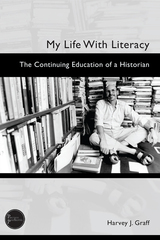 My Life with Literacy: The Continuing Education of a Historian
Harvey J. Graff
University Press of Colorado, 2025 Calling My Life With Literacy a “new intersectionality,” Harvey J. Graff explores both overarching and underlying patterns that connected his development and lived experience from childhood to and through his retirement from the academy. He considers the inextricable interconnections of personal experiences and relationships; the political, broadly defined to include life-shaping contexts and historical events, influences, values, commitments, and experiences; the social, intellectual, and political dimensions of academics and scholarship—a life of learning and using literacy and literacies; and the circumstances of living in six major cities and studying and then teaching in five universities. Graff’s pioneering scholarship in the history of literacy and literacy studies provides both the frame and the foundation for his work in the history of children and youth; the history of cities; higher education past, present, and future; and interdisciplinarity itself.
 My Life with President Kennedy
Christopher Clausen
University of Iowa Press, 1994 As its title implies, this book reflects in varying ways the experiences and attitudes of one who came of age in the first half of that now mythical decade, the 1960s. In an unusual combination of history, criticism, and autobiography, one of our best literary and cultural critics explores life and death in the late twentieth century and some of the older worlds that made American culture what it is today. Sixties survivors, as Christopher Clausen points out, do not necessarily hold more beliefs or tastes in common than any other group. Nevertheless they may be more likely than most people born earlier or later to consider the relations between public and private life—the political and the personal—a problem, sometimes even an unresolvable problem. While this is not primarily a book about the 1960s, most of it occupies the noisy crossroads where public worlds intersect the private, mysterious lives of individuals and families, where ordinary people pursue their own destinies and desires while submitting consciously or unconsciously to the pressures of the public sphere—a set of demands or aspirations common to people in a particular time and place. In modern America, where most of these essays are set, any individual is likely to live in several worlds at any given moment, as well as to pass through several more over a lifetime. Because of rapid transitions in public life and culture while they were still at an impressionable age, members of the “Kennedy generation” became almost morbidly conscious of the persistence of the past in the present. The often unpredictable effect on individual lives of historical forces is the main subject of Clausen's fascinating account.
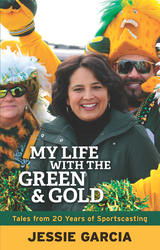 My Life with the Green & Gold: Tales from 20 Years of Sportscasting
Jessie Garcia
Wisconsin Historical Society Press, 2013 Ever wonder what it’s like to interview famous athletes and coaches? For twenty years, sportscaster Jessie Garcia has done just that. In My Life with the Green & Gold she brings fans to the sidelines at Lambeau Field, inside the locker room, aboard the Packers bus, and into the host’s chair at The Mike McCarthy Show. A self-proclaimed “terrible athlete” born without sports in her blood, Garcia reported on Wisconsin’s beloved Green Bay Packers during the Holmgren, Rhodes, Sherman, and McCarthy years. She’s been a Packers sideline reporter for preseason games and covered the team during their Super Bowl showdowns against the Patriots, Broncos, and Steelers. She’s traveled with the team to Tokyo and the White House and to schools and retirement homes, where the gridiron heroes interacted with their fans. She’s visited the hometowns of players and coaches, she’s met their proud parents and their pets, she’s interviewed the team trainer about their strength exercises. My Life with the Green & Gold also features up-close and personal stories about other teams and athletes she’s covered, from the Badgers and Brewers to Wisconsin Olympians such as Bonnie Blair and Casey FitzRandolph. Garcia’s expertise is capturing behind-the-scenes, human-interest stories. In My Life with the Green & Gold, she shares a personal and humorous insider’s look at many Wisconsin sports heroes from the perspective of a female sports journalist who has ridden the adrenaline rush to be on the air at 5:00 a.m., 10:00 p.m., and any hour in between, while also juggling the many demands of family life. Not many parents can say they’ve changed their child’s diaper in the tunnel at Lambeau, but Jessie Garcia can.
 My Life with Things: The Consumer Diaries
Elizabeth Chin
Duke University Press, 2016 Unconventional and provocative, My Life with Things is Elizabeth Chin's meditation on her relationship with consumer goods and a critical statement on the politics and method of anthropology. Chin centers the book on diary entries that focus on everyday items—kitchen cabinet knobs, shoes, a piano—and uses them to intimately examine the ways consumption resonates with personal and social meaning: from writing love haikus about her favorite nail polish and discussing the racial implications of her tooth cap, to revealing how she used shopping to cope with a miscarriage and contemplating how her young daughter came to think that she needed Lunesta. Throughout, Chin keeps Karl Marx and his family's relationship to their possessions in mind, drawing parallels between Marx's napkins, the production of late nineteenth-century table linens, and Chin's own vintage linen collection. Unflinchingly and refreshingly honest, Chin unlocks the complexities of her attachments to, reliance on, and complicated relationships with her things. In so doing, she prompts readers to reconsider their own consumption, as well as their assumptions about the possibilities for creative scholarship.
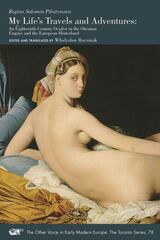 My Life's Travels and Adventures: An Eighteenth-Century Oculist in the Ottoman Empire and the European Hinterland
Regina Salomea Pilsztynowa
Iter Press, 2020 In her never-finished My Life’s Travels and Adventures, the eighteenth-century Polish doctor Regina Salomea Pilsztynowa plays a myriad of roles, including child bride, wife, mother, lover, adventuress, slave trader, writer, and home-taught physician. She successfully carved out a viable niche for herself, navigating the multicultural, multiethnic, and varied religious environment of Europe’s eastern periphery. Despite limited expectations for female professionals, she became a highly sought after and well-respected practitioner of the medical arts and rose to the position of court physician to Turkish pashas and Hungarian princes, and even to Sultan Mustafa III. My Life’s Travels and Adventures—part memoir, part autobiography, and part travelogue—provides a view into eighteenth-century social, professional, and gender interactions and weaves a rich narrative replete with vignettes of love, travel, and popular superstitions important to our historical, ethnographic, and religious understanding of the era.
This edition brings the entirety of this personal and idiosyncratic memoir to English for the first time.
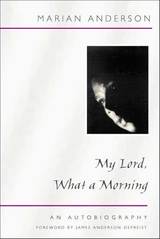 My Lord, What a Morning: An Autobiography
Marian Anderson
University of Illinois Press, 2002 My Lord, What a Morning is a gentle and engrossing memoir, abounding with the tender and inspiring stories of Marian Anderson's life in her own modest words. From her humble but proud beginnings in south Philadelphia to international vocal renown, the legendary contralto writes of triumph and adversity, of being grounded in faith and surrounded by family, and of the music that shaped her career. Anderson published My Lord, What a Morning in 1956 on the heels of her groundbreaking role as the first African American to perform at the Metropolitan Opera. In it are bittersweet reminiscences of a working-class childhood, from her first job scrubbing the neighbors' steps to the sorrow and upheaval of her father's untimely death. Here are the stories of a young girl with prodigious talent and her warm remembrances of the teachers, managers, friends, accompanists, and fans who worked to foster it. In addition, she provides a veritable travelogue of her concerts across the globe and rare glimpses at the personal life of a woman more concerned with family than celebrity. With eleven photographs and a touching new foreword by Anderson's nephew, famed conductor and poet James DePreist, this edition of My Lord, What a Morning revives the classic portrait of a musical legend who was resilient in the bullying face of bigotry and gracious in the unfaltering glow of fame.
My Many Selves: The Quest for a Plausible Harmony
Wayne C. Booth
Utah State University Press, 2006 His memoir, My Many Selves, is both an incisive self-examination and a creative approach to retelling his life. Writing his autobiography became a quest to harmonize the diverse, discordant parts of his identity and resolve the conflicts in what he thought and believed. To see himself clearly and whole, he broke his self down, personified the fragments, uncovered their roots in his life, and engaged his multiple identities and experiences in dialogue. Basic to his story and to its lifelong concerns with ethics and rhetoric was his youth in rural Utah. He valued that background, while acknowledging its ambiguous influence on him, and continued to identify himself as Mormon, though he renounced most Latter-day Saint doctrines. Wayne Booth died in October 2005, soon after completing work on his autobiography.
My Mexico: A Culinary Odyssey with Recipes
By Diana Kennedy
University of Texas Press, 2013 By universal acclaim, Diana Kennedy is the world’s authority on the authentic cuisines of Mexico. For decades, she has traveled the length and breadth of the country, seeking out the home cooks, local ingredients, and traditional recipes that make Mexican cuisines some of the most varied and flavorful in the world. Kennedy has published eight classic Mexican cookbooks, including the James Beard Award-winning Oaxaca al Gusto. But her most personal book is My Mexico, a labor of love filled with more than three hundred recipes and stories that capture the essence of Mexican food culture as Kennedy has discovered and lived it. First published in 1998, My Mexico is now back in print with a fresh design and photographs—ready to lead a new generation of gastronomes on an unforgettable journey through the foods of this fascinating and complex country.
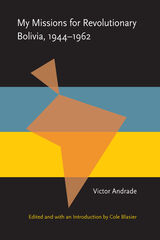 My Missions for Revolutionary Bolivia, 1944-1962
Victor Andrade
University of Pittsburgh Press, 1976 Victor Andrade, Bolivian ambassador to the United States at various times between 1944 and 1962, recounts a unique Latin American perspective on U.S. politics and foreign policy. He describes meetings with Roosevelt, Truman, Eisenhower, and with the many journalists, cabinet members, senators, and House members who were part of his daily work in the world of Washington politics.
Andrade first came to Washington as ambassador in 1944, representing a young revolutionary government determined to check the power of the Bolivian tin barons who had dominated the country for decades. After his government was overthrown, he spent six years in exile, and returned to Washington when the Movimiento Nacionalista Revolucionario resumed power in 1952. His deep understanding of Washington's massive political and bureaucratic establishment, combined with his renowned charm, resourcefulness, and perseverance, gave him the ability to negotiate massive economic and military aid for the development of the country. It also allows him to present a candid, knowledgeable inside view of U.S.-Bolivian relations through these years which will at times make U.S. readers proud and at times ashamed.
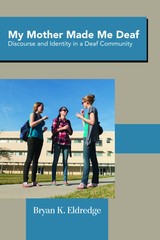 My Mother Made Me Deaf: Discourse and Identity in a Deaf Community
Bryan K. Eldredge
Gallaudet University Press, 2017 The term deaf often sparks heated debates about authority and authenticity. The concept of Deaf identity and affiliation with the DEAF-WORLD are constantly negotiated social constructions that rely heavily on the use of American Sign Language. However, given the incredible diversity of Deaf people, these constructions vary widely. From Deaf people born into culturally Deaf families and who have used ASL since birth, to those born into hearing families and for whom ASL is a secondary language (if they use it at all), to hearing children of Deaf adults whose first language is ASL, and beyond, the criteria for membership in the Deaf community is based on a variety of factors and perspectives.
Bryan K. Eldredge seeks to more precisely understand the relationship between ASL use and Deaf identity using the tools of linguistic anthropology. In this work, he presents research resulting from fieldwork with the Deaf community of Utah Valley. Through informal interactions and formal interviews, he explores the role of discourse in the projection and construction of Deaf identities and, conversely, considers how ideas about language affect the discourse that shapes identities. He finds that specific linguistic ideologies exist that valorize some forms of language over others and that certain forms of ASL serve to establish a culturally Deaf identity. My Mother Made Me Deaf demonstrates that the DEAF-WORLD consists of a multitude of experiences and ways of being even as it is bound together by certain essential elements that are common to Deaf people.
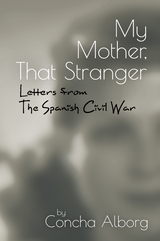 My Mother, That Stranger: Letters from the Spanish Civil War
Concha Alborg
Sussex Academic Press, 2022 Over eight-hundred letters were written between the author's newly-engaged parents during the time that her father was on the Republican war front fighting against Franco's forces, and her mother awaiting the end of the war. Her father, Professor Juan Luis Alborg, would live to become a well-known literary historian and critic. Her mother's life, on the other hand, was overshadowed by her husband's academic celebrity. The letters were discovered whilst preparing for a symposium marking the centenary of her father's birth, celebrated at the University of Malaga in 2014. This unique memoir is a micro-history of the Spanish Civil War at an individual level; it illuminates the 'official story' as told in history books at multiple levels. Her mother's personal narrative adds to the understanding of this significant time because she shows how a family lived in the midst of war. A primary relevance is that she lived in Valencia, which in November 1936 become the official capital of the Republican government. Working in a government co-op gave her an insider's view of the ongoing political and military situation. She describes the contrasting burdens between family life in Valencia, and the life of her fianc soldier on the southern frontlines. The author's mother is exemplary of the women who were formed under the liberal Second Spanish Republic (193139) only to be silenced during Franco's repressive dictatorship (193975). The long-lost letters made Concha Alborg realize how little she understood her mother's passion to set down complex feelings in the most difficult of circumstances. My Mother, that Stranger; will be of interest to Hispanists, historians and literary critics for its uniqueness on the epistolary genre and gender studies, and to the general public as a heartfelt family memoir.
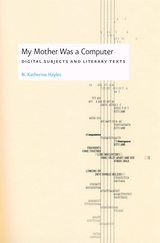 My Mother Was a Computer: Digital Subjects and Literary Texts
N. Katherine Hayles
University of Chicago Press, 2005 We live in a world, according to N. Katherine Hayles, where new languages are constantly emerging, proliferating, and fading into obsolescence. These are languages of our own making: the programming languages written in code for the intelligent machines we call computers. Hayles's latest exploration provides an exciting new way of understanding the relations between code and language and considers how their interactions have affected creative, technological, and artistic practices.
My Mother Was a Computer explores how the impact of code on everyday life has become comparable to that of speech and writing: language and code have grown more entangled, the lines that once separated humans from machines, analog from digital, and old technologies from new ones have become blurred. My Mother Was a Computer gives us the tools necessary to make sense of these complex relationships. Hayles argues that we live in an age of intermediation that challenges our ideas about language, subjectivity, literary objects, and textuality. This process of intermediation takes place where digital media interact with cultural practices associated with older media, and here Hayles sharply portrays such interactions: how code differs from speech; how electronic text differs from print; the effects of digital media on the idea of the self; the effects of digitality on printed books; our conceptions of computers as living beings; the possibility that human consciousness itself might be computational; and the subjective cosmology wherein humans see the universe through the lens of their own digital age.
We are the children of computers in more than one sense, and no critic has done more than N. Katherine Hayles to explain how these technologies define us and our culture. Heady and provocative, My Mother Was a Computer will be judged as her best work yet.
My Mother’s Funeral
Adriana Páramo
CavanKerry Press, 2013 My Mother’s Funeral circles around the death of the author’s mother, but what also emerges is a landscape of personal loss and pain, of innocence, humor, violence and beauty. Drawing heavily upon her childhood experiences and Colombian heritage, Páramo describes the volatile bond linking mothers and daughters in a culture largely unknown to Americans. The book moves between past (Colombia in the 1940s) and present lives, and maps scenes both geographical (Bogotá, Medellín, Anchorage) as well as psychological--ultimately revealing the indomitable spirit of the women in her family. Especially from Páramo’s mother the reader learns what it means to be a Colombian woman.
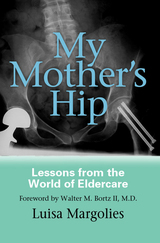 My Mother's Hip: Lessons From The World Of Eldercare
Luisa Margolies
Temple University Press, 2004 Some 400,000 hip fractures occur every year, the vast majority among the elderly; all too often these fractures are associated with death or severe disability. After her mother's double hip fracture, Luisa Margolies immersed herself in identifying and coordinating the services and professionals needed to provide critical care for an elderly person. She soon realized that the American medical system is ill prepared to deal with the long-term care needs of our graying society. The heart of My Mother's Hip is taken up with the author's day-to-day observations as her mother's condition worsened, then improved only to worsen again, while her father became increasingly anxious and disoriented. As both a devoted daughter and a skilled anthropologist, Margolies vividly renders her interactions with physicians, nurses, hospital workers, nursing home administrators, the Medicare bureaucracy, home care providers, and her parents. In the Lessons chapter that follows each episode, she discusses in a broader context the weighty decisions that adult children must make on their parents' behalf and the emotional toll their responsibility takes. Here she addresses the complex practical issues that commonly arise in such situations: understanding the consequences of hip fracture and its treatment, preparing health care proxies and advanced directives, enabling elders to remain at home, and the heartbreaking dilemma of prolonging life. Like many adult children, Margolies learned her lessons about eldercare in the midst of crises. This book is intended to ease the information-gathering and decision-making processes for others involved in eldercare.
My Mother's Lover
Urs Widmer
Seagull Books, 2018 It’s Switzerland in the 1920s when the two lovers first meet. She is young, beautiful, and rich. In contrast, he can barely support himself and is interested only in music. By the end of their lives, he is a famous conductor and the richest man in the country, but she is penniless. And most important of all, no one knows of her love for him; it is a secret he took to his grave. Here begins Urs Widmer’s novel My Mother’s Lover.
Based on a real-life affair, My Mother’s Lover is the story of a lifelong and unspoken love for a man—recorded by the woman’s son, who begins this novel on the day his mother’s lover dies. Set against the backdrop of the Depression and World War II, it is a story of sacrifice and betrayal, passionate devotion, and inevitable suffering. Yet in Widmer’s hands, it is always entertaining and surprisingly comic—a unique kind of fairy tale.
 My Mother'S Lovers: (A Novel)
Joy Passanante
University of Nevada Press, 2002 Lake Rose Davis is the only child of former hippies who settled in a small Idaho mill town in the late 1960s. Her parents' eccentric lifestyle makes Lake an outcast among the children of the town, and the unspoken tensions among the adults of her parents' social universe puzzle and disturb her. She ponders over her mother's infidelities and the mysterious resentment between her mother and her grandparents far away in St. Louis, and between her mother and her aunt, a conventional career woman relentlessly in search of love. As a teenager, Lake joins her grandparents in Missouri and spends her youth seeking answers to her questions about the past, trying to understand the complex pattern of betrayals that shaped it. Only when she herself becomes party to a betrayal as devastating as any committed by her mother does Lake begin to understand. Passanante writes with a keen eye for the details of behavior that reveal the yearnings and fears beneath the surface. She shows us that the path to understanding is never a smooth one, and that love is often far more complex than we can imagine. Western Literature Series.
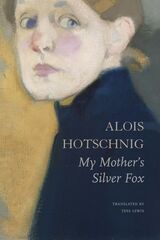 My Mother's Silver Fox
Alois Hotschnig
Seagull Books, 2025 A gripping, deeply moving novel about one man’s search for truth and identity in the long shadow of war.
Heinz Fitz has only one tangible clue to his past: a worn piece of paper from the SS-Lebensborn program, a Nazi initiative designed to promote so-called racial purity. His mother, a Norwegian woman, fell in love with the wrong man—an Austrian soldier—during the German occupation. Betrayed and abandoned, she fled to Austria, only to be turned away by his family. Branded a collaborator in her homeland and a pariah in a foreign land, she was left to survive as best she could. Now, years later, her son is determined to piece together the fragments of his origins.
But every answer leads to more questions, and as he unearths painful truths, an alternative story—one of resilience, love, and survival—emerges from the darkness. Inspired by real events, Alois Hotschnig’s novel is both a fierce reckoning with history and a poignant tribute to a mother’s strength. A masterful meditation on memory and storytelling, My Mother’s Silver Fox asks whether the past can ever truly be understood—or if it will always slip through our grasp, like snow through our fingers.
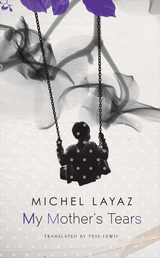 My Mother’s Tears
Michel Layaz
Seagull Books, 2019 With subtle, bemused humor and an unerring eye for human frailty, Michel Layaz writes about the hidden tensions within families, the awkwardness of adolescence, and the drama of intimacy between friends and lovers. His fifth novel, My Mother’s Tears, is his most poignant yet.
The adult narrator of My Mother’s Tears has returned to clean out his childhood home after his mother’s death. In thirty short chapters, each focused on a talismanic object or resonant episode from his childhood, the narrator tries to solve the mystery behind the flood of tears with which his strikingly beautiful, intelligent, and inscrutable mother greeted his birth. Like insects preserved in amber, these objects—an artificial orchid, a statue, a pair of green pumps, a steak knife, a fishing rod and reel, among others—are surrounded by an aura that permeates the narrator’s life. Interspersed with these chapters are fragments from the narrator’s conversation with his present lover, a woman who demands that he verbally confront his past. This difficult conversation charts his gradual liberation from the psychological wounds he suffered growing up.
Not only an account of a son’s attempt to understand his enigmatic mother, My Mother’s Tears is also a moving novel about language and memory that explores the ambivalent power of words to hurt and to heal, to revive the past and to put childhood demons to rest.
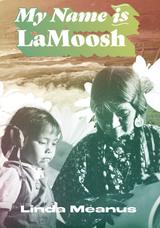 My Name is LaMoosh
Linda Meanus
Oregon State University Press, 2023 My Name is LaMoosh is the life story of Warm Springs Tribal elder Linda Meanus. She grew up with her grandma Flora Thompson and grandpa Chief Tommy Thompson near Celilo Falls, a mighty fishery on the Columbia that was flooded in 1957 by the construction of The Dalles Dam. Linda persevered through this historic trauma and life’s challenges to teach young people about the Indigenous ways of the Columbia River. Intended for early readers to learn more about Native American history through a first-hand account, the book is also a reminder that Indigenous people continue to maintain a cultural connection to the land and river that gave them their identity. My Name is LaMoosh includes fact boxes that provide historical, cultural, and environmental context for Linda’s personal story. Hundreds of books exist about Lewis and Clark and their journey of “discovery.” This book balances our understanding of American history with the long-neglected voices of Indigenous people. Linda’s story is not just about historic trauma but also about resilience, perseverance, and reciprocity.
 My Name Is Not Natasha' How Albanian Women in France Use Trafficking to Overcome Social Exclusion (1998-2001)
John Davies
Amsterdam University Press, 2009 This book challenges every common presumption that exists about the trafficking of women for the sex trade. It is a detailed account of an entire population of trafficked Albanian women whose varied experiences, including selling sex on the streets of France, clearly demonstrate how much the present discourse about trafficked women is misplaced and inadequate. The heterogeneity of the women involved and their relationships with various men is clearly presented as is the way women actively created a panoptical surveillance of themselves as a means of self-policing. There is no artificial divide between women who were deceived and abused and those who “choose” sex work; in fact the book clearly shows how peripheral involvement in sex work was to the real agenda of the women involved. Most of the women described in this book were not making economic decisions to escape desperate poverty nor were they the uneducated naïve entrapped into sexual slavery. The women’s success in transiting trafficking to achieve their own goals without the assistance of any outside agency is a testimony to their resilience and resolve.
My Nature Is Hunger: New and Selected Poems, 1989 2004
Luis J. Rodriguez
Northwestern University Press, 2005 Award-winning Latino author Luis J. Rodríguez stuns with My Nature is Hunger. The collection features 26 new poems that reflect Rodríguez’s increasingly global view, his hard-won spirituality, and his movement toward reconciliation with his family and his past, as well as selections from his previous books, Poems Across the Pavement, The Concrete River, and Trochemoche.
 My Nerves Are Bad: Puerto Rican Women Managing Mental Illness and HIV Risk
Sana Loue
Vanderbilt University Press, 2011 Over a two-year period, author Sana Loue and her research team followed the lives of fifty-three Puerto Rican women living with severe mental illness as they coped with daily challenges in the areas of family, romantic relationships, employment, social services, substance use, and health care. The team interviewed the women and shadowed them at their homes, churches, schools, physicians' offices, family events, and other occasions in order to understand how their mental illness, their gender, their language, and their culture affected their relationships with others, their understandings of their own situations, and their hopes for themselves and their families.
Sana Loue lets us see the remarkable strength of many of the women and hear in their own words about their efforts to survive, despite long histories of childhood physical and sexual abuse, partner violence, substance use, poverty, and severe mental illness. We also witness the violence that surrounds them and the HIV risk that becomes a part of their lives in their efforts to survive economically and emotionally.
My Nine Lives: Sixty Years in Israeli and Biblical Archaeology
William G. Dever
SBL Press, 2020 Experience a lifetime of adventure
This autobiography of prominent American archaeologist William G. Dever is unabashedly his story, in which he offers candid, often brutally honest, reflections on his life and sixty-five-year career. Dever places himself in the midst of a remarkable generation of giants in archaeology in Israel during a period when the fields of biblical and Israeli archaeology were evolving. With technical expertise developed over a lifetime of working alongside four generations of Israeli and foreign excavators, he recalls their exploits and shares numerous personal stories that few others would know. His memoir concludes with a postscript on the likely future of biblical archaeology and an annotated bibliography for serious readers who wish to explore some of the scholarly literature to flesh out Dever’s narrative.
 My Oceans: Essays of Water, Whales, and Women
Christina Rivera
Northwestern University Press, 2025 An urgent exploration of caring and mothering on a planet in crisis
In a swell of sea-linked essays, Christina Rivera explores the kinship between marine animals, humans, and Earth’s blue womb. Rivera’s investigative questions begin with the toxic burden of her body and spiral out—to a grieving orca, a hunted manta ray, a pregnant sea turtle, a spawning salmon, an “endling” porpoise, and the “mother culture” of sperm whales—as she redefines what it means to mother and defend a collective future.
Braiding memoir with embodied climate science, Rivera challenges that it’s not anthropomorphism to feel deep connection to nonhuman species and proposes that gathering in collective grief is essential amid the sixth mass extinction. For ecofeminists, fans of Rachel Carson and Terry Tempest Williams—and for anyone who feels themself disintegrate in the presence of the sea—My Oceans offers a timely and wondrous descent into the deep waters of interconnection in which we swim.
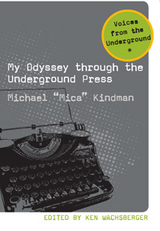 My Odyssey Through the Underground Press
Michael Kindman
Michigan State University Press, 2011 In 1963, Michigan State University, the nation’s first land grant college, attracted a record number of National Merit Scholars by offering competitive scholarships. One of these exceptional students was Michael Kindman. After the beginning of the Free Speech Movement in Berkeley, Kindman, in line to be editor-in-chief of the official MSU student newspaper, felt compelled to seek a more radical forum of intellectual debate. In 1965, he dropped out of school and founded The Paper, one of the first five members of Underground Press Syndicate. This gripping autobiography follows Kindman’s inspiring journey of self-discovery, from MSU to Boston, where he joined the staff of Avatar, unaware that the large commune that controlled the paper was a charismatic cult. Five years later, he fled the commune’s outpost in Kansas and headed to San Francisco, where he came out as a gay man, changed his name to Mica, and continued his work as an activist and visionary.
My Old Faithful: Stories
Yang Huang
University of Massachusetts Press, 2018 Winner of the 2018 Forward Indies' Gold Award for Multicultural Adult Fiction and Bronze Award for Short Story Collection
Showing both the drama of familial intimacy and the ups and downs of the everyday, My Old Faithful introduces readers to a close-knit Chinese family. These ten interconnected short stories, which take place in China and the United States over a thirty-year period, merge to paint a nuanced portrait of family life, full of pain, surprises, and subtle acts of courage. Richly textured narratives from the mother, the father, the son, and the daughters play out against the backdrop of China's social and economic change.
With quiet humor and sharp insight into the ordinary, Yang Huang writes of a father who spanks his son out of love, a brother who betrays his sister, and a woman who returns to China after many years to find her country changed in ways both expected and startling.
My Palestine: An Impossible Exile
Mohammad Tarbush
Haus Publishing, 2025 A memoir that combines political and economic commentary with personal and national history.
Mohammad Tarbush was born in British Mandate Palestine. As an infant, he and his family were forced to evacuate their village together with its entire population, after the Zionist victory that led to the establishment of the State of Israel. Then as landless refugees in the West Bank, the family sank into poverty. When, as a teenager, Tarbush left home one day under the pretext of visiting relatives in Jordan, he in fact set off on a year-long hitchhiking journey to Europe, where he would eventually become a highly successful international banker and a key behind-the-scenes promoter of the Palestinian cause. In My Palestine, Mohammad Tarbush combines a poignant personal memoir with incisive political and economic commentary on the tumultuous events that shaped the history of Israel, Palestine, and the modern Middle East.
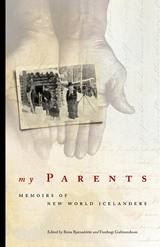 My Parents: Memoirs of New World Icelanders
Birna Bjarnadottir
University of Manitoba Press, 2007 My Parents: Memoirs of New World Icelanders is a collection of essays written by second-generation Icelandic immigrants in North America, describing the lives of their parents. Originally collected in 1956 by Dr. Finnbogi Gumundsson, the first Chair of Icelandic at the University of Manitoba, seven of the fourteen memoirs are translated here from Icelandic to English. They offer a rare first-hand look into the lives of New World immigrants of the late nineteenth and early twentieth centuries. Readers are invited straight into the heart of these people’s lives, from social evenings spent reading poetry and the sagas, to the daily struggles to prepare the land and build homes. A prevailing sense of community emerges from the writers’ stories, showing how Icelandic culture and tradition sustained the immigrants through hardship, illness, and isolation. My Parents also details some of the genealogy of the New World Icelanders who settled in Manitoba, Saskatchewan, Alberta, Wisconsin, North Dakota, and Minnesota.
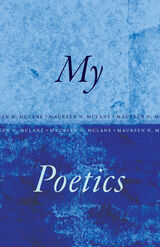 My Poetics
Maureen N. McLane
University of Chicago Press, 2024 Acclaimed poet and critic Maureen N. McLane offers an experimental work of criticism ranging across Romantic and contemporary poetry.
In My Poetics, Maureen N. McLane writes as a poet, critic, theorist, and scholar—but above all as an impassioned reader. Written in an innovative, conversable style, McLane’s essays illuminate her own poetics and suggest more generally all that poetics can encompass. Ranging widely from romantic-era odes and hymns to anonymous ballads to haikus and haibuns to modernist and contemporary poetries in English, My Poetics explores poems as speculative instruments and as ways of registering our very sense of being alive. McLane pursues a number of open questions: How do poems generate modes for thinking? How does rhyme help us measure out thought? What is the relation of poetry to its surroundings, and how do specific poems activate that relation?
If, as Wallace Stevens wrote, “poetry is the scholar’s art,” My Poetics flies under a slightly different banner: study and criticism are also the poet’s art. Punctuated with McLane’s poems and drawing variously on Hannah Arendt, Percy Bysshe Shelley, Roland Barthes, Bruno Latour, and other writers and poets, My Poetics is a formally as well as intellectually adventurous work. Its artful arrangement of readings and divagations shows us a way to be with poems and poetics.
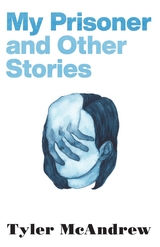 My Prisoner and Other Stories
Tyler McAndrew
Ohio State University Press, 2025 Set largely in the Rust Belt of the 1990s and early 2000s, My Prisoner and Other Stories gives us protagonists who repeatedly confront helplessness in the face of others’ suffering. A teenage girl tries to help an elderly woman who has locked herself out of her house only to be shaken by the trauma and loneliness that the woman—a Holocaust survivor and recent widow—eventually shares with her. A schoolteacher writes letters to his cousin, who has schizophrenia and is serving a life sentence for the murder of three of their relatives. A middle school student makes a complicated gesture of charity after befriending the poor kid at his lunch table. Siblings seed the ground for an eccentric treasure hunter only to find that their prank leads them into unexpected emotional peril. The structural forces that stain life in late-capitalist America—the prison system, economic desperation—lurk throughout these muscular and empathetic tales, but in the face of endemic adversity, shrewd and loving characters strive for and sometimes achieve hope and tenderness. Tyler McAndrew shows us an unadorned America that can still tap its capacity for human kindness.
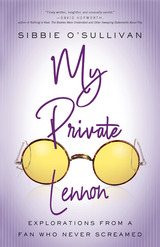 My Private Lennon: Explorations from a Fan Who Never Screamed
Sibbie O'Sullivan
Ohio State University Press, 2020 My Private Lennon: Explorations from a Fan Who Never Screamed offers a new point of view from which to consider the Beatles’ impact on society and on the individual. In a series of linked autobiographical essays that explore the musical, cultural, and personal aspects of intense music fandom, Sibbie O’Sullivan dismantles the grand narrative of the fifteen-year-old hysterical female Beatles fan and replaces it with an introspective and often humorous tale about how the band shaped her intellectual and artistic development.
My Private Lennon charts the author’s realization that the Beatles, especially John Lennon, were a crucial force in her development. A radical departure from other books written by Beatles fans, My Private Lennon invites its readers to consider subjects not usually found in works about Lennon and the band, such as the constraints of memory, the male body, grief, the female breast, race, cultural issues, and the importance of privacy in our over-mediated world. In pieces that engage cultural issues and historical contexts, My Private Lennon creates a witty and provocative intimacy with readers who value the power of art to change one’s life and who love John Lennon and the Beatles.
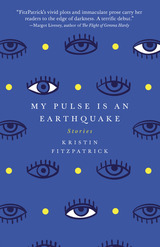 My Pulse Is an Earthquake
Kristin FitzPatrick
West Virginia University Press, 2015 The nine stories in My Pulse Is an Earthquake take place in the clutches of grief. Characters struggle to make sense of sudden losses of life, love, and community. From 1970 to the present day, children and young adults from the Rockies to the Appalachian Mountains guide readers through the valleys of their lives as dog breeders, immigrants, Catholic school delinquents, rookie policewomen, drummers, ballerinas, teenage brides, and an accountant who keeps a careful inventory of losses. In each story, we see the darkness that can surface during the happy moments in life—weddings, births, promotions, the opening night of a director’s favorite play, or the best performance of a dancer’s career, when no one important is there to watch. We enter daydreams and night terrors where the dead are within reach, pointing out how they could have been saved. We wear their clothes and carry their teddy bears or vinyl records everywhere. We crawl around in caves and pound hammers into walls until our own hearts stop beating. This collection explores how the unexpected harm to young, vibrant loved ones—from murder, kidnapping, battle, accident, natural disaster, swift illness, or stillbirth—can rupture families, and how the most unlikely healers can bring together those who remain. My Pulse Is an Earthquake will be performed on stage by The New Short Fiction Series in Hollywood, an event sponsored by Barnes & Noble.
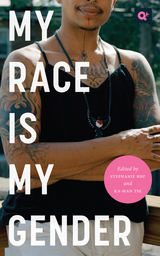 My Race Is My Gender: Portraits of Nonbinary People of Color
Stephanie Hsu
Rutgers University Press, 2024 Genderqueer and nonbinary people of color often experience increased marginalization, belonging to an ethnic group that seldom recognizes their gender identity and a queer community that subscribes to white norms. Yet for this very reason, they have a lot to teach about how racial, sexual, and gender identities intersect. Their experiences of challenging social boundaries demonstrate how queer communities can become more inclusive and how the recognition of nonbinary genders can be an anti-racist practice.
My Race is My Gender is the first anthology by nonbinary writers of color to include photography and visual portraits, centering their everyday experiences of negotiating intersectional identities. While informed by queer theory and critical race theory, the authors share their personal stories in accessible language. Bringing together Black, Indigenous, Latine, and Asian perspectives, its six contributors present an intergenerational look at what it means to belong to marginalized queer communities in the U.S. and feel solidarity with a global majority at the same time. They also provide useful insights into how genderqueer and nonbinary activism can both energize and be fueled by such racial justice movements as Black Lives Matter.
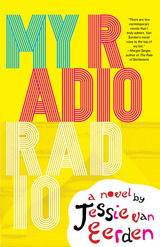 My Radio Radio
Jessie van Eerden
West Virginia University Press, 2016 The members of Dunlap Fellowship of All Things in Common share everything from their meager incomes to the only functioning toilet in the community house— everything, that is, except secrets. When Omi Ruth Wincott, the youngest member of the disintegrating common-purse community in this small Indiana town, loses her only brother, Woodrun, she withdraws from everyone and fixates on a secret desire: She wishes only for an extravagant head- stone to mark Woodrun’s grave, an expense that the strict, parsimonious community can’t—or won’t—pay for. In her loneliness, Omi Ruth’s only ties to the world remain her National Geographic magazines and a new resident in the house, Northrop, an old man caught between living and dying, maintained in a vegetative state by hospice care. Observing everything with the keen eye of a girl with a photographic memory, Omi Ruth finds herself learning to grieve in the company of unlikely strangers. With the help of a homeless and pregnant Tracie Casteel, a rebellious Amish boy named Spencer Frye, and the smooth-talking Vaughn Buey who works third shift at Dunlap’s RV plant, Omi Ruth discovers that there are two things of which there is no shortage in the world’s common purse—love and loss.
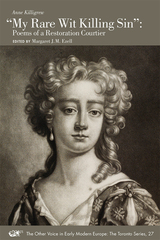 “My Rare Wit Killing Sin”: Poems of a Restoration Courtier
Anne Killigrew
Iter Press, 2013 This is the first modern edition of verse by Anne Killigrew, a poet and portrait painter born in 1660 at the very start of the Restoration, who grew up as part of the complicated political, religious, and artistic worlds of the Restoration courts of Charles II and his brother James, Duke of York. Killigrew never chose to print her verses, but instead participated in a literary circulation network including family, friends, and members of the court; her position in relation to court culture and her family’s involvement with the London commercial stage gave her a unique perspective into the issues confronting a young single woman in a period during which libertinism was the dominant ethos of the courtiers. This edition lightly modernizes the spelling and punctuation of the posthumous volume of her collected verse, provides notes identifying the classical and biblical allusions which shape her works, and provides a historical context for her literary and artistic career in the introduction.
My Religion: Helen Keller's Astounding Triumph over Deafness and Blindness
HELEN KELLER
Swedenborg Foundation Publishers, 2010 A woman who lived in silent darkness describes a world of love, light, and color. Where did Helen Keller find the strength and courage to break out of her silent and dark world and discover light? What inner resources of faith helped her overcome the limits of her physical body? In My Religion, this dynamic woman describes the spiritual odyessy that brought her to a faith that opened her spiritual sight. This recording was originally made in 1960 by actress Lillian Gish and remastered for a new release.
MY RELIGION: HELEN KELLER'S ASTOUNDING TRIUMPH OVER DEAFNESS AND BLINDNESS.
HELEN KELLER
Swedenborg Foundation Publishers, 2010
A woman who lived in silent darkness describes a world of love, light, and color. Where did Helen Keller find the strength and courage to break out of her silent and dark world and discover light? What inner resources of faith helped her overcome the limits of her physical body? In My Religion, this dynamic woman describes the spiritual odyessy that brought her to a faith that opened her spiritual sight.
This recording was originally made in 1960 by actress Lillian Gish and remastered for a new release.
My Sax Life: A Memoir
Paquito D'Rivera
Northwestern University Press, 2008 Winner of 2005 Grammy Award for Best Instrumental Composition
Winner of 2005 National Medal of Arts
My Sax Life is the award-winning memoir of famed Cuban musician Paquito D'Rivera. A best-selling artist with more than thirty solo albums to his credit, D'Rivera has performed at the White House and the Blue Note, and with orchestras, jazz ensembles, and chamber groups around the world. Propelled by jazz-fueled high spirits, D'Rivera's story soars and spins from memory to memory in a collage of his remarkable life. D'Rivera recalls his early nightclub appearances as a child, performing with clowns and exotic dancers, as well as his search for artistic freedom in communist Cuba and his hungry explorations of world music after his defection. Opinionated but always good-humored, My Sax Life is a fascinating statement on art and the artist's life.
My Secret Book
Francesco Petrarca
Harvard University Press, 2016 Francesco Petrarca (1304–1374), one of the greatest of Italian poets, was also the leading spirit in the Renaissance movement to revive literary Latin, the language of the Roman Empire, and Greco-Roman culture in general. My Secret Book (Secretum) records “the private conflict of my thoughts,” in the form of a dialogue between Franciscus and Augustinus in the presence of a beautiful woman, Truth personified. The discussion reveals remarkable self-awareness as Petrarca probes and evaluates the springs of his own morally dubious addictions to Fame and Love.
My Sense of Silence: Memoirs of a Childhood with Deafness
Lennard J. Davis
University of Illinois Press, 1999 Selected as an "Editors Choice" by the Chicago Tribune Lennard J. Davis grew up as the hearing child of deaf parents. In this candid, affecting, and often funny memoir, he recalls the joys and confusions of this special world, especially his complex and sometimes difficult relationships with his working-class Jewish immigrant parents. Gracefully slipping through memory, regret, longing, and redemption, My Sense of Silence is an eloquent remembrance of human ties and human failings.
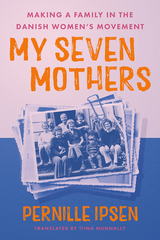 My Seven Mothers: Making a Family in the Danish Women's Movement
Pernille Ipsen
University of Minnesota Press, 2025 Seven women raise a child together while redefining their place in society at the beginning of the Women’s Movement in Denmark in the 1970s
On New Year’s Eve in Copenhagen in 1972, seven women had a child together: one gave birth and six others attended. They had met a year earlier at a feminist women’s camp on a small island and now, with about twenty other women’s liberationists, they occupied three dilapidated apartment buildings in the center of Copenhagen. One became the country’s first Women’s House, the nerve center of the Women’s Movement in Denmark, and the other two were women-only communal living spaces that were Pernille Ipsen’s first home. In this intimate portrait of life during the exhilarating early days of women’s liberation in Scandinavia and dramatic social change around the globe, she tells the stories of these seven women, her seven mothers. Recounting her mothers’ history—from the passions and beliefs they shared to the political divisions over sexual identity that ultimately split them apart—Ipsen captures the individuality of each of her mothers as well as the common experiences that drew them together. As she deftly reflects the practical and emotional realities of her mothers’ women-centered life, Ipsen presents an engrossing picture of intersecting lives that, half a century ago, raised questions we still grapple with today: What is a family? Who is a woman? And who gets to decide? A chronicle of gender, sexuality, and feminism as it was constructed, contested, and lived, My Seven Mothers is an eye-opening account of the challenges and possibilities connected with liberation and radical social change during the 1970s. In this time of fierce struggles over family, sexuality, and child-rearing, it reminds us that new worlds are always possible.
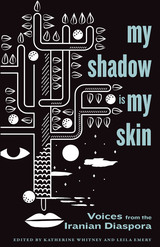 My Shadow Is My Skin: Voices from the Iranian Diaspora
Edited by Katherine Whitney and Leila Emery
University of Texas Press, 2020 The Iranian revolution of 1979 launched a vast, global diaspora, with many Iranians establishing new lives in the United States. In the four decades since, the diaspora has expanded to include not only those who emigrated immediately after the revolution but also their American-born children, more recent immigrants, and people who married into Iranian families, all of whom carry their own stories of trauma, triumph, adversity, and belonging that reflect varied and nuanced perspectives on what it means to be Iranian or Iranian American. The essays in My Shadow Is My Skin are these stories. This collection brings together thirty-two authors, both established and emerging, whose writing captures the diversity of Iranian diasporic experiences. Reflecting on the Iranian American experience over the past forty years and shedding new light on themes of identity, duality, and alienation in twenty-first-century America, the authors present personal narratives of immigration, sexuality, marginalization, marriage, and religion that offer an antidote to the news media’s often superficial portrayals of Iran and the people who have a connection to it. My Shadow Is My Skin illuminates a community that rarely gets to tell its own story.
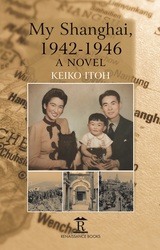 My Shanghai, 1942-1946: A Novel
Keiko Itoh
Amsterdam University Press, 2016 It is 1942. Shanghai after Pearl Harbor. Newly-arrived Eiko Kishimoto, a twenty-year-old, London-educated Japanese housewife, settles into a privileged existence in the French Concession as a member of the community of the Occupying Power. Initially, her days are filled with high society lunches and dinners, race course and night club visits and open-air summer concerts, amidst an ebullient and remarkably cosmopolitan society that makes up Shanghai. But all is by no means what it seems. As war progresses, and Japan tightens its control within China, tensions mount, relationships unravel, and allegiances are questioned. It is not long before Eiko awakens to the meaning and implications of occupation for both her international friends and for Japanese civilians. Even her settled domestic life, with a growing family and close proximity to her beloved older sister, is threatened as Japan’s war efforts become more desperate and degenerate. Partly biographical – the author taking inspiration from her mother’s own war experiences in China – My Shanghai, 1942-1946 provides a fascinating insight into the Asia Pacific War as never told before, that is through the eyes of a young Japanese woman caught between her Christian values and loyalty to her country.
My Signing Book of Numbers
Patricia Bellan Gillen
Gallaudet University Press, 1988 This full-color picture book helps children learn their numbers in sign language. Each two-page spread of this delightfully illustrated book has the appropriate number of things or creatures for the numbers 0 through 20. The signs for the numbers 30, 40, 50, 60, 70, 80, 90, and 100 are also included. Each sign/number appears in the corner of the page. Written explanations of how to form each sign are provided in the back of the book.
My Sister - Life
Boris Pasternak
Northwestern University Press, 2001 Boris Pasternak, the Nobel laureate and author of Doctor Zhivago, composed one of the world's great love poems in My Sister - Life. Written in the summer of 1917, the cycle of poems focuses on personal journeys and loves but is permeated by the tension and promise of the impending October Revolution.
Osip Mandelstam wrote: "To read the poems of Pasternak is to get one's throat clear, to fortify one's breathing. . . . I see Pasternak's My Sister - Life as a collection of magnificent exercises in breathing . . . a cure for tuberculosis." This English translation, rendered with verve and intelligence by Mark Rudman, is a heady gust that matches the intensity and power of the original Russian text.
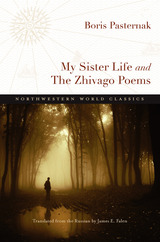 My Sister Life and The Zhivago Poems
Boris Pasternak, Translated from the Russian by James E. Falen
Northwestern University Press, 2012 Boris Pasternak is best known in the West for his epic novel Doctor Zhivago, whereas in Russia he is most celebrated as a poet. The two poetry collections offered here in translation are chronological and thematic bookends, and they capture Pasternak’s abiding and powerful vision of life: his sense of its beauty and terror, its precariousness for the individual, and its persistence in time—that vitality of being with which he is on familiar and familial terms. In the early work My Sister Life, which commemorates the year 1917, Pasternak, then in his late twenties, found his poetic voice. The book would go on to become one of the most influential collections of Russian poetry of the twentieth century. “The Poems of Yury Zhivago” are a part of the poet’s famous novel, Dr. Zhivago, whose title might be rendered in English as “Doctor Life.” These later lyrics are a kind of summing up that reflect, from the perspective of age and approaching death, upon the accumulated experience of a contemplative life amid turbulent and terrifying times. Falen’s fresh new translations of these poems capture their expression of the beauty and the joy, the terror and the pain, of what it is to be alive . . . and to die.
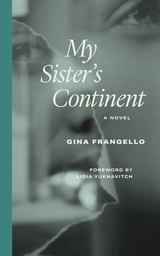 My Sister's Continent: A Novel
Gina Frangello, Lidia Yuknavitch
Northwestern University Press, 2026 A new edition of Frangello’s explosive retelling of Freud’s infamous “Dora” case study
Kirby is a young woman attempting to come to terms with a failed bout of therapy and the truth about her identical twin, Kendra. Since girlhood, Kirby both idolized and envied Kendra, a fearless and charismatic ballet dancer who commanded the attention of everyone in their orbit. In the aftermath of tragedy, Kirby is sent a case study by a former psychiatrist intent on publishing a distorted version of her family’s secrets. She responds by using Kendra’s private and revealing journals to reconstruct their final months together, as well as her own “disastrous” time in therapy, to voice her own truth.
Freud’s “Dora,” a young woman whose mysterious symptoms he contentiously chalked up to “hysteria,” appears at turns in the faces of each twin as they navigate a world of sexuality, familial dysfunction, and possibly-psychosomatic ailments. Reissued with a new foreword by Lidia Yuknavitch, Frangello’s groundbreaking early novel brings “Dora” into a new era.
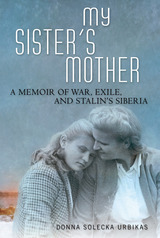 My Sister's Mother: A Memoir of War, Exile, and Stalin’s Siberia
Donna Solecka Urbikas
University of Wisconsin Press, 2019 Donna Solecka Urbikas grew up in the Midwest during the golden years of the American century. But her Polish-born mother and half sister had endured dehumanizing conditions during World War II, as slave laborers in Siberia. War and exile created a profound bond between mother and older daughter, one that Donna would struggle to find with either of them.
In 1940, Janina Ślarzynska and her five-year-old daughter Mira were taken by Soviet secret police (NKVD) from their small family farm in eastern Poland and sent to Siberia with hundreds of thousands of others. So began their odyssey of hunger, disease, cunning survival, desperate escape across a continent, and new love amidst terrible circumstances.
But in the 1950s, baby boomer Donna yearns for a “normal” American family while Janina and Mira are haunted by the past. In this unforgettable memoir, Donna recounts her family history and her own survivor’s story, finally understanding the damaged mother who had saved her sister.
Finalist, Best Traditional Non-Fiction Book, Chicago Writers Association
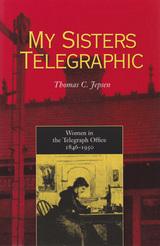 My Sisters Telegraphic: Women in the Telegraph Office, 1846–1950
Thomas C. Jepsen
Ohio University Press, 2000 The role of the telegraph operator in the mid-nineteenth century was like that of today’s software programmer/analyst, according to independent scholar Tom Jepsen, who notes that in the “cyberspace” of long ago, male operators were often surprised to learn that the “first-class man” on the other end of the wire was a woman. Like the computer, the telegraph caused a technological revolution. The telegraph soon worked synergistically with the era’s other mass-scale technology, the railroad, to share facilities as well as provide communications to help trains run on time. The strategic nature of the telegraph in the Civil War opened opportunities for women, but tension arose as men began to return from military service. However, women telegraphers did not affect male employment or wage levels. Women kept their jobs after the war with support from industry—Western Union in particular—and because they defended and justified their role. “Although women were predominantly employed in lower-paying positions and in rural offices, women who persisted and made a career of the profession could work up to managerial or senior technical positions that, except for wage discrimination, were identical to those of their male counterparts,” writes Jepsen. “Telegraphy as an occupation became gendered, in the sense that we understand today, only after the introduction of the teletype and the creation of a separate role for women teletype operators.” My Sisters Telegraphic is a fresh introduction to this pivotal communications technology and its unsung women workers, long neglected by labor and social historians.
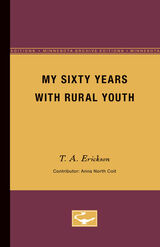 My Sixty Years with Rural Youth
T.A. Erickson
University of Minnesota Press, 1956
My Sixty Years with Rural Youth was first published in 1956.Reading this book will be like a personal visit and reminiscence for the thousands of persons, particularly in rural Minnesota and the Middle West, who have known the author affectionately as “Dad” Erickson. Mr. Erickson devoted much of his life to the 4-H club program for rural youth, serving as state 4-H leader in Minnesota for nearly 30 years. During that time, about half a million boys and girls became 4-H club members in the state and grew up to be better citizens, better farmers, and better homemakers because of “Dad” Erickson’s teaching and inspiration.Besides its warm, personal appeal, this book has another and perhaps broader significance. The story Mr. Erickson tells is, in large measure, a documentation of the development of 4-H club work. As such, it is an important chapter in the agricultural history of Minnesota and of the nation as a whole, since the 4-H movement has profoundly affected the course of agriculture in this country. One of the reasons for the founding of the organization was an alarming drift away from the farms of young people, half a century ago. Through the 4-H program, rural life was made more attractive, and farm youngsters got a more equitable share of America’s cultural, social, and economic opportunities and rewards.In his autobiography, Mr. Erickson covers a long life span that began on a Minnesota farm in the hardship and poverty that were common to the time and place. He tells how the people lived, how they farmed, and what their schools and churches were like. And, as his story advances through the years, we see the remarkable changes in rural living that have occurred in one lifetime.
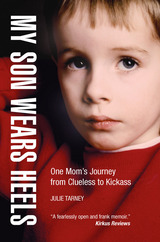 My Son Wears Heels: One Mom's Journey from Clueless to Kickass
Julie Tarney, Foreword by Diane Ehrensaft
University of Wisconsin Press, 2016 In 1992, Julie Tarney’s only child, Harry, told her, “Inside my head I’m a girl.” He was two years old.
Julie had no idea what that meant. She felt disoriented. Wasn’t it her role to encourage and support her child? Surely she had to set some limits to his self-expression—or did she? Would he be bullied? Could she do the right thing? What was the right thing?
The internet was no help, because there was no internet. And there were zero books for a mom scrambling to understand a toddler who had definite ideas about his gender, regardless of how Nature had endowed him. Terms such as transgender, gender nonconforming, and gender creative were rare or nonexistent.
There were, however, mainstream experts who theorized that a “sissy” boy was the result of a domineering mother. Julie couldn’t believe it. She didn’t want to care what her neighbors thought, but she did care. “Domineering mother” meant controlling mother. It meant bad mother. It meant her mother.
Lacking a positive role model of her own, and fearful of being judged as a mom who was making her son “too feminine,” Julie embarked on an unexpected parenting path. Despite some missteps, and with no map to guide her, she learned to rely on her instincts. She listened carefully, kept an open mind, and as long as Harry was happy, she let him lead the way. Julie eventually realized that Harry knew who he was all along. Her job was simply to love and support him unconditionally, allowing him to be his authentic self. This story of a mother embracing her child’s uniqueness and her own will resonate with all families.
Winner, inaugural BeOUT Award for LGBTQ Visibility, awarded by Milwaukee Pride
"My Song Is My Weapon": People's Songs, American Communism, and the Politics of Culture, 1930-50
Robbie Lieberman
University of Illinois Press, 1989 A revealing exploration of the origins and development of People's Songs, Inc., "My Song Is My Weapon won the ASCAP-Deems Taylor Award. Robbie Lieberman brings to life the hootenannies, concerts, and rallies of the time, paying special attention to the politics of culture of the Old Left. Her analysis of the communist movement culture, coupled with interviews with former members of People's Songs, sheds new light on Cold War America, the American Communist movement, and the experience of left-wing cultural workers.
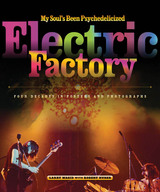 My Soul's Been Psychedelicized: Electric Factory: Four Decades in Posters and Photographs
Larry Magid
Temple University Press, 2011 On February 2, 1968, the Electric Factory, Philadelphia's first major venue for the era's new music, opened with a show featuring the Chambers Brothers. Performing their neosoul and gospel sounds in a warm and inviting venue, they declared, "My soul's been psychedelicized!"-a feeling that the Factory's cofounder, Larry Magid, has been experiencing ever since.
In My Soul's Been Psychedelicized, Magid presents a spectacular photographic history of the bands and solo acts that have performed at the Electric Factory and at other venues in Factory-produced concerts over the past four decades. The book includes concert posters, photographs, and promotional items featuring both rising stars and established performers, such as Pink Floyd, Jimi Hendrix, Bob Dylan, Bruce Springsteen, Bette Midler, Elvis Presley, Tina Turner, Pearl Jam and many, many more.
The images—candid and celebratory—create a one-of-a-kind history of rock and roll, from the wild 1960s to the Live Aid concert in 1985 and the closing of the Philadelphia Spectrum in 2009. Magid's vivid recollections constitute a who's who of pop music and culture. As one of the great concert producers, he shares his unique perspective on the business, talking about how it has changed and how lasting careers have been carefully developed.
For anyone who has ever attended a concert at the Electric Factory—or for anyone who missed a show—My Soul's Been Psychedelicized will bring back great memories of the music and the musicians.
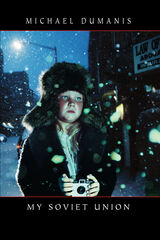 My Soviet Union
Michael Dumanis
University of Massachusetts Press, 2007 The speaker of the simultaneously funny and devastating poems in this remarkable first collection comes from a country that, like the Soviet Union, no longer exists, a place he treats with a mixture of nostalgia, disdain, and bewilderment as he strives to achieve a sense of order in his current disordered environment, a post-apocalyptic landscape with striking similarities to our own. He takes the reader through haunting and disjunctive childhood memories, on visits to Azerbaijan and West Des Moines, through the ravages of physical and spiritual illness, into and out of wars and ill-fated romantic escapades, as he carefully pieces together a complex narrative of self.This is a book of location and dis-location, intent and inaction, struggle and failure, restraint and mania, love and anger, savagery and healing, grief and merriment, elegy and ode. Technically, the poems-often litanies-are marked by syntactical variation, recurring imagery, paradoxical statement, cultural idioms, shifts between high and low diction, a carnivalesque sense of humor, and an elliptical approach to exposition. The speaker also takes on the identities of various personae in the book, including Joseph Cornell, Vladimir Mayakovsky, Pol Pot, a vaudevillian, a movie extra, minor dictators, vagrants, ambigendered lovers, and a lighthouse keeper on an uninhabited island.
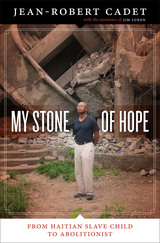 My Stone of Hope: From Haitian Slave Child to Abolitionist
By Jean-Robert Cadet
University of Texas Press, 2011 There are 27 million slaves living in the world today—more than at any time in history. Three hundred thousand of them are impoverished children in Haiti, who "stay with" families as unpaid and uneducated domestic workers, subject to physical, emotional, and sexual abuse. This practice, known locally as restavek ("staying with"), is so widespread that one in ten Haitian children is caught up in this form of slavery. Jean-Robert Cadet was a restavek in Haiti from the late 1950s until the early 1970s. He told the harrowing story of his youth in Restavec: From Haitian Slave Child to Middle-Class American—a landmark book that exposed ongoing child slavery in Haiti. Now in My Stone of Hope, Cadet continues his story from his early attempts to adjust to freedom in American society to his current life mission of eliminating child slavery through advocacy and education. As he recounts his own struggles to surmount the psychological wounds of slavery, Cadet puts a human face on the suffering that hundreds of thousands of Haitians still endure daily. He also builds a convincing case that child slavery is not just one among many problems that Haiti faces as the Western Hemisphere's poorest nation. Rather, he argues that the systematic abuse of so many of its children is Haiti's fundamental problem, because it creates damaged adults who seem incapable of governing the country justly or managing its economy productively. For everyone concerned about the fate of Haiti, the welfare of children, and the freedom of people around the globe, My Stone of Hope sounds an irresistible call to action.
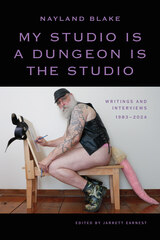 My Studio Is a Dungeon Is the Studio: Writings and Interviews, 1983–2024
Nayland Blake. Edited and with an Introduction by Jarrett Earnest.
Duke University Press, 2025 For four decades, artist, writer, curator, and teacher Nayland Blake has been at the center of discussions of queer aesthetics and contemporary art. Their work has examined racial hybridity, the ins and outs of the BDSM world, and the importance of self-representation. From interviews and critical essays to performance scripts and collage pieces, My Studio Is a Dungeon Is the Studio gathers forty years of Blake’s groundbreaking thought and writing on their personal explorations of kink and creativity as well as on the making, teaching, and curating of art and queer culture. Whether delving into furry fandom or analyzing art, Blake bridges the art and queer kink communities. They also argue that queer artists must champion the work of their peers and elders. As Blake demonstrates throughout, sexual self-expression is an extension of artistic self-expression: they are the same. The volume includes an introduction by artist and critic Jarrett Earnest.
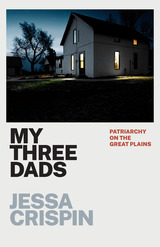 My Three Dads: Patriarchy on the Great Plains
Jessa Crispin
University of Chicago Press, 2022 Sharp and thought-provoking, this memoir-meets-cultural criticism upends the romanticism of the Great Plains and the patriarchy at the core of its ideals.
For many Americans, Kansas represents a vision of Midwestern life that is good and wholesome and evokes the American ideals of god, home, and country. But for those like Jessa Crispin who have grown up in Kansas, the realities are much harsher. She argues that the Midwestern values we cling to cover up a long history of oppression and control over Native Americans, women, and the economically disadvantaged.
Blending personal narrative with social commentary, Crispin meditates on why the American Midwest still enjoys an esteemed position in our country's mythic self-image. Ranging from The Wizard of Oz to race, from chastity to rape, from radical militias and recent terrorist plots to Utopian communities, My Three Dads opens on a comic scene in a Kansas rent house the author shares with a (masculine) ghost. This prompts Crispin to think about her intellectual fathers, her spiritual fathers, and her literal fathers. She is curious to understand what she has learned from them and what she needs to unlearn about how a person should be in a family, as a citizen, and as a child of god—ideals, Crispin argues, that have been established and reproduced in service to hierarchy, oppression, and wealth.
Written in Crispin’s well-honed voice—smart, assured, comfortable with darkness—My Three Dads offers a kind of bleak redemption, the insight that no matter where you go, no matter how far from home you roam, the place you came from is always with you, “like it or not.”
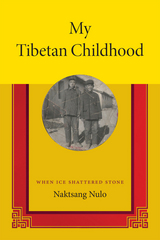 My Tibetan Childhood: When Ice Shattered Stone
Natksang Nulo
Duke University Press, 2014 In My Tibetan Chldhood, Naktsang Nulo recalls his life in Tibet's Amdo region during the 1950s. From the perspective of himself at age ten, he describes his upbringing as a nomad on Tibet's eastern plateau. He depicts pilgrimages to monasteries, including a 1500-mile horseback expedition his family made to and from Lhasa. A year or so later, they attempted that same journey as they fled from advancing Chinese troops. Naktsang's father joined and was killed in the little-known 1958 Amdo rebellion against the Chinese People’s Liberation Army, the armed branch of the Chinese Communist Party. During the next year, the author and his brother were imprisoned in a camp where, after the onset of famine, very few children survived.
The real significance of this episodic narrative is the way it shows, through the eyes of a child, the suppressed histories of China's invasion of Tibet. The author's matter-of-fact accounts cast the atrocities that he relays in stark relief. Remarkably, Naktsang lived to tell his tale. His book was published in 2007 in China, where it was a bestseller before the Chinese government banned it in 2010. It is the most reprinted modern Tibetan literary work. This translation makes a fascinating if painful period of modern Tibetan history accessible in English.
My Vegetable Love: A Journal of a Growing Season
Carl H. Klaus
University of Iowa Press, 2000 My Vegetable Love offers a detailed daily record of gardenng, loving, and living during a single growing season—from the first outdoor planting in early spring to the final fall harvest shortly after Thanksgiving. Yet Klaus describes far more than the toils and triumphs of tending vegetables, as his observations encompass the day-to-day changes in weather and wildlife as well as the life changes in his pets, his wife, and himself. As Patricia Hampl wrote, “Beneath the simplicity of this beguiling gardener's journal lies the captivating story of good life and true love. In the spirit of M. F. K. Fisher's writing about food and drink, Carl Klaus has found in his garden a model of the enduring passions of life and death.”
My Version of the Facts
Carla Pekelis, translated from the Italian by George Hochfield
Northwestern University Press, 2005 "What did it mean to be a Jewish child in Italy at the beginning of the century?" Carla Pekelis asks herself. "As a matter of fact, nothing, absolutely nothing!" But shortly, as fascism began its march through her homeland and racial laws slowly constricted her world, Carla would learn that being a Jew in Italy might indeed have a profound meaning and dire consequences. Her recollections form an absorbing, nuanced portrait of a life transformed, and a world transfigured, by the relentless currents of history.
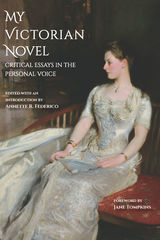 My Victorian Novel: Critical Essays in the Personal Voice
Annette R. Federico
University of Missouri Press, 2020 The previously unpublished essays collected here are by literary scholars who have dedicated their lives to reading and studying nineteenth-century British fiction and the Victorian world. Each writes about a novel that has acquired personal relevance to them––a work that has become entwined with their own story, or that remains elusive or compelling for reasons hard to explain.
These are essays in the original sense of the word, attempts: individual and experiential approaches to literary works that have subjective meanings beyond social facts. By reflecting on their own histories with novels taught, studied, researched, and re-experienced in different contexts over many years, the contributors reveal how an aesthetic object comes to inhabit our critical, pedagogical, and personal lives.
By inviting scholars to share their experiences with a favorite novel without the pressure of an analytical agenda, the sociable essays in My Victorian Novel seek to restore some vitality to the act of literary criticism, and encourage other scholars to talk about the importance of reading in their lives and the stories that have enchanted and transformed them.
The novels in this collection include:
Jane Eyre by Charlotte Brontë
The Duke’s Children by Anthony Trollope
The Adventures of Sherlock Holmes by Arthur Conan Doyle
The Newcomes by William Makepeace Thackeray
Middlemarch by George Eliot
Daniel Deronda by George Eliot
The Return of the Native by Thomas Hardy
Vanity Fair by William Makepeace Thackeray
North and South by Elizabeth Gaskell
Bleak House by Charles Dickens
David Copperfield by Charles Dickens
New Grub Street by George Gissing
The Pickwick Papers by Charles Dickens
Dracula by Bram Stoker
Wuthering Heights by Emily Brontë
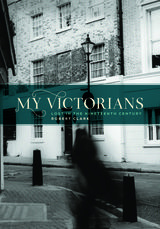 My Victorians: Lost in the Nineteenth Century
Robert Clark
University of Iowa Press, 2019 My Victorians is a hybrid in both form and content, part memoir/extended lyric essay but also a work of biography, photography, and cultural, literary, and art history. This is a travelogue of writer Robert Clark’s attempt to work through a sudden and inexplicable five-year-long obsession focused on Victorian novelists, artists, architecture, and critics. He wends his way through England and Scotland, meticulously tracking down the haunts of Charles Dickens, George Gissing, John Millais, the Bloomsbury Group, and others, and documenting everything in ghostly photographs as he goes.
As Clark delves deeper into the Victorian world, he wonders: What can its artists offer a twenty-first century writer by way of insight into his own life and work? His obsession with Victoriana bleeds into all aspects of his life, even the seemingly incongruous world of online dating. My Victorians is in the spirit of Geoff Dyer’s Out of Sheer Rage and Rebecca Mead’s My Life in Middlemarch. This book considers what happens when heartbreak, eros, faith, and doubt drive us to take refuge in the past.
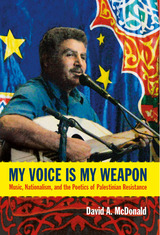 My Voice Is My Weapon: Music, Nationalism, and the Poetics of Palestinian Resistance
David A. McDonald
Duke University Press, 2013 In My Voice Is My Weapon, David A. McDonald rethinks the conventional history of the Palestinian crisis through an ethnographic analysis of music and musicians, protest songs, and popular culture. Charting a historical narrative that stretches from the late-Ottoman period through the end of the second Palestinian intifada, McDonald examines the shifting politics of music in its capacity to both reflect and shape fundamental aspects of national identity. Drawing case studies from Palestinian communities in Israel, in exile, and under occupation, McDonald grapples with the theoretical and methodological challenges of tracing "resistance" in the popular imagination, attempting to reveal the nuanced ways in which Palestinians have confronted and opposed the traumas of foreign occupation. The first of its kind, this book offers an in-depth ethnomusicological analysis of the Israeli-Palestinian conflict, contributing a performative perspective to the larger scholarly conversation about one of the world's most contested humanitarian issues.
 My War against the Nazis: A Jewish Soldier with the Red Army
Adam Broner, with a foreword by Antony Polonsky
University of Alabama Press, 2007 A poignant account of the perils and fortunes of an indomitable survivor of violence in Eastern Europe during World War II. In 1939, to escape Nazi occupation, 14-year-old Adam Broner and his older brother Sam left their home and family in Lodz, Poland, and made their way to the Soviet Union. Adam enlisted in the Red Army to join the fight against the Nazis but was sent to work in a Siberian coal mine instead when his nationality was discovered. After a bold and daring escape from Siberia, Broner reached the Soviet Polish Kosciuszko Army, joined the struggle against the Nazis, participated in the liberation of Poland, and rode victorious into Berlin in 1945. He later learned that his parents, siblings (except Sam), and all other close relatives had perished during the war.
Broner rebuilt his life, established a family, returned to Moscow for a degree in economics, and then went back to Poland, where he accepted a job in the Polish central planning agency. Eventually fed up with the growing anti-Semitism of the Communist government there, the author emigrated to the United States in 1969. He earned a doctorate from Princeton University and served as an economic adviser to New Jersey governors and the state legislature. In retirement, Broner learned portrait painting and reproduced the likenesses of his parents and siblings from memory, which are presented along with their biographies in this book.
In recounting his struggle for survival during some of the most dramatic upheavals of the 20th century— the Great Depression, Nazism, World War II, and the spread of Communism in Central Europe— Broner reveals a life dedicated to the ultimate goal of freedom, which he achieved through a combination of arduous effort and fortunate circumstance.
My War in Italy: On the Ground and in Flight with the 15th Air Force
Keith W. Mason
University of Missouri Press, 2016 Six weeks before Pearl Harbor, Keith Mason received a $150 uniform allowance, a pair of silver wings, and his first assignment as a flight instructor: Randolph Field, Texas. Two years later, he was Squadron Officer in the 460th Bomb Group, 15th Air Force in Spinazzola, Italy - flying the harrowing combat missions he dreamed of as a boy in rural Iowa. As a memoir of one man’s war years, Mason provides insight on the inner workings of serving as an airman during World War II: facing stultifying boredom, stupefying incompetence, paralyzing fear, and stunning success. Details of how crews were selected for combat missions, of the necessity to occasionally break up crews, and of select missions in which Mason was a participant are important additions to the history and literature of this often neglected theater.
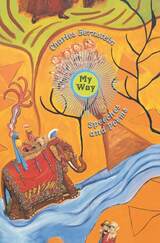 My Way: Speeches and Poems
Charles Bernstein
University of Chicago Press, 1998 "Verse is born free but everywhere in chains. It has been my project to rattle the chains." (from "The Revenge of the Poet-Critic")
In My Way, (in)famous language poet and critic Charles Bernstein deploys a wide variety of interlinked forms—speeches and poems, interviews and essays—to explore the place of poetry in American culture and in the university. Sometimes comic, sometimes dark, Bernstein's writing is irreverent but always relevant, "not structurally challenged, but structurally challenging."
Addressing many interrelated issues, Bernstein moves from the role of the public intellectual to the poetics of scholarly prose, from vernacular modernism to idiosyncratic postmodernism, from identity politics to the resurgence of the aesthetic, from cultural studies to poetry as a performance art, from the small press movement to the Web. Along the way he provides "close listening" to such poets as Charles Reznikoff, Laura Riding, Susan Howe, Ezra Pound, Allen Ginsberg, and Gertrude Stein, as well as a fresh perspective on L=A=N=G=U=A=G=E, the magazine he coedited that became a fulcrum for a new wave of North American writing.
In his passionate defense of an activist, innovative poetry, Bernstein never departs from the culturally engaged, linguistically complex, yet often very funny writing that has characterized his unique approach to poetry for over twenty years. Offering some of his most daring work yet—essays in poetic lines, prose with poetic motifs, interviews miming speech, speeches veering into song—Charles Bernstein's My Way illuminates the newest developments in contemporary poetry with its own contributions to them.
"The result of [Bernstein's] provocative groping is more stimulating than many books of either poetry or criticism have been in recent years."—Molly McQuade, Washington Post Book World
"This book, for all of its centrifugal activity, is a singular yet globally relevant perspective on the literary arts and their institutions, offered in good faith, yet cranky and poignant enough to not be easily ignored."—Publishers Weekly
"Bernstein has emerged as postmodern poetry's sous-chef of insouciance. My Way is another of his rich concoctions, fortified with intellect and seasoned with laughter."—Timothy Gray, American Literature
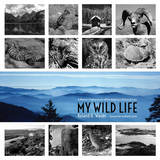 My Wild Life: A Memoir of Adventures within America's National Parks
Roland H. Wauer
Texas Tech University Press, 2014 Looking back at a wonderful way to make a living
Few people have the opportunity to live and work in America's magnificent national parks, let alone in a wide diversity of those great parks. For thirty-two years, beginning when he was hired as a seasonal ranger until he retired in 1989, Roland H. Wauer's career took him to eight national parks, a regional office in Santa Fe, New Mexico, and Chief of the Division of Natural Resources in Washington, DC.
In an "inside-out" look at his career, Wauer takes the reader on a wildlife adventure through a number of those parks, documenting his experiences with the birds and other animals in each one. An avid birder, he made significant contributions to what was known about the bird population, and avian habitats and worked on a number of research projects involving mammals, reptiles and amphibians, fishes, invertebrates, and other wildlife species.
Follow along with Wauer as he recalls flying squirrels, great gray owls, and Clark's nutcrakers at Crater Lake; Nelson's bighorns, prairie falcons, LeConte's thrashers, and sidewinders at Death Valley; flammulated and spotted owls at Zion; and mountain lions, javelinas, peregrine falcons, cave swallows, and Colima warblers at Big Bend.
My Wilderness: Poems
Maxine Scates
University of Pittsburgh Press, 2021 The poems of My Wilderness often take place on the wooded hillside in Oregon where Maxine Scates has lived since the mid-1970s. They chronicle how the woods, which were once a refuge, have turned into a landscape of change where trees once numerous are now threatened by storm and the presence of the humans who live among them. These poems also engage her partner’s threatening illness, the death of her closest friend, and the death, at age one hundred, of her mother, an indomitable figure who led Scates through a working-class childhood in Los Angeles fraught with domestic violence. Grounded in the shifting borders of migrations and extinctions plant, animal, and human, of memory and grief, My Wilderness inevitably asks us to consider not only our own mortality but also our impact on the world around us.
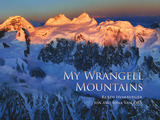 My Wrangell Mountains
Ruedi Homberger, Jon and Jona Van Zyle
University of Alaska Press, 2011 High atop cascading waterfalls and deep within the lush green depths of the valleys, Swiss photographer Ruedi Homberger has for more than twenty years captured in photographs the majestic beauty of eastern Alaska’s Wrangell Mountain range. In addition to summiting some of the Wrangells’ loftiest peaks, Homberger has in recent years incorporated a technically challenging new approach into his work. Flying above the mountains in a small plane, Homberger literally goes to new heights to reveal a series of stunning aerial views. The first book-length collection of photographs focusing exclusively on the Wrangell-Saint Elias National Park and Preserve, My Wrangell Mountains offers readers a rare opportunity to “stand among the giants.” Included in this magnificent oversized volume are nearly three hundred full-color photographs and an accompanying selection of sketches by award-winning illustrator Jon Van Zyle.
Myanmar's Education Reforms: A pathway to social justice?
Marie Lall
University College London, 2020 Myanmar’s Education Reforms reviews the changing state of education in Myanmar as the country has dealt with a profound transformation over the past decade and a half. Education has served as a litmus test for judging the level of openness of any Myanmar government, especially those in place for the past seven decades. Marie Lall situates education within the context of the wider reforms and the process of making peace that began in 2012, using it as a case study on how these reforms have progressed and continue to progress. Drawing on data collected over fifteen years in the field, Lall argues that despite controlling the majority of the civilian government, the National League for Democracy is not delivering on its promise of social justice.
 Mycenaean Pictorial Vase Painting
Emily Vermeule and Vassos Karageorghis
Harvard University Press, 1982 Here is a vividly written and fully illustrated assessment of the figured decoration on Late Bronze Age vessels from the Greek mainland, Cyprus, and the Aegean islands. It will become a standard source on the Mycenaean imagination.
Emily Vermeuele and Vassos Karageorghis describe the hunting scenes, chariots, sphinxes and griffins, bulls and birds, people dancing or fighting, and cult scenes on Mycenaean pottery. They analyze forms and styles, sources and influences, and the development of conventions. They relate what is known about the painters and their workshops, and the overseas trade. A catalogue of the 700 remaining whole and broken examples, now in museums around the world, is appended. Over 950 illustrations provide a comprehensive view of the art.
This study tells us much about Bronze Age civilization, and it opens the way to an understanding of the relationship of Greek art to figure drawing in pre-Classical times.
 Mycocosmic
Lesley Wheeler
Tupelo Press, 2025 Mycocosmic offers intricately woven incantations—prayers, hexes, and charms—all of which call for a transformation of language, grief, and the self.
“Good things come to you through fire,” a Tarot reader told Lesley Wheeler as she was composing what became her sixth poetry collection, Mycocosmic. But how could that be true, while the planet was burning and life slamming her with one loss after another? Then she learned about pyrophilic fungi that lurk in soil until activated by fire. Enter mycelia and a teeming underground world that metabolizes death, changing what remains so that life can begin anew.
Mycocosmic offers intricately woven spell poems—prayers, hexes, charms, and invocations—that call for transformation. A parent’s death gives Wheeler the freedom to reveal difficult truths about family violence and her sexuality; a midlife mental health crisis transforms her sense of self. Incantatory language channeled through a wide variety of forms—including free verse, litany, sonnets, the bref double, the golden shovel, and the villanelle—empowers these shifts.
Beneath these poems runs a book-length essay in verse, “Underpoem [Fire Fungus],” sending tendrils across the footer of each page. This poetic mycelium nourishes metamorphosis and highlights its urgency. As Merlyn Sheldrake writes in Entangled Life, “Mycelium describes the most common of fungal habits, better thought of not as a thing but as a process: an exploratory, irregular tendency.” Poetry is rooted in real and imagined communities and conversations. Mycocosmic demonstrates how interdependence binds us together.
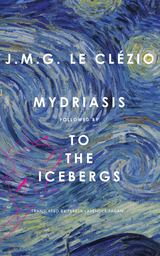 Mydriasis: Followed by ‘To the Icebergs’
J.M.G. Le Clezio
Seagull Books, 2019 While presenting the Nobel Prize in Literature to J. M. G. Le Clézio in 2008, the Nobel Committee called him the “author of new departures, poetic adventure and sensual ecstasy, explorer of a humanity beyond and below the reigning civilization.” In Mydriasis, the author proves himself to be precisely that as he takes us on a phantasmagoric journey into parallel worlds and whirling visions. Dwelling on darkness, light, and human vision, Le Clézio’s richly poetic prose composes a mesmerizing song and a dizzying exploration of the universe—a universe not unlike the abysses explored by the highly idiosyncratic Belgian poet Henri Michaux.
Michaux is, in fact, at the heart of To the Icebergs. Fascinated by his writing, Le Clézio includes Michaux’s "poem of the poem," "Iniji," thereby allowing the poet’s voice to emerge by itself. What follows is much more than a simple analysis of the poem; rather, it is an act of complete insight and understanding, a personal appropriation and elevation of the work. Written originally in the 1970s and now translated into English for the first time, these two brief, incisive and haunting texts will further strengthen the reputation of one of the world’s greatest and most visionary living writers.
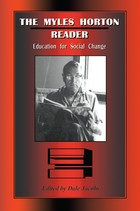 The Myles Horton Reader: Education For Social Change
Myles Horton
University of Tennessee Press, 2003 Cornel West has called Myles Horton “an indescribably courageous and visionary white brother from Tennessee.” Horton (1905-1990) cofounded the Highlander Folk School (now known as the Highlander Research and Education Center), an institution controversial from its beginnings. During the early labor movement, the Highlander School sponsored programs for both union organizers and rank-and-file members; the staff of Highlander saw education as a way to approach and work through problems. Issues of race were always important to the school, which became a beacon for the civil rights movement; its summer institutes included such influential participants as Rosa parks, Martin Luther King Jr., and Andrew young. His commitment to education as an agent of social change allowed Horton to see himself as both a teacher and a student, as one who could learn from others as well as help others learn. The Myles Horton Reader presents essays, speeches, and interviews, giving the reader a grounding in the pathbreaking work of an extraordinary man.
The editor: Dale Jacobs is assistant professor of English and director of composition at the University of Windsor in Ontario, Canada. His work has appeared in Composition Studies, Journal of the Assembly for Expanded Perspectives on Learning, National Writing Project Quarterly, and other publications.
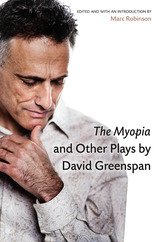 The Myopia and Other Plays by David Greenspan
David Greenspan and Marc Robinson
University of Michigan Press, 2012 Playwright and actor David Greenspan has been a leading figure in Manhattan's downtown performance scene for over twenty years. His numerous accolades include a Guggenheim fellowship and four Obie Awards for his acting and writing, and most recently a fifth Obie for Sustained Achievement. Tony Kushner once declared Greenspan "probably all-around the most talented theater artist of my generation," and the New York Times has called his performances "irresistible." The Myopia and Other Playsbrings together five of Greenspan's most important works, accompanied by a critical introduction and new interview with the playwright. Greenspan's work---often semiautobiographical, always psychologically intense---deals with issues of memory, family, doubt, and sexuality. The plays in this collection take particular interest in the motivations for erotic and aesthetic expression, forces inextricably linked in Greenspan's world. Critic and scholar Marc Robinson's informative introduction and lively interview with Greenspan further increase the collection's appeal to lovers of inventive playwriting, as well as students and scholars in the fields of Performance Studies, English, American Studies, and LGBT Studies.
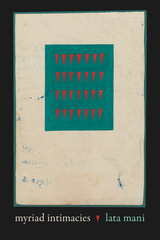 Myriad Intimacies
Lata Mani
Duke University Press, 2022 In Myriad Intimacies postcolonial theorist, spiritual practitioner, and filmmaker Lata Mani oscillates between text and video, poetry and prose, genre and form, register and voice, and secular and sacred to offer a transmedia exploration of the interrelatedness of lives, concepts, frameworks, and aspects of self. She draws on concepts from tantra—a philosophy that celebrates matter as alive, embodiment as sacred, and the senses as a form of intelligence—alongside feminist, critical race, and cultural theory to meditate on the ways in which everyone and everything exists in mutually constitutive interrelations. Addressing issues ranging from desire, the body, nature, and love, to otherness, identity politics, social justice, #MeToo, and the COVID-19 pandemic, Mani foregrounds the power and necessity of recognizing relationality as foundational. Throughout, she offers a way of reframing what we think we know and how we come to know it, demonstrating that it is only by acknowledging and embracing the indivisible and interdependent nature of existence that we restore our true intimacy with each other and the world.
 A Myriad of Tongues: How Languages Reveal Differences in How We Think
Caleb Everett
Harvard University Press, 2023 An award-winning look at the relationship between the language we speak and our perception of such fundamentals of experience as time, space, color, and smells.
We tend to assume that all languages categorize ideas and objects similarly, reflecting our common human experience. But in fact many basic concepts are not universal. Speakers of different languages literally see and think about the world differently.
Caleb Everett takes readers around the globe, explaining what linguistic diversity shows us about human culture. For instance, though we may think that everybody refers to time in spatial terms—in English, it “passes us by”—speakers of the Amazonian language Tupi Kawahib never do. In fact, Tupi Kawahib has no word for “time” at all. And while it has long been understood that languages categorize colors that speakers regularly encounter, evidence also suggests that the color words at our disposal affect how we actually perceive colors. Similarly, the terms available to us affect the range of smells we can identify.
Why do some cultures talk anthropocentrically about things being to one’s “left” or “right,” while others use geocentric words like “east” and “west”? What is the connection between what we eat and the sounds we make? A Myriad of Tongues answers these and other questions, yielding profound insights into fundamentals of human communication and experience.
Myrrh, Mothwing, Smoke: Erotic Poems
Edited by Jeffrey Levine and Marie Gauthier
Tupelo Press, 2013 In 2007, the Tupelo Press Poetry Project was established to provide poets and creative writing teachers with engaging, challenging prompts or provocations for writing new poems. Contributors include Cynthia Rausch Allar, Michelle Bitting, Lisa Coffman, Amy Dryansky, Li Yun Alvarado, Paula Brancato, Gillian Cummings, Darla Himeles, Joel F. Johnson, Christopher Cokinos, Amy MacLennan, Stephen Massimilla, Barbara Mossberg, Susanna Rich, Aubrey Ryan, Anna Claire Hodge, Janet R. Kirchheimer, Conley Lowrance, Lea Marshall, Mary Ann Mayer, Steven Paschall, Liz Robbins, Jo Anne Valentine Simson, Jeneva Stone, Molly Spencer, Judith Terzi, Gail Thomas, Kim Triedman, Bruce Willard, P. Ivan Young
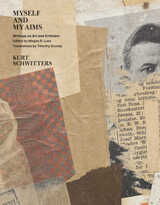 Myself and My Aims: Writings on Art and Criticism
Kurt Schwitters
University of Chicago Press, 2021 Kurt Schwitters was a major protagonist in the histories of modern art and literature, whose response to the contradictions of modern life rivals that of Marcel Duchamp in its importance for artists working today. His celebrated Merz pictures—collaged and assembled from the scrap materials of popular culture and the debris of the studio, such as newspaper clippings, wood, cardboard, fabric, and paint—reflect a lifelong interest in collection, fragmentation, and abstraction, techniques he also applied to language and graphic design.
As the first anthology in English of the critical and theoretical writings of this influential artist, Myself and My Aims makes the case for Schwitters as one of the most creative thinkers of his generation. Including material that has never before been published, this volume presents the full range of his prolific writing on the art and attitudes of his time, joining existing translations of his children’s stories, poetry, and fiction to give new readers unprecedented access to his literary imagination. With an accessible introduction by Megan R. Luke and elegant English translations by Timothy Grundy, this book will prove an exceptional resource for artists, scholars, and enthusiasts of his art.
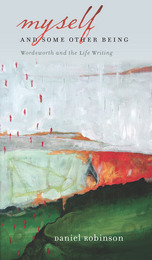 Myself and Some Other Being: Wordsworth and the Life Writing
Daniel Robinson
University of Iowa Press, 2014 As a young writer with neither profession nor money, William Wordsworth committed himself to a career as a poet, embracing what he believed was his destiny. But even the “giant Wordsworth,” as his friend and collaborator Samuel Taylor Coleridge called him, had his doubts. In Myself and Some Other Being, Daniel Robinson presents a young Wordsworth, as ambitious and insecure as any writer starting out, who was trying to prove to himself that he could become the great poet he desired to be and that Coleridge, equally brilliant and insecure, believed he already was.
Myself and Some Other Being is the story of Wordsworth becoming Wordsworth by writing the fragments and drafts of what would eventually become The Prelude, an autobiographical epic poem addressed to Coleridge that he hid from the public and was only published after his death in 1850. Feeling pressured to write the greatest epic poem of all time, a task set for him by Coleridge, Wordsworth feared that he was not up to the challenge and instead looked inside himself for memories and materials that he might make into poetry using the power of his imagination. What he found there was another Wordsworth—not exactly the memory of his younger self but rather “some other being” that he could adapt for an innovative kind of life-writing that he hoped would justify his writing life. By writing about himself and that other being, Wordsworth created an innovative autobiographical epic of becoming that is the masterpiece he believed he had failed to write.
In focusing on this young, ambitious, yet insecure Wordsworth struggling to find his place among other writers, Robinson ably demonstrates how The Prelude may serve as a provocative, instructive, and inspirational rumination on the writing of one’s own life. Concentrating on the process of Wordsworth’s endless revisions, the real literary business of creativity, Robinson puts Wordsworth forward as a model and inspiration for the next generation of writers.
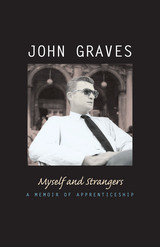 Myself and Strangers: A Memoir of Apprenticeship
By John Graves
University of Texas Press, 2005 In Myself and Strangers, John Graves, the highly regarded author of Goodbye to a River and other classic works, recalls the decade-long apprenticeship in which he found his voice as a writer. He recounts his wanderings from Texas to Mexico, New York, and Spain, where, like Hemingway, he hoped to find the material with which to write books that mattered. With characteristic honesty, Graves admits the false starts and dead ends that dogged much of his writing, along with the exhilaration he felt when the words finally flowed. He frankly describes both the pleasures and the restlessness of expatriate life in Europe after World War II—as well as his surprising discovery, when family obligations eventually called him home to Texas, that the years away had prepared him to embrace his native land as the fit subject matter for his writing. For anyone seeking the springs that fed John Graves' best-loved books, this memoir of apprenticeship will be genuinely rewarding.
 Mysore Modern: Rethinking the Region under Princely Rule
Janaki Nair
University of Minnesota Press, 2011 Mysore Modern reconceptualizes modernity in India using the history of the Princely State of Mysore. In this forcefully argued work, Janaki Nair critiques earlier notions of the native states of India as spaces that were either defined entirely by the dominant narratives of colonial/national modernity or were relatively untouched by them. Grounded in political history, and deriving insights from a wide range of visual, social, and legal texts and issues, Mysore Modern reperiodizes the modern by connecting these apparently discrepant registers to build up a case for a specifically regional, “monarchical modern” moment in Indian history. Nair examines mural and portraiture traditions, as well as forms of memorialization and nationalization of art and architectural practices. The volume also considers bureaucratic efforts centered on the use of law and development as instruments of modernity. As Nair demonstrates, the resolution of struggles about the significance of the past in the present, the control of women’s sexuality and labor, and the role of the bureaucracy in Mysore reveal the imperatives of taking the region as the inaugural site for writing a history of Indian modernity.
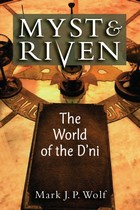 Myst and Riven: The World of the D'ni
Mark J.P. Wolf
University of Michigan Press, 2011 “Myst and Riven is well-written, interesting, on-topic, insightful, and a real pleasure to read.”
—Edward Castronova, Indiana University Video games have become a major cultural force, and within their history, Myst and its sequel Riven stand out as influential examples. Myst and Riven: The World of the D’ni is a close analysis of two of the most popular and significant video games in the history of the genre, investigating in detail their design, their functionality, and the gameplay experience they provide players. While scholarly close analysis has been applied to films for some time now, it has only rarely been applied at this level to video games. Mark J. P. Wolf uses elements such as graphics and sound, the games’ mood and atmosphere and how they are generated, the geography and design of the digital worlds, and the narrative structures of the games to examine their appeal to both critical and general audiences, their legacy, and what made them great. Myst and Riven is the inaugural book in the Landmark Video Games series, edited by Mark J. P. Wolf and Bernard Perron, which is the first series to examine individual video games of historical significance.
Mysteries of Africa
Eugene Schleh
University of Wisconsin Press, 1991 The roles of Africans have changed over time in detective/mystery fiction, reflecting their changing real roles in the continent. These studies provide an entertaining way to follow that changed reality.
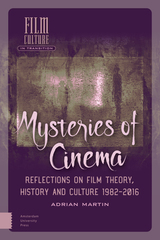 Mysteries of Cinema: Reflections on Film Theory, History and Culture 1982-2016
Adrian Martin
Amsterdam University Press, 2018 The major essays of the distinguished and prolific Australian-born film critic Adrian Martin have long been difficult to access, so this anthology, which collects highlights of his work in one volume, will be welcomed throughout film studies. Martin offers indepth analysis of many genres of films while providing a broad understanding of the history of cinema and the history of film criticism and culture. These vibrant, highly personal essays, written between 1982 and 2016, balance breadth across cinema theory with almost encyclopedic detail, ranging between aesthetics, cinephilia, film genre, criticism, philosophy, and cultural politics. Mysteries of Cinema circumscribes a special cultural period that began with the dream of critique as a form of poetic writing, and today arrives at collaborative experiments in audiovisual essays. Throughout these essays, Martin pursues a particular vision of what cinema has been, what it is, and what it still could be.
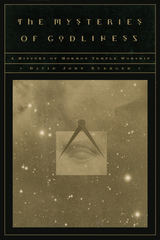 The Mysteries of Godliness: A History of Mormon Temple Worship
David J. Buerger
Signature Books, 2002 A veil of secrecy surrounds Mormon temple worship. While officially intended to preserve the sacredness of the experience, the silence leaves many Latter-day Saints mystified. What are the derivation and development of the holy endowment, and if these were known, would the experience be more meaningful? Modern parishioners lack context to interpret the arcane and syncretistic elements of the symbolism.
For instance, David Buerger traces the evolution of the initiatory rites, including the New Testament-like foot washings, which originated in the Ohio period of Mormon history; the more elaborate Old Testament-like washings and anointings, which began in Illinois and were performed in large bathtubs, with oil poured over the initiate’s head; and the vestigial contemporary sprinkling and dabbing, which were begun in Utah. He shows why the dramatic portions of the ceremony blend anachronistic events—an innovation foreign to the original drama.
Buerger addresses the abandonment of the adoption sealing, which once linked unrelated families, and the near-disappearance of the second anointing, which is the crowning ordinance of the temple. He notes other recent changes as well. Biblical models, Masonic prototypes, folk beliefs, and frontier resourcefulness all went into the creation of this highest form of Mormon Temple worship. Diary entries and other primary sources document its evolution.
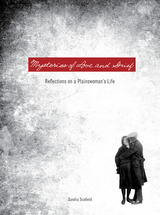 Mysteries of Love and Grief: Reflections on a Plainswoman's Life
Sandra Scofield
Texas Tech University Press, 2015 Frieda Harms was born into a farming family in Indian Territory in 1906. Widowed at thirty and left with three children in the midst of the Great Depression, she worked as a farmer, a railroad cook, a mill worker, and a nurse in four states. She died in 1983.
Sandra Scofield spent most of her childhood with her grandmother Frieda and remained close to her in adulthood. When Frieda died, Sandra received her Bible and boxes of her photographs, letters, and notes. For thirty years, Sandra dipped into that cache.
Sandra always sensed an undercurrent of hard feelings within her grandmother, but it was not until she sifted through Frieda’s belongings that she began to understand how much her life had demanded, and how much she had given. At the same time, questions in Sandra’s own history began to be answered, especially about the tug-of-war between her mother and grandmother. At last, in Mysteries of Love and Grief, Scofield wrestles with the meaning of her grandmother’s saga of labor and loss, trying to balance her need to understand with respect for Frieda’s mystery.
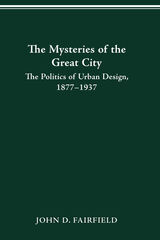 THE MYSTERIES OF THE GREAT CITY: THE POLITICS OF URBAN DESIGN, 1877-1937
JOHN FAIRFIELD
Ohio State University Press, 1997 The Mysteries of the Great City examines the physical, cultural, and political transformations of the American city between the Gilded Age and the New Deal. Focusing on New York, Chicago, and Cincinnati, John Fairfield demonstrates that these transformations before and after the advent of city planning were the result of political decisions influenced by corporate and private wealth. The expansion and reorganization of the great city stood out as the most visible symbol of the transformation. The new metropolitan form, with its skyscraping business center, industrial satellites, crowded working-class neighborhoods, and exclusive suburbs, embodied an emerging corporate order. But the metropolis also disguised the new order and gave it an apparent physical implacability and inevitability that obscured the role of choice in its creation and therefore placed it beyond criticism. Fairfield unravels the mysteries of the new form to reveal the centrality of power and politics in urban design. While acknowledging that a great many factors shaped urban development, Fairfield underscores the decisive role of human design. He argues that American cities, both before and after the advent of professional planning, have always been in some measure “planned.” Discussing such figures as Frederick Law Olmsted, Henry George, Daniel Burnham, Frederic Howe, Edward Bassett, Robert E. Park, and Louis Wirth, Fairfield illuminates the political and intellectual conflicts among advocates of alternative paths of urban development. The Mysteries of the Great City will enlighten all readers interested in the development of cities, particularly urban historians and planners. In pointing to the Gilded Age as a period of great possibilities of progressive reform, this study will also reward readers interested in the historical foundations of our modern society.
 Mysteries of the Lord's Prayer: Wisdom from the Early Church
John Gavin
Catholic University of America Press, 2021 The Lord’s Prayer contains mysteries generally overlooked by most Christians. For the Fathers of the Church, such mysteries or “difficulties”—many of which continue to puzzle modern scholars—marked divinely inspired points for prayer and reflection. Saints Cyprian of Carthage, Augustine of Hippo, Peter Chrysologus, Maximus the Confessor and others grappled with the hidden meanings behind these questions and the fruits of their efforts can inspire contemporary readers.
In this volume John Gavin, SJ explores eight mysteries of the Lord’s prayer in light of the early Church’s wisdom: How can human beings call God “Father”? Where is God the Father? How can God grow in holiness? Was there ever a time when God did not rule? Are there limitations to God’s will? Why should we seek bread? Can we make a deal with God? Does God tempt us? Without ignoring the insights of contemporary exegesis, this volume demonstrates that the responses of the Fathers to these questions have continuing relevance. Not only did they understand the issues surrounding linguistic, textual, and theological difficulties, but they also grasped the nuances of Christ’s words as illuminated by the scriptures as a whole. They provide an interpretation that challenges the mind and transforms the heart.
Mysteries of the Lord's Prayer offers the general reader, as well as scholars, a chance to rediscover a prayer that unites Christians throughout the world. It also includes appendices to aid those who wish to explore the Fathers’ writings on their own for a deeper encounter with the wisdom of the early Church.
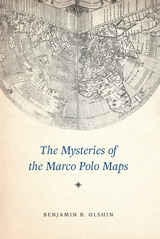 The Mysteries of the Marco Polo Maps
Benjamin B. Olshin
University of Chicago Press, 2014 In the thirteenth century, Italian merchant and explorer Marco Polo traveled from Venice to the far reaches of Asia, a journey he chronicled in a narrative titled Il Milione, later known as The Travels of Marco Polo. While Polo’s writings would go on to inspire the likes of Christopher Columbus, scholars have long debated their veracity. Some have argued that Polo never even reached China, while others believe that he came as far as the Americas. Now, there’s new evidence for this historical puzzle: a very curious collection of fourteen little-known maps and related documents said to have belonged to the family of Marco Polo himself.
In The Mysteries of the Marco Polo Maps, historian of cartography Benjamin B. Olshin offers the first credible book-length analysis of these artifacts, charting their course from obscure origins in the private collection of Italian-American immigrant Marcian Rossi in the 1930s; to investigations of their authenticity by the Library of Congress, J. Edgar Hoover, and the FBI; to the work of the late cartographic scholar Leo Bagrow; to Olshin’s own efforts to track down and study the Rossi maps, all but one of which are in the possession of Rossi’s great-grandson Jeffrey Pendergraft. Are the maps forgeries, facsimiles, or modernized copies? Did Marco Polo’s daughters—whose names appear on several of the artifacts—preserve in them geographic information about Asia first recorded by their father? Or did they inherit maps created by him? Did Marco Polo entrust the maps to Admiral Ruggero Sanseverino, who has links to Rossi’s family line? Or, if the maps have no connection to Marco Polo, who made them, when, and why?
Regardless of the maps’ provenance, Olshin’s tale—stretching from the remote reaches of the northern Pacific to early Chinese legends—takes readers on a journey confounding yet fascinating, offering insights into Italian history, the age of exploration, and the wonders of cartography.
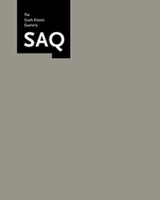 Mysterious Actions: New American Drama, Volume 99
Jody McAuliffe, ed.
Duke University Press With this special issue, South Atlantic Quarterly presents five never-before-published plays by some of the brightest stars in contemporary American theater. Mysterious Actions presents works that go beyond realism and will challenge audiences’ expectations,moving them toward a revolutionary theatrical experience. The plays by Neal Bell, Nilo Cruz, Erin Cressida Wilson, Marlane Meyer, and Don DeLillo employ techniques and situations that are original and unexpected. Each is followed by a scholarly analysis by such respected critics as Fredric Jameson, José Esteban Muñoz, and Frank Lentricchia, as well as an interview with each playwright. Monster, by Neal Bell, is a powerful adaptation of Mary Shelley’s Frankenstein, thrusting the violence of the novel into the sharp relief of our times. Nilo Cruz’s Two Sisters and a Piano takes an intimate look at Cuba during the collapse of the Soviet Union and contemplates the meaning of “Cubanness” in today’s culture. The Mystery at the Middle of Ordinary Life, DeLillo’s short play, meditates on the “gradually shattering” nature of human relationships. In The Trail of Her Inner Thigh, Erin Cressida Wilson follows a boy-man as he embarks on an epic journey into emotionality and sensuality with the help of the women in his life. And Marlane Meyer’s play, The Mystery of Attraction, navigates the dangerous waters of contemporary masculinity. Contributors. Neal Bell, Nilo Cruz, Don DeLillo, Frederic Jameson, William Davies King, Frank Lentricchia, Jody McAuliffe, Marlane Meyer, José Esteban Muñoz, Teri Reynolds, Erin Cressida Wilson
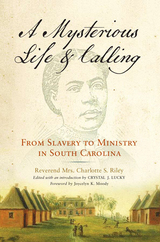 A Mysterious Life and Calling: From Slavery to Ministry in South Carolina
Reverend Mrs. Charlotte S. Riley, Edited with an introduction by Crystal J. Lucky, Foreword by Joycelyn K. Moody
University of Wisconsin Press, 2016 Preacher, teacher, and postmistress, Charlotte Levy Riley was born into slavery but became a popular evangelist after emancipation. Although several nineteenth-century accounts by black preaching women in the northern states are known, this is the first discovery of such a memoir in the South.
Born in 1839 in Charleston, South Carolina, Riley was taught to read, write, and sew despite laws forbidding black literacy. Raised a Presbyterian, she writes of her conversion at age fourteen to the African Methodist Episcopal (AME) church, embracing its ecstatic worship and led by her own spiritual visions. Her memoir is revelatory on many counts, including life in urban Charleston before and after emancipation, her work as a preacher at multiracial revivals, the rise of African American civil servants in the Reconstruction era, and her education and development as a licensed female minister in a patriarchal church.
Crystal J. Lucky, who discovered Riley’s forgotten book in the library archives at Wilberforce University in Ohio, provides an introduction and notes on events, society, and religious practice in the antebellum era and during the Civil War and Reconstruction, and places A Mysterious Life and Calling in the context of other spiritual autobiographies and slave narratives.
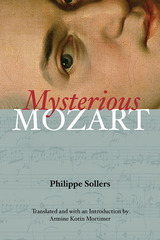 Mysterious Mozart
Philippe Sollers, Translated and with an Introduction by Armine Kotin Mortimer
University of Illinois Press, 2010 Both a beguiling portrait of the artist and an idiosyncratic self-portrait of the author, Mysterious Mozart is Philippe Sollers's alternately oblique and searingly direct interpretation of Wolfgang Amadeus Mozart's oeuvre and lasting mystique, audaciously reformulated for the postmodern age. With a mix of slang, abstractions, quotations, first- and third-person narratives, and blunt opinion, French writer and critic Philippe Sollers taps into Mozart's playful correspondence and the lesser-known pieces of his enormous repertoire to analyze the popularity and public perceptions of his music. Detailing Mozart's drive to continue producing masterpieces even when saddled with debt and riddled with illness and anxiety, Sollers powerfully and meticulously analyzes Mozart's seven last great operas using a psychoanalytical approach to the characters' relationships. As Sollers explores themes of constancy, prodigy, freedom, and religion, he offers up bits of his own history, revealing his affinity for the creative geniuses of the eighteenth century and a yearning to bring that era's utopian freedom to life in contemporary times. What emerges is an inimitable portrait of a man and a musician whose greatest gift is a quirky companionability, a warm and mysterious appeal that distinguishes Mozart from other great composers and is brilliantly echoed by Sollers's artful tangle of narrative.
The Mysterious Science of the Law: An Essay on Blackstone's Commentaries
Daniel J. Boorstin
University of Chicago Press, 1996 Referred to as the "bible of American lawyers," Blackstone's Commentaries on the Laws of England shaped the principles of law in both England and America when its first volume appeared in 1765. For the next century that law remained what Blackstone made of it. Daniel J. Boorstin examines why Commentaries became the most essential knowledge that any lawyer needed to acquire. Set against the intellectual values of the eighteenth century-and the notions of Reason, Nature, and the Sublime—Commentaries is at last fitted into its social setting. Boorstin has provided a concise intellectual history of the time, illustrating all the elegance, social values, and internal contradictions of the Age of Reason.
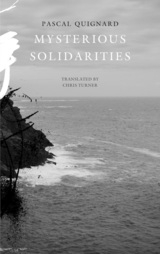 Mysterious Solidarities
Pascal Quignard
Seagull Books, 2020 When translator Claire Methuen travels back to her hometown of Dinard for a family wedding, she runs into her old piano teacher Madame Ladon. After befriending the ageing woman, Methuen begins to toy with the idea of a permanent return to live in Brittany. She becomes increasingly obsessed by her childhood sweetheart, Simon Quelen, who, now married and a father, still lives in a village further down the coast where he is the local pharmacist and mayor. Having moved into a farmhouse, she soon spends her days walking the heathland above the cliffs and spying on him as he sails in the bay. As she walks, she is at one with the land of her childhood and youth, “her skull emptying into the landscape.” And when her younger brother Paul comes to join her there, the web of solidarities is further enriched.
This is a tale of dramatic episodes, told through intermingling voices and the atmospherics of the austere Breton landscape. Ultimately, it is a story of obsessional love and of a parallel sibling bond that is equally strong.
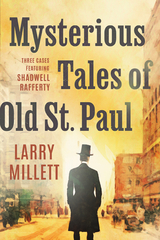 Mysterious Tales of Old St. Paul: Three Cases Featuring Shadwell Rafferty
Larry Millett
University of Minnesota Press, 2024 Tales of murder and revenge: the early exploits of detective Shadwell Rafferty Shadwell Rafferty’s last case may have led to his murder, but naturally—and fortunately, for followers of the indefatigable St. Paul detective—there’s more to the story. Mysterious Tales of Old St. Paul gathers three novellas from Larry Millett, casting back to Rafferty’s beginnings to recount a trio of intriguing cases that honed his skills before he joined forces with Sherlock Holmes. In “Death in the News,” St. Paul citizens wake one morning to find that the sign on downtown’s tallest building that reads PIONEER PRESS has been altered—at considerable effort—to LIARS. An elaborate prank, yes, but it foreshadows a far worse crime, and Rafferty is on the case. In “The Birdman of Summit Avenue,” cats are turning up dead in the yards of St. Paul’s prominent citizens, and suspicion swiftly falls on the wealthy avian enthusiast Ambrose Harriman, but the case turns darker still when a neighborhood boy is found murdered in Harriman’s yard. In “The Gold King,” an enigmatic stranger arrives in town, calling himself the Gold King and announcing his plans to unearth hidden treasure, which eventually leads to a shocking conclusion. Steeped in the mystery and history of nineteenth-century St. Paul, these interlocking detective stories feature the characters—and the local character—that have made the Shadwell Rafferty series irresistible. Spellbinding as ever, these stories also afford the curious pleasure of watching Rafferty find his footing on his way to becoming the consummate detective whose exploits have delighted readers again and again.
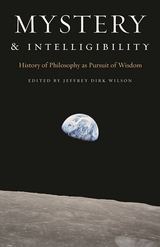 Mystery and Intelligibility: History of Philosophy as Pursuit of Wisdom
Jeffrey Dirk Wilson
Catholic University of America Press, 2021 Philosophy is born in its history as pursuit of the wisdom we are never able fully to know. Mystery and Intelligibility: History of Philosophy as Pursuit of Wisdom both argues for that method and presents the results it can achieve.
Editor Jeffrey Dirk Wilson has gathered essays from six philosophical luminaries. In “History, Philosophy, and the History of Philosophy,” Timothy B. Noone provides the volume’s discourse on method in which he distinguishes three tiers of history. History of philosophy as method occupies the third and highest tier. John Rist reckons with contemporary corruption of the method in “A Guide for the Perplexed or How to Present or Pervert the History of Philosophy.” Wilson’s own essay, “Wonder and the Discovery of Being: From Homeric Myth to the Natural Genera of Early Greek Philosophy,” shows the loss of wonder, so evident in mythology, by early Greek thinkers and its recovery by Plato and Aristotle. In “Metaphysics and the Origin of Culture,” Donald Phillip Verene demonstrates the wide cultural implications of philosophical discoveries even when the discovery is the boundary of what humans can know. William Desmond offers an essay, “Flux-Gibberish: For and Against Heraclitus,” that owes as much to the humor of James Joyce as to the philosophical insights of philosophers, ancient, medieval, and modern. Eric D. Perl’s essay turns to the apophatic character of pursuing wisdom, perhaps especially when asking what may be the most fundamental metaphysical question: “Into the Dark: How (Not) to Ask, ‘Why is There Anything at All.’” Philipp W. Rosemann concludes the volume with the question best asked at the end of this literary seminar, “What is Philosophy?”
Although there are philosophers within the analytic and continental schools who are committed to the history of philosophy, Mystery and Intelligibility demonstrates that history of philosophy as a third and distinct philosophical method is revelatory of the nature and structure of reality.
Mystery Fanfare: A Composite Annotated Index to Mystery and Related Fanzines 1963–1981
Michael L. Cook
University of Wisconsin Press, 1983 This work is a composite index of the complete runs of all mystery and detective fan magazines that have been published, through 1981. Added to it are indexes of many magazines of related nature. This includes magazines that are primarily oriented to boys' book collecting, the paperbacks, and the pulp magazine hero characters, since these all have a place in the mystery and detective genre.
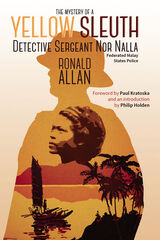 The Mystery of A Yellow Sleuth: Detective Sergeant Nor Nalla, Federated Malay States Police
Ronald Allan
National University of Singapore Press, 2018 In 1931 a book full of thrilling adventures set mostly in Malaya appeared in London under the title A Yellow Sleuth: Being the Autobiography of “Nor Nalla” (Detective-Sergeant Federated Malay States Police). Reviewers concluded that the stories were just barely plausible, but agreed that the author knew Malaya intimately.
Nor Nalla is an anagram for Ron Allan, who spent four years working on a rubber plantation in Malaya shortly before World War I. Like Kipling’s famous colonial spy, Kim, the “yellow sleuth” is a master of undercover operations, and this reissued work explores vast locales, from the forests of Malaya to the ports of Java, from London’s underbelly to the camps of Chinese laborers in WWI Flanders. Throughout, readers are left to differentiate between fiction and fact, and ponder questions of authorship, in this “impossible fantasy of hybridity,” as Phillip Holden calls it in his perceptive introduction.
Contemporary readers will not only savor the book’s tales of adventure and detection, they will also appreciate the ways that the author brings to life— and reveals the contradictions of—late colonial society.
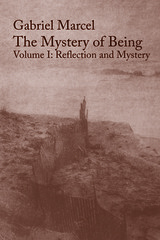 Mystery Of Being Vol 1: Reflection & Mystery
Gabriel Marcel
St. Augustine's Press, 2001 The Mystery of Being contains the most systematic exposition of the philosophical thought of Gabriel Marcel, a convert to Catholicism and the most distinguished twentieth-century exponent of Christian existentialism. Its two volumes are the Gifford lectures which Marcel delivered in Aberdeen, Scotland, in 1949 and 1950. Marcel's work fundamentally challenges most of the major positions of the atheistic existentialists (Sartre, Beauvoir, Camus), especially their belief in an absurd, meaningless, godless universe.
These volumes deal with almost all of the major themes of Marcel's thought: the nature of philosophy, our broken world, man's deep ontological need for being, i.e., for permanent eternal values, our incarnate bodily existence, primary and secondary reflection, participation, being in situation, the identity of the human self, intersubjectivity, mystery and problem, faith, hope, and the reality of God, and immortality.
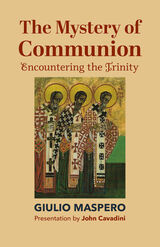 The Mystery of Communion
Giulio Maspero
St. Augustine's Press, 2020 Dr. Giulio Maspero is a priest, theologian and physicist who in this work embarks on a study of the Trinity––the Christian triune God––and in a single narrative pieces together the classical metaphysics, revealed truths and Patristic apologetic theology that directed the development of Trinitarian dogma. Maspero views the importance of this project from several perspectives. It connects us both exegetically and in fellowship to Christianity’s Jewish roots and the living God of shared Scripture. It introduces the reader to a deeper understanding of the historical development of the Trinity, which is especially engaging given the formidable minds and arguments involved in this history, particularly on the part of the Cappadocian Fathers: Gregory of Nyssa, Gregory of Nanzianzus and Basil the Great. Maspero also notes that knowing the Trinity better will offer greater insight into papal descriptions of the human family as necessarily rooted in a Trinitarian foundation, a “communion of persons in the image of the union of the Father, the Son and the Holy Spirit.”
An approach to Trinitarian theology often favors overly technical language, or undue triteness. Maspero succeeds in leading both scholar and student to see how the unfolding of the mystery of the Trinity and its dogmatic development is a discovery of the “mystery from which all true love flows” in history. This discovery is only possible because of God’s self-revelation and immanence––that is, his heart and his “within.” The revelation of his being wholly and eternally Father and Son and the Love between them has made a more complete unity know to humanity through the perfect unity of divine communion. The foundation of all being and reality is this communion of love, personal unity that is given in relation and not in spite of relation. After a career of studying theology and theoretical physics, Maspero is especially keen on emphasizing the radical nature of this concept. It is an extension of Greek philosophy but ripped open and assigned immeasurable new value in communion and relation.
The brevity of this work limits the amount of citations and textual references given, and Maspero instead urges the reader to study the book alongside Scripture. His manner of writing respects the impossibility of speaking of God in his immanence, but he nonetheless carves out a place for the Trinity in the human intellect, a place where the Jewish and Christian God might be encountered. As Maspero observes, truth is found in the personal dimension, but “just as in the use of a map for a journey, the cognitive grasp of the Trinity is to prevent us from getting lost, to keep us from reducing and simplifying the Trinity into something we understand merely on a natural level.” A highlight of this work is Maspero’s reliance on Mary, Theotokos, in his presentation of Trinitarian theology, the person who first opened herself to this manner of thinking.
 The Mystery of Courage
William Ian Miller
Harvard University Press, 2002 Few of us spend much time thinking about courage, but we know it when we see it--or do we? Is it best displayed by marching into danger, making the charge, or by resisting, enduring without complaint? Is it physical or moral, or both? Is it fearless, or does it involve subduing fear? Abner Small, a Civil War soldier, was puzzled by what he called the "mystery of bravery"; to him, courage and cowardice seemed strangely divorced from character and will. It is this mystery, just as puzzling in our day, that William Ian Miller unravels in this engrossing meditation.
Miller culls sources as varied as soldiers' memoirs, heroic and romantic literature, and philosophical discussions to get to the heart of courage--and to expose its role in generating the central anxieties of masculinity and manhood. He probes the link between courage and fear, and explores the connection between bravery and seemingly related states: rashness, stubbornness, madness, cruelty, fury; pride and fear of disgrace; and the authority and experience that minimize fear. By turns witty and moving, inquisitive and critical, his inquiry takes us from ancient Greece to medieval Europe, to the American Civil War, to the Great War and Vietnam, with sidetrips to the schoolyard, the bedroom, and the restaurant. Whether consulting Aristotle or private soldiers, Miller elicits consistently compelling insights into a condition as endlessly interesting as it is elusive.
The Mystery of Culture Contacts, Historical Reconstruction, and Text Analysis: An Emic Approach
Kenneth L. Pike, Carol V. McKinney, Gary F. Simons, and Donald A. Burquest. Kurt R. Jankowsky, Editor
Georgetown University Press, 1996 Renowned linguist Kenneth L. Pike and his coauthors offer three previously unpublished essays that apply theoretical linguistic research to the areas of historical linguistics, cross-cultural communications, and text analysis. "Toward the Historical Reconstruction of Matrix Patterns in Morphology" establishes a comprehensive theory of morphological structure based on a number of languages. "Understanding Misunderstanding as Cross-Cultural Emic Clash" examines the crucial role that language plays in the numerous problems encountered in contacts between people from divergent cultural backgrounds. "The Importance of Purposive Behavior in Text Analysis" explores the centrality of establishing the relationship of reality to what is actually expressed in a text.
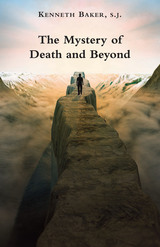 The Mystery of Death and Beyond
Kenneth Baker, S.J.
St. Augustine's Press, 2016 The purpose of this little book is to answer certain questions that many people have about the nature of death. Most people feel that there is something wrong about death. We all want to live a happy life and we do not want to die. Life is experienced as something very good and we want to preserve it. But the reality is that man is by nature mortal, which means that he is destined to die sooner or later. The fact is that we begin to die the moment we are conceived in our mother’s womb.
Man is unlike all other animals, because he has a soul endowed with intelligence and free will. Because man’s soul is spiritual, it is immortal. Death is the separation of that soul from the body; the body decays and returns to the dust from which it was taken, but the soul continues to live and is in the hands of God. But what happens to the soul after death? There are two possibilities—heaven or hell. We know from divine revelation and from the infallible teaching of the Church that the soul after death goes immediately to heaven (perhaps first for a time to purgatory to be totally cleansed and sanctified), or immediately to hell, a state or place of eternal misery.
The next life is a life without time—it is a perpetual now, with no before and after. It has a beginning but not end. It is also unchangeable, that is, souls in heaven are there forever and they cannot lose it; souls in hell are there forever and they can never be freed from it.
This is a very serious and certain reality for each one of us. The most important thing we will ever do is to die, and to die in the state of God’s grace so that we are his friends and will be admitted to his presence, which is what is meant by heaven. Therefore we must prepare ourselves to die in the grace of God, which is our ticket to heaven. We do that by doing God’s will for us, which means to keep his commandments, especially to love God above all things and practice love of neighbor.
This short book will help people think about their death and how important it is for their permanent happiness. It will help them to arrange their life in such a way that they will live it as God wants them to live it and so ultimately obtain eternal life with God because: “no eye has seen, nor ear heard, nor the heart of man conceived, what God has prepared for those who love him” (1 Cor. 2:9).
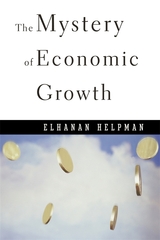 The Mystery of Economic Growth
Elhanan Helpman
Harvard University Press, 2004 Far more than an intellectual puzzle for pundits, economists, and policymakers, economic growth--its makings and workings--is a subject that affects the well-being of billions of people around the globe. In The Mystery of Economic Growth, Elhanan Helpman discusses the vast research that has revolutionized understanding of this subject in recent years, and summarizes and explains its critical messages in clear, concise, and accessible terms.
The tale of growth economics, as Helpman tells it, is organized around a number of themes: the importance of the accumulation of physical and human capital; the effect of technological factors on the rate of this accumulation; the process of knowledge creation and its influence on productivity; the interdependence of the growth rates of different countries; and, finally, the role of economic and political institutions in encouraging accumulation, innovation, and change.
One of the leading researchers of economic growth, Helpman succinctly reviews, critiques, and integrates current research--on capital accumulation, education, productivity, trade, inequality, geography, and institutions--and clarifies its relevance for global economic inequities. In particular, he points to institutions--including property rights protection, legal systems, customs, and political systems--as the key to the mystery of economic growth. Solving this mystery could lead to policies capable of setting the poorest countries on the path toward sustained growth of per capita income and all that that implies--and Helpman's work is a welcome and necessary step in this direction.
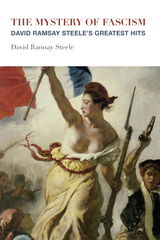 The Mystery of Fascism: David Ramsay Steele's Greatest Hits
David Ramsay Steele
St. Augustine's Press, 2019 David Ramsay Steele, PhD, is a libertarian writer with a powerful underground reputation for producing caustic, entertaining, knowledgeable, and surprising arguments, often violently at odds with conventional thinking. For the first time, some of Dr. Steele’s “greatest hits” have been brought together in an anthology of provocative essays on a wide range of topics. The essays are divided into two parts, “More Popular than Scholarly” and “More Scholarly than Popular.” “Scott Adams and the Pinocchio Fallacy,” Steele’s 2018 refutation of the popular claim that we might be living in a “simulated reality,” has been hailed as a totally irresistible debunking of that fallacy as promoted by The Matrix movie and by Scott Adams (among many pundits).
“What Follows from the Non-Existence of Mental Illness?” (2017) preserves the crucial insights of “psychiatric abolitionist” Thomas Szasz, while exposing Szasz’s major misconceptions.
In “The Bigotry of the New Atheism” (2014), Steele, himself an atheist, brings out the intolerant quality of the “New Atheists.” Steele powerfully argues that while “enthusiastic belief systems” may give rise to enormous atrocities, the historical evidence goes against the theory (promoted by Harris, Dawkins, and Hitchens) that these appalling outcomes are more likely when those belief systems include belief in God. “Taking the JFK Assassination Conspiracy Seriously” (2003) has been reprinted many times, continues to be viewed online many thousands of times, and like many of Steele’s writings, keeps making converts. It is acknowledged to be the most persuasive brief popular statement of the Lone Nut theory. “The Mystery of Fascism” (2001), which gives this collection its title, is still continually viewed and cited, for its demonstration that fascism arose directly out of far-left revolutionary Marxism and revolutionary syndicalism. Conventional ideologues of both right and left have been provoked by this highly readable piece to start thinking outside the box. The earliest piece in this collection, “Alice in Wonderland” (1987) is a devastating critique of the Ayn Rand belief system and the Ayn Rand cult. “Gambling Is Productive and Rational” (1997), mercilessly strips away the loose thinking which favors intolerance and prohibition of gambling. Steele argues that gambling adds to human well-being and ought to be completely legalized everywhere. Other topics include the recovered memory witch hunt of the 1990s, the benefits of replacing democratic voting with selection of political positions by lottery, the unexpected results of research into the causes of human happiness, the reasons why Dexter (a TV show sympathetic to a psychotic serial killer) was politically “safe,” why economic growth can go on for ever, why the most popular moral argument against eating meat just doesn’t work, how Hillary Clinton could have won the presidency in 2016, why Friedrich Hayek is wrong about social evolution, the inevitable disappearance of market socialism, Robert Nozick’s muddled thinking about economics, and the proper way to view anti-consensus theories such as the Atkins Diet.
 Mystery of Mysteries: Is Evolution a Social Construction?
Michael Ruse
Harvard University Press, 1999 With the recent Sokal hoax--the publication of a prominent physicist's pseudo-article in a leading journal of cultural studies--the status of science moved sharply from debate to dispute. Is science objective, a disinterested reflection of reality, as Karl Popper and his followers believed? Or is it subjective, a social construction, as Thomas Kuhn and his students maintained? Into the fray comes Mystery of Mysteries, an enlightening inquiry into the nature of science, using evolutionary theory as a case study.
Michael Ruse begins with such colorful luminaries as Erasmus Darwin (grandfather of Charles) and Julian Huxley (brother of novelist Aldous and grandson of T. H. Huxley, "Darwin's bulldog" ) and ends with the work of the English game theorist Geoffrey Parker--a microevolutionist who made his mark studying the mating strategies of dung flies--and the American paleontologist Jack Sepkoski, whose computer-generated models reconstruct mass extinctions and other macro events in life's history. Along the way Ruse considers two great popularizers of evolution, Richard Dawkins and Stephen Jay Gould, as well as two leaders in the field of evolutionary studies, Richard Lewontin and Edward O. Wilson, paying close attention to these figures' cultural commitments: Gould's transplanted Germanic idealism, Dawkins's male-dominated Oxbridge circle, Lewontin's Jewish background, and Wilson's southern childhood. Ruse explicates the role of metaphor and metavalues in evolutionary thought and draws significant conclusions about the cultural impregnation of science. Identifying strengths and weaknesses on both sides of the "science wars," he demonstrates that a resolution of the objective and subjective debate is nonetheless possible.
Mystery of the Church, People of God
Rose Beal
Catholic University of America Press, 2014 Congar coined the term "total ecclesiology" in his ground-breaking outline for a theology of the laity, A Way towards a Theology of the Laity. In Mystery of the Church, People of God, Rose M. Beal argues that "total ecclesiology" is the necessary and appropriate lens for a comprehensive interpretation of Congar's ecclesiological project prior to the Second Vatican Council (1962-1965). Beal works from Congar's published works from 1931 to 1954, as well as from unpublished texts from the same time period, to integrate and propose a comprehensive interpretation of his ecclesiological purposes and methods.
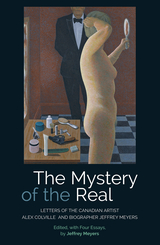 The Mystery of the Real Letters of the Canadian Artist Alex Colville and Biographer Jeffrey Meyers: Letters of the Canadian Artist Alex Colville and Biographer Jeffrey Meyers
Jeffrey Meyers
Sussex Academic Press, 2022 The work of Alex Colville, O.C. (1920-2013), one of the great modern realist painters, combines the Flemish detail of Andrew Wyeth, the eerie foreboding of George Tooker and the anguished confrontations of Lucian Freud. Behind the North Americans stands their common master, Edward Hopper. Colville's works are in many museums in Canada and Germany. He has affinities with Max Beckmann and appeals to the German "secondary virtues": cleanliness, punctuality, love of order. In a long life he resolutely opposed the fashionable currents of abstract and expressionistic art. In contrast to Jackson Pollock's wild action painting, Colville created paintings of contemplation and reflection. As Jeffrey Meyers writes: I spent several days with Colville on each of three visits from California to Wolfville. I received seventy letters from him between August 1998 and April 2010, and kept thirty-six of my letters to him. He sent me photographs and slides of his work and, in his eighties, discussed the progress and meaning of the paintings he completed during the last decade of his life. His handwritten letters, precisely explaining his thoughts and feelings, provide a rare and enlightening opportunity to compare my insights and interpretations with his own intentions and ideas. He also discussed his family, health, sexuality, politics, reading, travels, literary interests, our mutual friend Iris Murdoch, response to my writing, his work, exhibitions, sales of his pictures and of course the meaning of his art. His letters reveal the challenges he faced during aging and illness, and his determination to keep painting as health difficulties mounted. He stopped writing to me when he became seriously ill two years before his death. In this context the late paintings, presented in colour in this book, take on a new poignancy.
Mystery of the Wax Museum
Edited, with an introduction by Richard Koszarski; Tino T. Balio, Series Editor
University of Wisconsin Press, 1979 The Depression-era vogue for horror and the supernatural produced some of Hollywoood's most memorable chillers, among them Dr. Jekyll and Mr. Hyde (Paramount), Frankenstein, (Universal), and King Kong (RKO). At Warner Brothers, the main entry was Mystery of the Wax Museum, directed by Michael Curtiz, a grand thriller of 1933 in which Fay Wray (Who would appear opposite Kong later that same year) was threatened with waxy immortality by the maniacal Lionel Atwill.
The Mystery of Union with God
Bernhard Blankenhorn
Catholic University of America Press, 2015 The Mystery of Union with God offers the most extensive, systematic analysis to date of how Albert and Thomas interpreted and transformed the Dionysian Moses "who knows God by unknowing." It shows Albert's and Thomas's philosophical and theological motives to place limits on Dionysian apophatism and to reintegrate mediated knowledge into mystical knowing. The author surfaces many similarities in the two Dominicans' mystical doctrines and exegesis of Dionysius. This work prepares the way for a new consideration of Albert the Great as the father of Rhineland Mysticism. The original presentation of Aquinas's theology of the Spirit's seven gifts breaks new ground in theological scholarship. Finally, the entire book lays out a model for the study of mystical theology from a historical, philosophical and doctrinal perspective.
Mystery Train
David Wojahn
University of Pittsburgh Press, 1990 David Wojahn deftly mixes personal history and recollections with a wide range of character studies and monologues, but the center of this book is a sequence of thirty-five poems, mainly sonnets, in which rock and roll music is a strange, kaleidoscopic mirror of recent American history. Combining rhapsodic homage, grim humor, human folly, and tragedy, these poems are like nothing else in contemporary poetry.
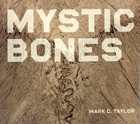 Mystic Bones
Mark C. Taylor
University of Chicago Press, 2007 The desert has long been a theme in Mark C. Taylor’s work, from his inquiries into the religious significance of Las Vegas to his writings on earthworks artist Michael Heizer. At once haunted by absence and loss, the desert, for Taylor, is a place of exile and wandering, of temptation and tribulation. Bones, in turn, speak to his abiding interest in remnants, ruins, ritual, and immanence. Taylor combines his fascination in the detritus of the desert and its philosophical significance with his work in photography in Mystic Bones.
A collection of remarkably elegant close-up images of weathered bones—remains of cattle, elk, and deer skeletons gathered from the desert of the American West—Mystic Bones pairs each photograph with a philosophical aphorism. These images are buttressed by a major essay, “Rubbings of Reality,” in which Taylor explores the use of bones in the religious rituals of native inhabitants of the Western desert and, more broadly, the appearance of bones in myth and religious reality.
Meditating on the way in which bones paradoxically embody both the personal and the impersonal—at one time they are our very substance, but eventually they become our last remnants, anonymous, memorializing oblivion—Taylor here suggests ways in which natural processes can be thought of as art, and bones as art objects. Bones, Taylor writes, “draw us elsewhere.” To follow their traces beyond the edge of the human is to wander into ageless times and open spaces where everything familiar becomes strange.
By revealing beauty hidden in the most unexpected places, these haunting images refigure death in a way that allows life to be seen anew. A bold new work from a respected philosopher of religion, Mystic Bones is Taylor’s his most personal statement of after-God theology.
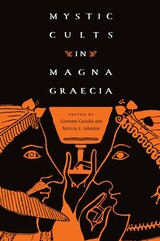 Mystic Cults in Magna Graecia
Edited by Giovanni Casadio and Patricia A. Johnston
University of Texas Press, 2009 In Vergil's Aeneid, the poet implies that those who have been initiated into mystery cults enjoy a blessed situation both in life and after death. This collection of essays brings new insight to the study of mystic cults in the ancient world, particularly those that flourished in Magna Graecia (essentially the area of present-day Southern Italy and Sicily). Implementing a variety of methodologies, the contributors to Mystic Cults in Magna Graecia examine an array of features associated with such "mystery religions" that were concerned with individual salvation through initiation and hidden knowledge rather than civic cults directed toward Olympian deities usually associated with Greek religion. Contributors present contemporary theories of ancient religion, field reports from recent archaeological work, and other frameworks for exploring mystic cults in general and individual deities specifically, with observations about cultural interactions throughout. Topics include Dionysos and Orpheus, the Goddess Cults, Isis in Italy, and Roman Mithras, explored by an international array of scholars including Giulia Sfameni Gasparro ("Aspects of the Cult of Demeter in Magna Graecia") and Alberto Bernabé ("Imago Inferorum Orphica"). The resulting volume illuminates this often misunderstood range of religious phenomena.
The Mystic Fable, Volume One: The Sixteenth and Seventeenth Centuries
Michel de Certeau
University of Chicago Press, 1992 The culmination of de Certeau's lifelong engagement with the human sciences, this volume is both an analysis of Christian mysticism during the sixteenth and seventeenth centuries and an application of this influential scholar's transdisciplinary historiography.
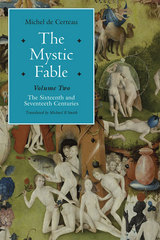 The Mystic Fable, Volume Two: The Sixteenth And Seventeenth Centuries
Michel de Certeau
University of Chicago Press, 2015 More than two decades have passed since Chicago published the first volume of this groundbreaking work in the Religion and Postmodernism series. It quickly became influential across a wide range of disciplines and helped to make the tools of poststructuralist thought available to religious studies and theology, especially in the areas of late medieval and early modern mysticism.
Though the second volume remained in fragments at the time of his death, Michel de Certeau had the foresight to leave his literary executor detailed instructions for its completion, which formed the basis for the present work. Together, both volumes solidify Certeau’s place as a touchstone of twentieth-century literature and philosophy, and continue his exploration of the paradoxes of historiography; the construction of social reality through practice, testimony, and belief; the theorization of speech in angelology and glossolalia; and the interplay of prose and poetry in discourses of the ineffable. This book will be of vital interest to scholars in religious studies, theology, philosophy, history, and literature.
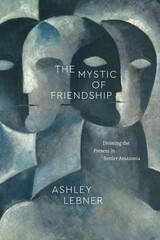 The Mystic of Friendship: Divining the Present in Settler Amazonia
Ashley Lebner
University of Chicago Press, 2025 A vivid portrait of how divine and human intimacies sustain colonization in the Amazon.
On Brazil’s Amazonian frontier, settlers pursue land and opportunity, but they also gather for prayer and pilgrimage, yearning for a deep relationship with God and one another. In this book, anthropologist Ashley Lebner examines how everyday religious practices and feelings, what she calls a mystic of friendship, shape and sustain colonization in the Amazon.
Lebner invites us to a stretch of highway in Pará, Brazil, where violent colonization coexists with prophetic dreams, Afro-Brazilian prayers, and emerging evangelicalism. She shows how, amid political tensions and physical hardship, settlers believe that the violence they experience and enact derives from the bestial nature of earthly life that must be overcome. In exposing a longing for divinely-infused friendship that animates colonization, Lebner offers a powerful new perspective on the forces driving colonialism as much as religious and political expression.
 The Mystical as Political: Democracy and Non-Radical Orthodoxy
Aristotle Papanikolaou
University of Notre Dame Press, 2012 Theosis, or the principle of divine-human communion, sparks the theological imagination of Orthodox Christians and has been historically important to questions of political theology. In The Mystical as Political: Democracy and Non-Radical Orthodoxy, Aristotle Papanikolaou argues that a political theology grounded in the principle of divine-human communion must be one that unequivocally endorses a political community that is democratic in a way that structures itself around the modern liberal principles of freedom of religion, the protection of human rights, and church-state separation.
Papanikolaou hopes to forge a non-radical Orthodox political theology that extends beyond a reflexive opposition to the West and a nostalgic return to a Byzantine-like unified political-religious culture. His exploration is prompted by two trends: the fall of communism in traditionally Orthodox countries has revealed an unpreparedness on the part of Orthodox Christianity to address the question of political theology in a way that is consistent with its core axiom of theosis; and recent Christian political theology, some of it evoking the notion of “deification,” has been critical of liberal democracy, implying a mutual incompatibility between a Christian world view and that of modern liberal democracy.
The first comprehensive treatment from an Orthodox theological perspective of the issue of the compatibility between Orthodoxy and liberal democracy, Papanikolaou’s is an affirmation that Orthodox support for liberal forms of democracy is justified within the framework of Orthodox understandings of God and the human person. His overtly theological approach shows that the basic principles of liberal democracy are not tied exclusively to the language and categories of Enlightenment philosophy and, so, are not inherently secular.
"Aristotle Papanikolaou’s The Mystical as Political is a stellar contribution to the analysis of Orthodox thought and also to current debates about theology and politics. For too long scholars in the Western academy have failed to engage the resources and insights of Orthodox theology. This book aptly shows those resources and insights in a way that marks a genuine advance in thought. The Mystical as Political rewards its reader with fresh insight into the complex relation between faith and politics. Papanikolaou is a rising star on the theological scene. This book deserves wide readership as a crucial theological contribution to debates about our political and personal lives." —William Schweiker, University of Chicago
"In The Mystical as Political, Papanikolaou not only guides readers through the rich legacy of Eastern Orthodox political thought, from the formative struggles of the pre-Constantinian era to the post-Enlightenment, post-Ottoman, and post-Communist challenges encountered today, but also presents a compelling argument that Orthodoxy's goal of 'divine-human communion' can—and should—include core elements of modern liberal democracy and the human rights tradition. This study signals a new phase in political theology for Orthodox and non-Orthodox alike, and it secures Papanikolaou's place as one of today's leading Orthodox thinkers and theological bridge-builders." —Perry T. Hamalis, North Central College
“Aristotle Papanikolaou’s The Mystical as Political will be the standard Eastern Orthodox text in classes on theology and politics. It evinces a thorough engagement with the current debates in theology and politics, a rich awareness of the theological issues at stake, and a crisply distinctive position of its own. It will be enormously educational for classroom use, as well as being an immense contribution to the scholarly conversations on these matters.” —Charles Mathewes, University of Virginia
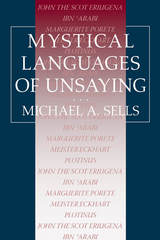 Mystical Languages of Unsaying
Michael A. Sells
University of Chicago Press, 1994 The subject of Mystical Languages of Unsaying is an important but neglected mode of mystical discourse, apophasis. which literally means "speaking away." Sometimes translated as "negative theology," apophatic discourse embraces the impossibility of naming something that is ineffable by continually turning back upon its own propositions and names. In this close study of apophasis in Greek, Christian, and Islamic texts, Michael Sells offers a sustained, critical account of how apophatic language works, the conventions, logic, and paradoxes it employs, and the dilemmas encountered in any attempt to analyze it.
This book includes readings of the most rigorously apophatic texts of Plotinus, John the Scot Eriugena, Ibn Arabi, Marguerite Porete, and Meister Eckhart, with comparative reference to important apophatic writers in the Jewish tradition, such as Abraham Abulafia and Moses de Leon. Sells reveals essential common features in the writings of these authors, despite their
wide-ranging differences in era, tradition, and theology.
By showing how apophasis works as a mode of discourse rather than as a negative theology, this work opens a rich heritage to reevaluation. Sells demonstrates that the more radical claims of apophatic writers—claims that critics have often dismissed as hyperbolic or condemned as pantheistic or nihilistic—are vital to an adequate account of the mystical languages of unsaying. This work also has important implications for the relationship of classical apophasis to contemporary languages of the unsayable. Sells challenges many widely circulated characterizations of apophasis among deconstructionists as well as a number of common notions about medieval thought and gender relations in medieval mysticism.
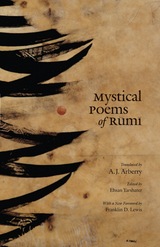 Mystical Poems of Rumi
Jalal al-Din Rumi
University of Chicago Press, 2009 My verse resembles the bread of Egypt—night passes over it, and you cannot eat it any more. Devour it the moment it is fresh, before the dust settles upon it. Its place is the warm climate of the heart; in this world it dies of cold. Like a fish it quivered for an instant on dry land, another moment and you see it is cold. Even if you eat it imagining it is fresh, it is necessary to conjure up many images. What you drink is really your own imagination; it is no old tale, my good man. Jalal al-Din Rumi (1207–73), legendary Persian Muslim poet, theologian, and mystic, wrote poems acclaimed through the centuries for their powerful spiritual images and provocative content, which often described Rumi’s love for God in romantic or erotic terms. His vast body of work includes more than three thousand lyrics and odes. This volume includes four hundred poems selected by renowned Rumi scholar A. J. Arberry, who provides here one of the most comprehensive and adept English translations of this enigmatic genius. Mystical Poems is the definitive resource for anyone seeking an introduction to or an enriched understanding of one of the world’s greatest poets.
“Rumi is one of the world’s greatest lyrical poets in any language—as well as probably the most accessible and approachable representative of Islamic civilization for Western students.”—James W. Morris, Oberlin College
The Mystical Poems of Rumi 1
Jalal al-Din Rumi
University of Chicago Press, 1974 Rumi, who wrote and preached in Persia during the thirteenth century, was inspired by a wandering mystic, or dervish, named Shams al-Din. Rumi's vast body of poetry includes a lengthy poem of religious mysticism, the Mathnavi, and more than three thousand lyrics and odes. A.J. Arberry, who selected four hundred of the lyrics for translation, calls Rumi "one of the world's greatest poets. In profundity of thought, inventiveness of image, and triumphant mastery of language, he stands out as the supreme genius of Islamic mysticism."
"An excellent introduction to Rumi, the greatest mystical poet of Islam. . . . Rumi's scope, like that of all great poets, is universal—reaching from sensuous luxuriance to the driest irony."—Sherman Goldman, East-West Journal
The Mystical Poems of Rumi 2: Second Selection, Poems 201-400
Jalal al-Din Rumi
University of Chicago Press, 1991
Rumi, who wrote and preached in Persia during the thirteenth century, is one of history’s most celebrated mystics. His vast body of poetry includes a lengthy epic of religious mysticism, the Mathnavi, and more than three thousand lyrics and odes. A. J. Arberry, who selected four hundred of the lyrics for translation, calls Rumi "one of the world's greatest poets. In profundity of thought, inventiveness of image, and triumphant mastery of language, he stands out as the supreme genius of Islamic mysticism." Arberry’s authoritative translation is one of the few done directly from the original Persian.
A. J. Arberry (1905-69) was professor of Arabic at Cambridge University.
Mysticism and Democracy in the English Commonwealth
Rufus Matthew Jones
Harvard University Press During the seventeenth century, England made bold experiments in popular self-government, first trying them in the democratic religious sects and then carrying them out into wider areas of the state. Such groups as the Seekers, the Brownists, the Quakers, and other mystics held to the democratic principle of church organization, which became in the course of time the basis of English and American government. Professor Jones in this volume brings out the close connection between these religious movements and the political issues then being settled.
A Mysticism of Kindness: The Lucie Christine Story
Astrid M. O’Brien
University of Scranton Press, 2010 On the surface, Lucie Christine—the pseudonym given to a nineteenth-century Frenchwoman named Mathilde Boutle—was a very ordinary upper-middle-class woman, fulfilling her daily responsibilities to her husband and children. But underneath, Lucie Christine was an extraordinary human being. In A Mysticism of Kindness, Astrid M. O’Brien tells the life story of this remarkable woman, revealing how her experiences as a mystic allowed her to persevere as a wife and mother in the midst of constant verbal and physical abuse from her alcoholic husband. Her story will inspire all those who struggle to find a way to live a strong spiritual life in an often difficult and troubling world.
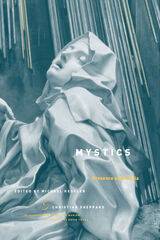 Mystics: Presence and Aporia
Edited by Michael Kessler and Christian Sheppard
University of Chicago Press, 2003 When we speak of mystics, we normally think of people who have confessed extraordinary experiences of divine presence. But mysticism can also refer to the ways that people have described and explained such phenomena—ways that challenge our normal modes of thinking and believing. And the study of mystics can show problems inherent to experience and language—how to speak and think about what affects people but lies beyond language or thought.
Mystics presents a collection of previously unpublished essays by prominent scholars that consider both the idea of mystics and mysticism. The contributors offer detailed discussions of a variety of mystics from history, including Dionysius the Areopagite, Thomas Aquinas, Joan of Arc, Nicholas of Cusa, Saint Teresa of Avila, Martin Luther, and George Herbert. Essays on mysticism in George Bataille, Maurice Blanchot, and contemporary technology bring the volume into the twenty-first century.
For anyone interested in the state of current thinking about mysticism, this collection will be an essential touchstone.
Contributors:
Thomas A. Carlson, Alexander Golitzin, Kevin Hart, Amy Hollywood, Michael Kessler, Jean-Luc Marion, Bernard McGinn, Françoise Meltzer, Susan Schreiner, Regina M. Schwartz, Christian Sheppard, David Tracy
 The Mystification of George Chapman
Gerald Snare
Duke University Press, 1989 George Chapman (1559–1634) continues to cut a significant figure as a dramatist and translator of Homer, but his reputation as a poet has fared poorly. The common critical view has made him notorious as a writer of “difficult” poetry, to the point of being considered guilty of deliberate and wanton obscurity. Gerald Snare argues that the fact of the matter is quite the reverse: his supposed difficulty as well as the moral and philosophical imperatives that are assumed to dominate his work are in fact the construction of critics.
The Mystification of George Chapman is an argument against the accepted view of Chapman’s art. Snare examines Hero and Leander to determine the nature of its poetics and its relation to Mousaios and Marlowe; he reports on the imitative strategies of Ovid’s Banquet of Sense and declares that it deserves a reputation quite different from that of the most difficult poem in the English language; and he refers to Chapman’s own criticism found in the prefaces and notes often attached to his poems. The author finds Chapman’s poems were responses to the critical pressures inherent in adapting Greek, Latin, and contemporaneous English authors to his art, and he disputes the modern critical tendency to assume that doctrine, and not poetic practice, was the primary source of poetic energy in the Renaissance.
 The Mystifications of a Nation: "The Potato Bug" and Other Essays on Czech Culture
Vladimír Macura
University of Wisconsin Press, 2010 A keen observer of culture, Czech writer Vladimír Macura (1945–99) devoted a lifetime to illuminating the myths that defined his nation. The Mystifications of a Nation, the first book-length translation of Macura’s work in English, offers essays deftly analyzing a variety of cultural phenomena that originate, Macura argues, in the “big bang” of the nineteenth-century Czech National Revival, with its celebration of a uniquely Czech identity.
In reflections on two centuries of Czech history, he ponders the symbolism in daily life. Bridges, for example—once a force of civilization connecting diverse peoples—became a sign of destruction in World War I. Turning to the Soviet and post-Soviet eras, Macura probes a range of richly symbolic practices, from the naming of the Prague metro system, to the mass gymnastic displays of the Communist period, to post–Velvet Revolution preoccupations with the national anthem. In “The Potato Bug,” he muses on one of the stranger moments in the Cold War—the claim that the United States was deliberately dropping insects from airplanes to wreak havoc on the crops of Czechoslovakia.
While attending to the distinctively Czech elements of such phenomena, Macura reveals the larger patterns of Soviet-brand socialism. “We were its cocreators,” he declares, “and its analysis touches us as a scalpel turned on its own body.” Writing with erudition, irony, and wit, Macura turns the scalpel on the authoritarian state around him, demythologizing its mythology.
Myth: A Handbook
William G. Doty
University of Alabama Press, 2007 A brief, accessible introduction to the role of myth historically and in popular culture.
 Myth and Archive: A Theory of Latin American Narrative
Roberto González-Echevarría
Duke University Press, 1998 Myth and Archive presents a new theory of the origin and evolution of Latin American literature and the emergence of the modern novel. In this influential, award-winning exploration of Latin American writing from colonial times to the present, Roberto González Echevarría dispenses with traditional literary history to reveal the indebted relationship of the novel to legal, scientific, and anthropological discourses. Providing ways to link literary and nonliterary narratives, González Echevarría examines a variety of archival writings—from the chronicles of the discovery and conquest of the New World to scientific travel narratives and records of criminal confessions—and explores the relationship of these writings to novels by authors such as García Márquez, Borges, Barnet, Sarmiento, Carpentier, and Garcilaso de la Vega. Moving beyond demonstrating that early forms of creative narrative had their geneses in the sixteenth-century authoritative discourse of the Spanish Empire, González Echevarría shows how this same originating process has been repeated in other key moments in the history of the Latin American narrative. He shows how the discourse of scientific discovery was the model for much nineteenth-century literature, as well as how anthropological writings on the nature of language and myth have come to shape the ideology and form of literature in the twentieth century. This most recent form of Latin American narrative creates its own mythic form through an atavistic return to its legal origins—the archive. This acclaimed book—originally published in 1990—will be of continuing interest to historians, anthropologists, literary theorists, and students of Latin American culture.
Myth and History in Celtic and Scandinavian Traditions
Emily Lyle
Amsterdam University Press, 2021 Myth and History in Celtic and Scandinavian Traditions explores the traditions of two fascinating and contiguous cultures in north-western Europe. History regularly brought these two peoples into contact, most prominently with the viking invasion of Ireland. In the famous Second Battle of Mag Tuired, gods such as Lug, Balor, and the Dagda participated in the conflict that distinguished this invasion. Pseudohistory, which consists of both secular and ecclesiastical fictions, arose in this nexus of peoples and myth and spilled over into other contexts such as chronological annals. Scandinavian gods such as Odin, Balder, Thor, and Loki feature in the Edda of Snorri Sturluson and the history of the Danes by Saxo Grammaticus. This volume explores such written works alongside archaeological evidence from earlier periods through fresh approaches that challenge entrenched views.
Myth and History in the Historiography of Early Burma: Paradigms, Primary Sources, and Prejudices
Michael A. Aung-Thwin
Ohio University Press, 1998 After careful re-reading and analysis of original Old Burmese and other primary sources, the author discovered that four out of the five events considered to be the most important in the history of early Burma, and believed to have been historically accurate, are actually late-nineteenth and twentieth-century inventions of colonial historians caught in their own intellectual and political world.
Only one of these is a genuine indigenous Burmese myth, but it too has been embellished by modern historians.
The author discusses each of these five myths and concludes with an assessment of the current situation in Burma in the context of the new myths springing up today, thereby bringing the thirteenth century into the twentieth.
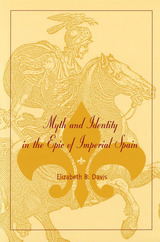 Myth and Identity in the Epic of Imperial Spain
Elizabeth B. Davis
University of Missouri Press, 2026 The first in-depth analysis of some of the most important epic poems of the Spanish Golden Age, Myth and Identity in the Epic of Imperial Spain breathes new life into five of these long- neglected texts. Elizabeth Davis demonstrates that the epic must not be overlooked, for doing so creates a significant gap in one's ability to appraise not only the cultural practice of the imperial age, but also the purest expression of its ideology. Davis's study focuses on heroic poetry written from 1569 to 1611, including Alonso de Ercilla's La Araucana, undeniably the most significant epic poem of its time. Also included are Diego de Hojeda's La Christiada, Juan Rufo's La Austriada,. Lope de Vega's Jerusalén Conquistada, and Cristóbal de Virués's Historia del Monserrate. Examining these epics as the major site for the construction of cultural identities and Renaissance nationalist myths, Davis analyzes the means by which the epic constructs a Spanish sense of self. Because this sense of identity is not easily susceptible to direct representation, it is often derived in opposition to an "other," which serves to reaffirm Spanish cultural superiority. The Spanish Christian caballeros are almost always pitted against Amerindians, Muslims, Jews, or other adversaries portrayed as backward or heathen for their cultural and ethnic differences. The pro-Castilian elite of sixteenth-century Spain faced the daunting task of constructing unity at home in the process of expansion and conquest abroad, yet ethnic and regional differences in the Iberian Peninsula made the creation of an imperial identity particularly difficult. The epic, as Davis shows, strains to convey the overriding image of a Spain that appears more unified than the Spanish empire ever truly was. An important reexamination of the Golden Age canon, Myth and Identity in the Epic of Imperial Spain brings a new twist to the study of canon formation. While Davis does not ignore more traditional approaches to the literary text, she does apply recent theories, such as deconstruction and feminist criticism, to these poems, resulting in an innovative examination of the material. Confronting such issues as canonicity, gender, the relationship between literature and Golden Age culture, and that between art and power, this publication offers scholars a new perspective for assessing Golden Age and Transatlantic studies.
Myth and Scripture: Contemporary Perspectives on Religion, Language, and Imagination
Dexter E. Callender, Jr.
SBL Press, 2014
An interdisciplinary collection for scholars and students interested in the connections between myth and scripture
In this collection scholars suggest that using “myth” creates a framework within which to set biblical writings in both cultural and literary comparative contexts. Reading biblical accounts alongside the religious narratives of other ancient civilizations reveals what is commonplace and shared among them. The fruit of such work widens and enriches our understanding of the nature and character of biblical texts, and the results provide fresh evidence for how biblical writings became “scripture.”
Features:
- Essays that explore how myth sheds light on the emergence of scripture
- Examples drawn from the Ancient Near East, Hebrew Bible, New Testament, and Greco-Roman world
- Articles by experts from a range of disciplines
Myth and Southern History, Volume 1: The Old South
Edited by Patrick Gerster and Nicholas Cords
University of Illinois Press, 1989 Many historical myths are actually false yet psychologically true. The contributors to this volume see myth and reality as complementary elements in the historical record. Myth and Southern History is as much a commentary on southern historiography as it is on the viability of myth in the historical process. Volume 2: The New South offers new perspectives on the North's role in southern mythology, the so-called Savage South, twentieth-century black and white southern women, and the "changes" that distinguish the late twentieth-century South from that of the Civil War era.
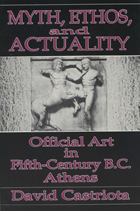 Myth, Ethos, and Actuality: Official Art in Fifth Century B.C. Athens
David Castriota
University of Wisconsin Press, 1992 Using material remains, as well as the evidence of contemporary Greek history, rhetoric, and poetry, David Castriota interprets the Athenian monuments as vehicles of an official ideology intended to celebrate and justify the present in terms of the past. Castriota focuses on the strategy of ethical antithesis that asserted Greek moral superiority over the “barbaric” Persians, whose invasion had been repelled a generation earlier. He examines how, in major public programs of painting and sculpture, the leading artists of the period recast the Persians in the guise of wild and impious mythic antagonists to associate them with the ethical flaws or weaknesses commonly ascribed to women, animals, and foreigners. The Athenians, in contrast, were compared to mythic protagonists representing the excellence and triumph of Hellenic culture. Castriota’s study is innovative in emphasizing the ethical implication of mythic precedents, which required substantial alterations to render them more effective as archetypes for the defense of Greek culture against a foreign, morally inferior enemy. The book looks in new ways at how the patrons and planners sought to manipulate viewer response through the selective presentation or repackaging of mythic traditions.
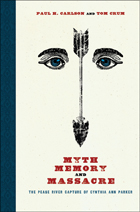 Myth, Memory, and Massacre: The Pease River Capture of Cynthia Ann Parker
Paul H. Carlson
Texas Tech University Press, 2010 In December 1860, along a creek in northwest Texas, a group of U.S. Cavalry under Sgt. John Spangler and Texas Rangers led by Sul Ross raided a Comanche hunting camp, killed several Indians, and took three prisoners. One was the woman they would identify as Cynthia Ann Parker, taken captive from her white family as a child a quarter century before. The reports of these events had implications far and near. For Ross, they helped make a political career. For Parker, they separated her permanently and fatally from her Comanche husband and two of her children. For Texas, they became the stuff of history and legend. In reexamining the historical accounts of the “Battle of Pease River,” especially those claimed to be eyewitness reports, Paul H. Carlson and Tom Crum expose errors, falsifications, and mysteries that have contributed to a skewed understanding of the facts. For political and racist reasons, they argue, the massacre was labeled a battle. Firsthand testimony was fabricated; diaries were altered; the official Ranger report went missing from the state adjutant general’s office. Historians, as a result, have unwittingly used fiction as the basis for 150 years of analysis. Carlson and Crum’s careful historiographical reconsideration seeks not only to set the record straight but to deal with concepts of myth, folklore, and memory, both individual and collective. Myth, Memory, and Massacre peels away assumptions surrounding one of the most infamous episodes in Texas history, even while it adds new dimensions to the question of what constitutes reliable knowledge.
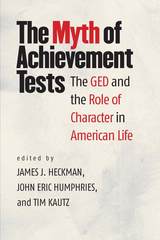 The Myth of Achievement Tests: The GED and the Role of Character in American Life
Edited by James J. Heckman, John Eric Humphries, and Tim Kautz
University of Chicago Press, 2013 Achievement tests play an important role in modern societies. They are used to evaluate schools, to assign students to tracks within schools, and to identify weaknesses in student knowledge. The GED is an achievement test used to grant the status of high school graduate to anyone who passes it. GED recipients currently account for 12 percent of all high school credentials issued each year in the United States. But do achievement tests predict success in life?
The Myth of Achievement Tests shows that achievement tests like the GED fail to measure important life skills. James J. Heckman, John Eric Humphries, Tim Kautz, and a group of scholars offer an in-depth exploration of how the GED came to be used throughout the United States and why our reliance on it is dangerous. Drawing on decades of research, the authors show that, while GED recipients score as well on achievement tests as high school graduates who do not enroll in college, high school graduates vastly outperform GED recipients in terms of their earnings, employment opportunities, educational attainment, and health. The authors show that the differences in success between GED recipients and high school graduates are driven by character skills. Achievement tests like the GED do not adequately capture character skills like conscientiousness, perseverance, sociability, and curiosity. These skills are important in predicting a variety of life outcomes. They can be measured, and they can be taught.
Using the GED as a case study, the authors explore what achievement tests miss and show the dangers of an educational system based on them. They call for a return to an emphasis on character in our schools, our systems of accountability, and our national dialogue.
Contributors
Eric Grodsky, University of Wisconsin–Madison
Andrew Halpern-Manners, Indiana University Bloomington
Paul A. LaFontaine, Federal Communications Commission
Janice H. Laurence, Temple University
Lois M. Quinn, University of Wisconsin–Milwaukee
Pedro L. Rodríguez, Institute of Advanced Studies in Administration
John Robert Warren, University of Minnesota, Twin Cities
The Myth of Analysis: Three Essays in Archetypal Psychology
James Hillman
Northwestern University Press, 1998 In this work, acclaimed Jungian James Hillman examines the concepts of myth, insights, eros, body, and the mytheme of female inferiority, as well as the need for the freedom to imagine and to feel psychic reality. By examining these ideas, and the role they have played both in and outside of the therapeutic setting, Hillman mounts a compelling argument that, rather than locking them away in some inner asylum or subjecting them to daily self-treatment, man's "peculiarities" can become an integral part of a rich and fulfilling daily life.
Originally published by Northwestern University Press in 1972, this work had a profound impact on a nation emerging self-aware from the 1960s, as well as on the era's burgeoning feminist movement. It remains a profound critique of therapy and the psychological viewpoint, and it is one of Hillman's most important and enduring works.
The Myth of Apollo and Daphne from Ovid to Quevedo: Love, Agon, and the Grotesque
Mary E. Barnard
Duke University Press, 1987 The transformation of the myth of Apollo and Daphne in literary treatments from Ovid through the Spanish Golden Age are studied in theme and variation, showing how the protean figures of the myth meant different things to different ages, each age fashioning the lovers in its own image. The Myth of Apollo and Daphne focuses on the themes of love, agon, and the grotesque and their transformations as the writers, through a kind of artificial mythopoeia, invent variants for the tale, altering the ancient model to create their new, distinctive visions.
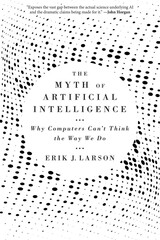 The Myth of Artificial Intelligence: Why Computers Can’t Think the Way We Do
Erik J. Larson
Harvard University Press, 2021 “Exposes the vast gap between the actual science underlying AI and the dramatic claims being made for it.” —John Horgan
“If you want to know about AI, read this book…It shows how a supposedly futuristic reverence for Artificial Intelligence retards progress when it denigrates our most irreplaceable resource for any future progress: our own human intelligence.” —Peter Thiel
Ever since Alan Turing, AI enthusiasts have equated artificial intelligence with human intelligence. A computer scientist working at the forefront of natural language processing, Erik Larson takes us on a tour of the landscape of AI to reveal why this is a profound mistake.
AI works on inductive reasoning, crunching data sets to predict outcomes. But humans don’t correlate data sets. We make conjectures, informed by context and experience. And we haven’t a clue how to program that kind of intuitive reasoning, which lies at the heart of common sense. Futurists insist AI will soon eclipse the capacities of the most gifted mind, but Larson shows how far we are from superintelligence—and what it would take to get there.
“Larson worries that we’re making two mistakes at once, defining human intelligence down while overestimating what AI is likely to achieve…Another concern is learned passivity: our tendency to assume that AI will solve problems and our failure, as a result, to cultivate human ingenuity.”
—David A. Shaywitz, Wall Street Journal
“A convincing case that artificial general intelligence—machine-based intelligence that matches our own—is beyond the capacity of algorithmic machine learning because there is a mismatch between how humans and machines know what they know.”
—Sue Halpern, New York Review of Books
The Myth of Coequal Branches: Restoring the Constitution’s Separation of Functions
David J. Siemers
University of Missouri Press, 2026 The idea that the three branches of U.S. government are equal in power is taught in classrooms, proclaimed by politicians, and referenced in the media. But, as David Siemers shows, that idea is a myth, neither intended by the Founders nor true in practice. Siemers explains how adherence to this myth normalizes a politics of gridlock, in which the action of any branch can be checked by the reaction of any other. The Founders, however, envisioned a separation of functions rather than a separation of powers. Siemers argues that this view needs to replace our current view, so that the goals set out in the Constitution’s Preamble may be better achieved.
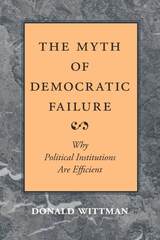 The Myth of Democratic Failure: Why Political Institutions Are Efficient
Donald A. Wittman
University of Chicago Press, 1995 This book refutes one of the cornerstone beliefs of economics and political science: that economic markets are more efficient than the processes and institutions of democratic government.
Wittman first considers the characteristic of efficient markets—informed, rational participants competing for well-defined and easily transferred property rights—and explains how they operate in democratic politics. He then analyzes how specific political institutions are organized to operate efficiently. "Markets" such as the the Congress in the United States, bureaucracies, and pressure groups, he demonstrates, contribute to efficient political outcomes. He also provides a theory of institutional design to explain how these political "markets" arise. Finally, Wittman addresses the methodological shortcomings of analyses of political market failure, and offers his own suggestions for a more effective research strategy.
Ultimately, he demonstrates that nearly all of the arguments claiming that economic markets are efficient apply equally well to democratic political markets; and, conversely, that economic models of political failure are not more valid than the analogous arguments for economic market failure.
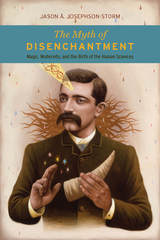 The Myth of Disenchantment: Magic, Modernity, and the Birth of the Human Sciences
Jason Ananda Josephson Storm
University of Chicago Press, 2017 A great many theorists have argued that the defining feature of modernity is that people no longer believe in spirits, myths, or magic. Jason Ā. Josephson-Storm argues that as broad cultural history goes, this narrative is wrong, as attempts to suppress magic have failed more often than they have succeeded. Even the human sciences have been more enchanted than is commonly supposed. But that raises the question: How did a magical, spiritualist, mesmerized Europe ever convince itself that it was disenchanted?
Josephson-Storm traces the history of the myth of disenchantment in the births of philosophy, anthropology, sociology, folklore, psychoanalysis, and religious studies. Ironically, the myth of mythless modernity formed at the very time that Britain, France, and Germany were in the midst of occult and spiritualist revivals. Indeed, Josephson-Storm argues, these disciplines’ founding figures were not only aware of, but profoundly enmeshed in, the occult milieu; and it was specifically in response to this burgeoning culture of spirits and magic that they produced notions of a disenchanted world.
By providing a novel history of the human sciences and their connection to esotericism, The Myth of Disenchantment dispatches with most widely held accounts of modernity and its break from the premodern past.
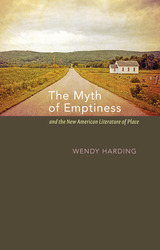 The Myth of Emptiness and the New American Literature of Place
Wendy Harding
University of Iowa Press, 2014 From the moment the first English-speaking explorers and settlers arrived on the North American continent, many have described its various locations and environments as empty. Indeed, much of American national history and culture is bound up with the idea that parts of the landscape are empty and thus open for colonization, settlement, economic improvement, claim staking, taming, civilizing, cultivating, and the exploitation of resources. In turn, most Euro-American nonfiction written about the landscape has treated it either as an object to be acted upon by the author or an empty space, unspoiled by human contamination, to which the solitary individual goes to be refreshed and rejuvenated.
In The Myth of Emptiness and the New American Literature of Place, Wendy Harding identifies an important recent development in the literature of place that corrects the misperceptions resulting from these tropes. Works by Rick Bass, Charles Bowden, Ellen Meloy, Jonathan Raban, Rebecca Solnit, and Robert Sullivan move away from the tradition of nature writing, with its emphasis on the solitary individual communing with nature in uninhabited places, to recognize the interactions of human and other-than-human presences in the land. In different ways, all six writers reveal a more historically complex relationship between Americans and their environments. In this new literature of place, writers revisit abandoned, threatened, or damaged sites that were once represented as devoid of human presence and dig deeper to reveal that they are in fact full of the signs of human activity. These writers are interested in the role of social, political, and cultural relationships and the traces they leave on the landscape.
Throughout her exploration, Harding adopts a transdisciplinary perspective that draws on the theories of geographers, historians, sociologists, and philosophers to understand the reasons for the enduring perception of emptiness in the American landscape and how this new literature of place works with and against these ideas. She reminds us that by understanding and integrating human impacts into accounts of the landscape, we are better equipped to fully reckon with the natural and cultural crisis that engulfs all landscapes today.
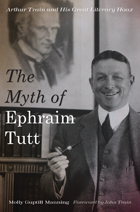 The Myth of Ephraim Tutt: Arthur Train and His Great Literary Hoax
Molly Guptill Manning
University of Alabama Press, 2012 The Myth of Ephraim Tutt explores the true and previously untold story behind one of the most elaborate literary hoaxes in American history. Arthur Train was a Harvard-educated and well-respected attorney. He was also a best-selling author. Train’s greatest literary creation was the character Ephraim Tutt, a public-spirited attorney and champion of justice.Guided by compassion and a strong moral compass, Ephraim Tutt commanded a loyal following among general readers and lawyers alike—in fact, Tutt’s fictitious cases were so well-known that attorneys, judges, and law faculty cited them in courtrooms and legal texts. People read Tutt’s legal adventures for more than twenty years, all the while believing their beloved protagonist was merely a character and that Train’s stories were works of fiction. But in 1943 a most unusual event occurred: Ephraim Tutt published his own autobiography. The possibility of Tutt’s existence as an actual human being became a source of confusion, spurring heated debates. One outraged reader sued for fraud, and the legendary lawyer John W. Davis rallied to Train’s defense. While the public questioned whether the autobiography was a hoax or genuine, many book reviewers and editors presented the book as a work of nonfiction. In The Myth of Ephraim Tutt Molly Guptill Manning explores the controversy and the impact of the Ephraim Tutt autobiography on American culture. She also considers Tutt’s ruse in light of other noted incidents of literary hoaxes, such as those ensuing from the publication of works by Clifford Irving, James Frey, and David Rorvik, among others. As with other outstanding fictitious characters in the literary canon, Ephraim Tutt took on a life of his own. Out of affection for his favorite creation, Arthur Train spent the final years of his life crafting an autobiography that would ensure Tutt’s lasting influence—and he was spectacularly successful in this endeavor. Tutt, as the many letters written to him attest, gave comfort to his readers as they faced the challenging years of the Great Depression and World War II and renewed their faith in humanity and justice. Although Tutt’s autobiography bewildered some of his readers, the great majority were glad to have read the “life” story of this cherished character.
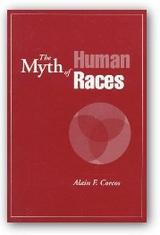 The Myth of Human Races
Alain F. Corcos
Michigan State University Press, 1997
The idea that human races exist is a socially constructed myth that has no grounding in science. Regardless of skin, hair, or eye color, stature or physiognomy, we are all of one species. Nonetheless, scientists, social scientists, and pseudo-scientists have, for three centuries, tried vainly to prove that distinctive and separate "races" of humanity exist. These protagonists of race theory have based their flawed research on one or more of five specious assumptions:
- humanity can be classified into groups using identifiable physical characteristics,
- human characteristics are transmitted "through the blood,"
- distinct human physical characteristics are inherited together,
- physical features can be linked to human behavior,
- human groups or "races" are by their very nature unequal and, therefore, they can be ranked in order of intellectual, moral, and cultural superiority.
The Myth of Human Races systematically dispels these fallacies and unravels the web of flawed research that has been woven to demonstrate the superiority of one group of people over another.
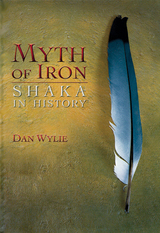 Myth of Iron: Shaka in History
Dan Wylie
Ohio University Press, 2008 Over the decades a great deal has been written about Shaka, the most famous—or infamous—of Zulu leaders. It may come as a surprise, therefore, that even the most basic facts about his life are locked in obscurity. His date of birth, what he looked like, and the circumstances of his assassination remain unknown.
Meanwhile the public image, sometimes monstrous, sometimes heroic, juggernauts on—truly a “myth of iron” that is so intriguing, so dramatic, so archetypal, and sometimes so politically useful that few have subjected it to proper scrutiny.
Myth of Iron: Shaka in History is the first book-length scholarly study of Shaka to be published. It lays out, as far as possible, all the available evidence—mainly hitherto underutilized Zulu oral testimonies, supported by other documentary sources—and decides, item by item, legend by legend, what exactly is known about Shaka’s reign. The picture that emerges in this meticulously researched and absorbing antibiography is very different from the popular narrative.
The Myth of Liberalism
John P. Safranek
Catholic University of America Press, 2015 Individual freedom looms large in political and ethical thought. Nevertheless, the theoretical foundations underlying modern liberalism continue to be contested by proponents and opponents alike. The Myth of Liberalism offers a unique contribution to this debate by following through on the often-underdeveloped suggestion that liberal principles are untenable because they are self-contradictory. By analyzing and ultimately refuting each of the proposed underpinnings of liberalism - liberty, equality, rights, privacy, autonomy, or dignity - Safranek concludes that contemporary liberalism is a myth: it is not a coherent political philosophy as much as a collection of causes masked by emotively potent political rhetoric.
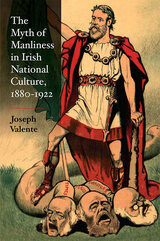 The Myth of Manliness in Irish National Culture, 1880-1922
Joseph Valente
University of Illinois Press, 2011 This study aims to supply the first contextually precise account of the male gender anxieties and ambivalences haunting the culture of Irish nationalism in the period between the Act of Union and the founding of the Irish Free State. To this end, Joseph Valente focuses upon the Victorian ethos of manliness or manhood, the specific moral and political logic of which proved crucial to both the translation of British rule into British hegemony and the expression of Irish rebellion as Irish psychomachia. The influential operation of this ideological construct is traced through a wide variety of contexts, including the career of Ireland's dominant Parliamentary leader, Charles Stewart Parnell; the institutions of Irish Revivalism--cultural, educational, journalistic, and literary; the writings of both canonical authors (Yeats, Synge, Gregory, and Joyce) and subcanonical authors (James Stephens, Patrick Pearse, Lennox Robinson); and major political movements of the time, including suffragism, Sinn Fein, Na Fianna E Éireann, and the Volunteers. The construct of manliness remains very much alive today, underpinning the neo-imperialist marriage of ruthless aggression and the sanctities of duty, honor, and sacrifice. Mapping its earlier colonial and postcolonial formations can help us to understand its continuing geopolitical appeal and danger.
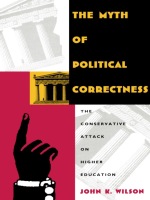 The Myth of Political Correctness: The Conservative Attack on Higher Education
John K. Wilson
Duke University Press, 1995 The classics of Western culture are out, not being taught, replaced by second-rate and Third World texts. White males are a victimized minority on campuses across the country, thanks to affirmative action. Speech codes have silenced anyone who won’t toe the liberal line. Feminists, wielding their brand of sexual correctness, have taken over. These are among the prevalent myths about higher education that John K. Wilson explodes.
The phrase "political correctness" is on everyone’s lips, on radio and television, and in newspapers and magazines. The phenomenon itself, however, has been deceptively described. Wilson steps into the nation’s favorite cultural fray to reveal that many of the most widely publicized anecdotes about PC are in fact more myth than reality. Based on his own experience as a student and in-depth research, he shows what’s really going on beneath the hysteria and alarmism about political correctness and finds that the most disturbing examples of thought policing on campus have come from the right. The image of the college campus as a gulag of left-wing totalitarianism is false, argues Wilson, created largely through the exaggeration of deceptive stories by conservatives who hypocritically seek to silence their political opponents.
Many of today’s most controversial topics are here: multiculturalism, reverse discrimination, speech codes, date rape, and sexual harassment. So are the well-recognized protagonists in the debate: Dinesh D’Souza, William Bennett, and Lynne Cheney, among others. In lively fashion and in meticulous detail, Wilson compares fact to fiction and lays one myth after another to rest, revealing the double standard that allows "conservative correctness" on college campuses to go unchallenged.
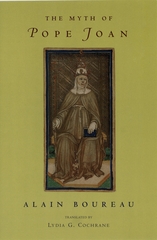 The Myth of Pope Joan
Alain Boureau
University of Chicago Press, 2001 In the ninth century, a brilliant young woman named Joan disguised herself as a man so that she could follow her lover into the then-exclusively male world of scholarship. She proved so successful that she ascended the Catholic hierarchy in Rome and was eventually elected pope. Her pontificate lasted two years, until she became pregnant and died after giving birth during a public procession from the Vatican.
Or so the legend goes—a legend that was fabricated sometime in the thirteenth century, according to Alain Boureau, and which has persisted in one form or another down to the present day. In this fascinating saga of belief and rhetoric, politics and religion, Boureau investigates the historical and ecclesiastical circumstances under which the myth of Pope Joan was constructed and the different uses to which it was put over the centuries. He shows, for instance, how Catholic clerics justified the exclusion of women from the papacy and the priesthood by employing the myth in misogynist moral tales, only to find the popess they had created turned against them in anti-Catholic propaganda during the Reformation.
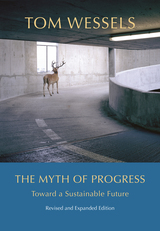 The Myth of Progress: Toward a Sustainable Future
Tom Wessels
University Press of New England, 2013 In this compelling and cogently argued book, Tom Wessels demonstrates how our current path toward progress, based on continual economic expansion and inefficient use of resources, runs absolutely contrary to three foundational scientific laws that govern all complex natural systems. It is a myth, he contends, that progress depends on a growing economy. Wessels explains his theory with his three laws of sustainability: (1) the law of limits to growth, (2) the second law of thermodynamics, which exposes the dangers of increased energy consumption, and (3) the law of self-organization, which results in the marvelous diversity of such highly evolved systems as the human body and complex ecosystems. These laws, scientifically proven to sustain life in its myriad forms, have been cast aside since the eighteenth century, first by Western economists, political pragmatists, and governments attracted by the idea of unlimited growth, and more recently by a global economy dominated by large corporations, in which consolidation and oversimplification create large-scale inefficiencies in both material and energy usage. Wessels makes scientific theory readily accessible by offering examples of how the laws of sustainability function in the complex systems we can observe in the natural world around us. He shows how systems such as forests can be templates for developing sustainable economic practices that will allow true progress. Demonstrating that all environmental problems have their source in a disregard for the laws of sustainability that is based on the myth of progress, he concludes with an impassioned argument for cultural change.
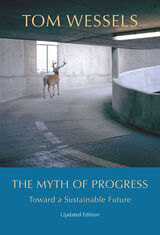 The Myth of Progress: Toward a Sustainable Future
Tom Wessels
Brandeis University Press, 2023 A powerful argument that our current path toward progress, based on continual economic expansion and inefficient use of resources, runs contrary to three foundational scientific laws.
In this compelling, cogently argued, and acclaimed book, Tom Wessels demonstrates how our current path toward progress, based on continual economic expansion and inefficient use of resources, runs contrary to three foundational scientific laws that govern all complex natural systems. It is a myth, he contends, that progress depends on a growing economy. Wessels explains his theory with his three laws of sustainability: the law of limits to growth; the second law of thermodynamics, which exposes the dangers of increased energy consumption; and the law of self-organization, which results in the marvelous diversity of such highly evolved systems as the human body and complex ecosystems. Wessels argues that these laws, scientifically proven to sustain life in its myriad forms, have been cast aside since the eighteenth century, first by Western economists, political pragmatists, and governments attracted by the idea of unlimited growth, and more recently by a global economy dominated by large corporations, in which consolidation and oversimplification have created large-scale inefficiencies in both material and energy usage.
Wessels makes scientific theory readily accessible by offering examples of how the laws of sustainability function in the complex systems we can observe in the natural world around us. Demonstrating that all environmental problems have their source in a disregard for the laws of sustainability, he concludes with an impassioned argument for cultural change. This new edition has a new preface wherein the author regards The Myth of Progress as his most important work. It has been in constant demand since it was first published in 2006.
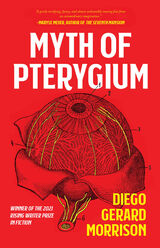 Myth of Pterygium
Diego Gerard Morrison
Autumn House Press, 2022 The story of a failed poet struggling with vision loss, personal crises, and what it means to be an arms dealer in a quasi-dystopian Mexico City.
This debut novel is set in a vaguely dystopian, yet also realistic, Mexico City—endless traffic jams, relentless clouds of pollution, economic hardships, and the ever-present threat of drug cartels. The unnamed narrator of the novel, at times referred to as Arthur—in part because of the growing similarity of his life with Arthur Rimbaud’s—struggles with the dissonance of leading an artistic life while providing for his family. A failed, penniless poet with a child on the way, he is forced to take a job in his family’s weapons dealing enterprise, which he soon discovers is connected to the corrupt Mexican armed forces and drug cartels, who are responsible for the increasing death toll in the country. All the while, the narrator struggles with a growing condition in his right eye, a pterygium, that is slowly taking over his vision, blurring the events of his life, including his wife’s complicated pregnancy, extortions by the drug cartels, and his own relationship to his writing. As the narrator gradually finds his life spiraling out of control, the novel moves quickly to a startling conclusion.
Myth of Pterygium is the winner of the 2021 Autumn House Rising Writer Prize in Fiction, selected by Maryse Meijer.
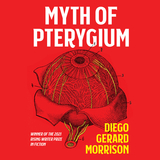 Myth of Pterygium
Diego Gerard Morrison
Autumn House Press, 2022 The story of a failed poet struggling with vision loss, personal crises, and what it means to be an arms dealer in a quasi-dystopian Mexico City.
This debut novel is set in a vaguely dystopian, yet also realistic, Mexico City—endless traffic jams, relentless clouds of pollution, economic hardships, and the ever-present threat of drug cartels. The unnamed narrator of the novel, at times referred to as Arthur—in part because of the growing similarity of his life with Arthur Rimbaud’s—struggles with the dissonance of leading an artistic life while providing for his family. A failed, penniless poet with a child on the way, he is forced to take a job in his family’s weapons dealing enterprise, which he soon discovers is connected to the corrupt Mexican armed forces and drug cartels, who are responsible for the increasing death toll in the country. All the while, the narrator struggles with a growing condition in his right eye, a pterygium, that is slowly taking over his vision, blurring the events of his life, including his wife’s complicated pregnancy, extortions by the drug cartels, and his own relationship to his writing. As the narrator gradually finds his life spiraling out of control, the novel moves quickly to a startling conclusion.
Myth of Pterygium is the winner of the 2021 Autumn House Rising Writer Prize in Fiction, selected by Maryse Meijer.
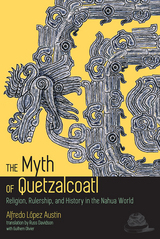 The Myth of Quetzalcoatl: Religion, Rulership, and History in the Nahua World
Alfredo López Austin
University Press of Colorado, 2015 The Myth of Quetzalcoatl is a translation of Alfredo López Austin’s 1973 book Hombre-Dios: Religión y politica en el mundo náhuatl. Despite its pervasive and lasting influence on the study of Mesoamerican history, religion in general, and the Quetzalcoatl myth in particular, this work has not been available in English until now. The importance of Hombre-Dios and its status as a classic arise from its interdisciplinary approach, creative use of a wide range of source material, and unsurpassed treatment of its subject—the nature and content of religious beliefs and rituals among the native populations of Mesoamerica and the manner in which they fused with and helped sanctify political authority and rulership in both the pre- and post-conquest periods. Working from a wide variety of previously neglected documentary sources, incorporating myth, archaeology, and the ethnography of contemporary Native Americans including non-Nahua peoples, López Austin traces the figure of Quetzalcoatl as a “Man-God” from pre-conquest times, while Russ Davidson’s translator’s note, Davíd Carrasco's foreword, and López Austin’s introduction place the work within the context of modern scholarship. López Austin’s original work on Quetzalcoatl is a pivotal work in the field of anthropology, and this long-overdue English translation will be of significance to historians, anthropologists, linguists, and serious readers interested in Mesoamerica.
 The Myth of Race: The Troubling Persistence of an Unscientific Idea
Robert Wald Sussman
Harvard University Press, 2014 Biological races do not exist—and never have. This view is shared by all scientists who study variation in human populations. Yet racial prejudice and intolerance based on the myth of race remain deeply ingrained in Western society. In his powerful examination of a persistent, false, and poisonous idea, Robert Sussman explores how race emerged as a social construct from early biblical justifications to the pseudoscientific studies of today.
The Myth of Race traces the origins of modern racist ideology to the Spanish Inquisition, revealing how sixteenth-century theories of racial degeneration became a crucial justification for Western imperialism and slavery. In the nineteenth century, these theories fused with Darwinism to produce the highly influential and pernicious eugenics movement. Believing that traits from cranial shape to raw intelligence were immutable, eugenicists developed hierarchies that classified certain races, especially fair-skinned “Aryans,” as superior to others. These ideologues proposed programs of intelligence testing, selective breeding, and human sterilization—policies that fed straight into Nazi genocide. Sussman examines how opponents of eugenics, guided by the German-American anthropologist Franz Boas’s new, scientifically supported concept of culture, exposed fallacies in racist thinking.
Although eugenics is now widely discredited, some groups and individuals today claim a new scientific basis for old racist assumptions. Pondering the continuing influence of racist research and thought, despite all evidence to the contrary, Sussman explains why—when it comes to race—too many people still mistake bigotry for science.
 The Myth of Scientific Literacy
Shamos, Morris
Rutgers University Press, 1995 Why do we make every schoolchild and college student take science? Does every American really need to be scientifically literate? In this provocative book, Morris Shamos, a physicist and science educator of very broad experience, argues that universal scientific literacy is a futile goal, and urges a critical review of the purpose of general education in science. Shamos argues that a meaningful scientific literacy cannot be achieved in the first place, and the attempt is a misuse of human resources on a grand scale. He is skeptical about forecasts of Òcritical shortfalls in scientific manpowerÓ and about the motives behind crash programs to get more young people into the science pipeline. Finally, he is convinced that, as presently taught, the vast majority of students come out of science classes with neither an intellectual grasp nor a pragmatic appreciation of science. Shamos advocates instead a practical science education curriculum that grants the impossibility of every American learning enough science to make independent judgments about major scientific issues. Rather than giving children the heavy diet of scientific terms and facts they now get, he would emphasize: an appreciation of science as an ongoing cultural enterprise; an awareness of technologyÕs impact on one's personal health, safety, and surroundings; and the need to use experts wisely in resolving science/society issues. Whether you loved or hated your science classes, you will find Morris ShamosÕs arguments about the future of science education required reading. Teachers, parents, scientists, science educators, school administrators, legislators, and science and human resources policy analysts will be especially interested in this book.
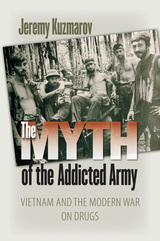 The Myth of the Addicted Army: Vietnam and the Modern War on Drugs
Jeremy Kuzmarov
University of Massachusetts Press, 2009 The image of the drug-addicted American soldier—disheveled, glassy-eyed, his uniform adorned with slogans of antiwar dissent—has long been associated with the Vietnam War. More specifically, it has persisted as an explanation for the U.S. defeat, the symbol of a demoralized army incapable of carrying out its military mission.
Yet as Jeremy Kuzmarov documents in this deeply researched book, popular assumptions about drug use in Vietnam are based more on myth than fact. Not only was alcohol the intoxicant of choice for most GIs, but the prevalence of other drugs varied enormously. Although marijuana use among troops increased over the course of the war, for the most part it remained confined to rear areas, and the use of highly addictive drugs like heroin was never as widespread as many imagined.
Like other cultural myths that emerged from the war, the concept of an addicted army was first advanced by war hawks seeking a scapegoat for the failure of U.S. policies in Vietnam, in this case one that could be linked to "permissive" liberal social policies and the excesses of the counterculture. But conservatives were not alone. Ironically, Kuzmarov shows, elements of the antiwar movement also promoted the myth, largely because of a presumed alliance between Asian drug traffickers and the Central Intelligence Agency. While this claim was not without foundation, as new archival evidence confirms, the left exaggerated the scope of addiction for its own political purposes.
Exploiting bipartisan concern over the perceived "drug crisis," the Nixon administration in the early 1970s launched a bold new program of federal antidrug measures, especially in the international realm. Initially, the "War on Drugs" helped divert attention away from the failed quest for "peace with honor" in Southeast Asia. But once institutionalized, it continued to influence political discourse as well as U.S. drug policy in the decades that followed.
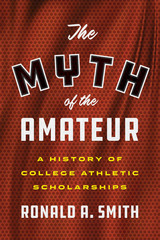 The Myth of the Amateur: A History of College Athletic Scholarships
By Ronald A. Smith
University of Texas Press, 2021 In this in-depth look at the heated debates over paying college athletes, Ronald A. Smith starts at the beginning: the first intercollegiate athletics competition—a crew regatta between Harvard and Yale—in 1852, when both teams received an all-expenses-paid vacation from a railroad magnate. This striking opening sets Smith on the path of a story filled with paradoxes and hypocrisies that plays out on the field, in meeting rooms, and in courtrooms—and that ultimately reveals that any insistence on amateurism is invalid, because these athletes have always been paid, one way or another. From that first contest to athletes’ attempts to unionize and California’s 2019 Fair Pay to Play Act, Smith shows that, throughout the decades, undercover payments, hiring professional coaches, and breaking the NCAA’s rules on athletic scholarships have always been part of the game. He explores how the regulation of male and female student-athletes has shifted; how class, race, and gender played a role in these transitions; and how the case for amateurism evolved from a moral argument to one concerned with financially and legally protecting college sports and the NCAA. Timely and thought-provoking, The Myth of the Amateur is essential reading for college sports fans and scholars.
 The Myth of the French Bourgeoisie: An Essay on the Social Imaginary, 1750-1850
Sarah Maza
Harvard University Press, 2003 Who, exactly, were the French bourgeoisie? Unlike the Anglo-Americans, who widely embraced middle-class ideals and values, the French--even the most affluent and conservative--have always rejected and maligned bourgeois values and identity.
In this new approach to the old question of the bourgeoisie, Sarah Maza focuses on the crucial period before, during, and after the French Revolution, and offers a provocative answer: the French bourgeoisie has never existed. Despite the large numbers of respectable middling town-dwellers, no group identified themselves as bourgeois. Drawing on political and economic theory and history, personal and polemical writings, and works of fiction, Maza argues that the bourgeoisie was never the social norm. In fact, it functioned as a critical counter-norm, an imagined and threatening embodiment of materialism, self-interest, commercialism, and mass culture, which defined all that the French rejected.
A challenge to conventional wisdom about modern French history, this book poses broader questions about the role of anti-bourgeois sentiment in French culture, by suggesting parallels between the figures of the bourgeois, the Jew, and the American in the French social imaginary. It is a brilliant and timely foray into our beliefs and fantasies about the social world and our definition of a social class.
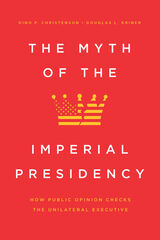 The Myth of the Imperial Presidency: How Public Opinion Checks the Unilateral Executive
Dino P. Christenson and Douglas L. Kriner
University of Chicago Press, 2020 Throughout American history, presidents have shown a startling power to act independently of Congress and the courts. On their own initiative, presidents have taken the country to war, abolished slavery, shielded undocumented immigrants from deportation, declared a national emergency at the border, and more, leading many to decry the rise of an imperial presidency. But given the steep barriers that usually prevent Congress and the courts from formally checking unilateral power, what stops presidents from going it alone even more aggressively? The answer, Dino P. Christenson and Douglas L. Kriner argue, lies in the power of public opinion.
With robust empirical data and compelling case studies, the authors reveal the extent to which domestic public opinion limits executive might. Presidents are emboldened to pursue their own agendas when they enjoy strong public support, and constrained when they don’t, since unilateral action risks inciting political pushback, jeopardizing future initiatives, and further eroding their political capital. Although few Americans instinctively recoil against unilateralism, Congress and the courts can sway the public’s view via their criticism of unilateral policies. Thus, other branches can still check the executive branch through political means. As long as presidents are concerned with public opinion, Christenson and Kriner contend that fears of an imperial presidency are overblown.
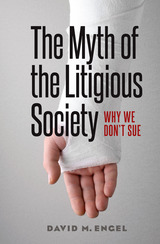 The Myth of the Litigious Society: Why We Don't Sue
David M. Engel
University of Chicago Press, 2016 Why do Americans seem to sue at the slightest provocation? The answer may surprise you: we don’t! For every “Whiplash Charlie” who sees a car accident as a chance to make millions, for every McDonald’s customer to pursue a claim over a too-hot cup of coffee, many more Americans suffer injuries but make no claims against those responsible or their insurance companies. The question is not why Americans sue but why we don’t sue more often, and the answer can be found in how we think about injury and personal responsibility.
With this book, David M. Engel demolishes the myth that America is a litigious society. The sobering reality is that the vast majority of injury victims—more than nine out of ten—rely on their own resources, family and friends, and government programs to cover their losses. When real people experience serious injuries, they don’t respond as rational actors. Trauma and pain disrupt their thoughts, and potential claims are discouraged by negative stereotypes that pervade American television and popular culture. (Think Saul Goodman in Breaking Bad, who keeps a box of neck braces in his office to help clients exaggerate their injuries.) Cultural norms make preventable injuries appear inevitable—or the victim’s fault. We’re taught to accept setbacks stoically and not blame someone else. But this tendency to “lump it” doesn’t just hurt the victims; it hurts us all. As politicians continue to push reforms that miss the real problem, we risk losing these claims as a way to quickly identify unsafe products and practices. Because injuries disproportionately fall on people with fewer resources, the existing framework creates a social underclass whose needs must be met by government programs all citizens shoulder while shielding those who cause the harm.
It’s time for America to have a more responsible, blame-free discussion about injuries and the law. With The Myth of the Litigious Society, Engel takes readers clearly and powerfully through what we really know about injury victims and concludes with recommendations for how we might improve the situation.
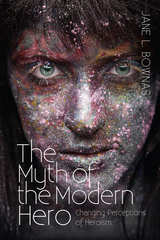 The Myth of the Modern Hero: Changing Perceptions of Heroism
Jane L. Bownas
Sussex Academic Press, 2022 The idea of the hero originates in myths from the distant past and has been applied to many different concepts in different societies, cultures and historical time periods. As a mythical signifier the meaning of the word 'hero' changes according to the intentions of the user, and this study examines some of the ways in which heroic myths have been created, either to justify the actions of those in power or to produce an imaginary ideal to which the majority can aspire. The warrior heroes of Greek legend fighting for individual glory and honour have little in common with the soldiers fighting in the wars of the twentieth century, resulting in the creation of a new hero myth, that of the patriotic, dutiful and obedient soldier. As a result of wars and the emergence of new states there is a need for new myths depicting heroes who fight and if necessary die in order to defend their nation. Heroic myths are important for those seeking power and this study considers the extent to which Germanic myths played a part in the emergence of Hitler as a 'heroic' leader. In recent times the idea of the hero with which people most readily identify is the 'extreme altruist' someone who is ready to risk their own life to save the life of another person. The possible origins of and reasons for such behaviour are examined. All humans possess the potential to act in ways which might be considered to be heroic, even when this involves living an ordinary life with courage and endurance.
|
|


